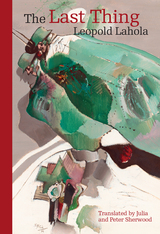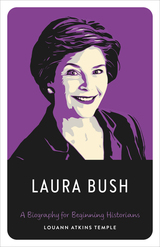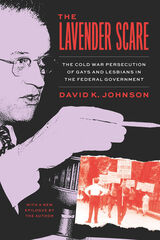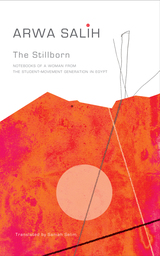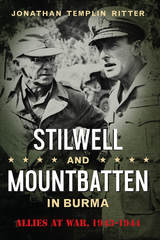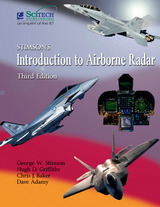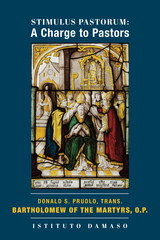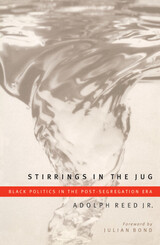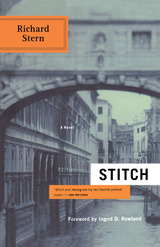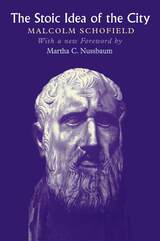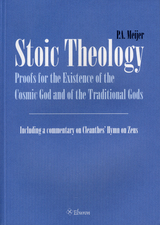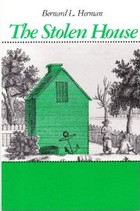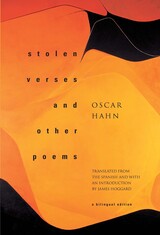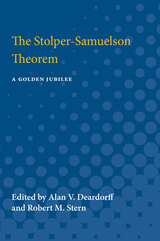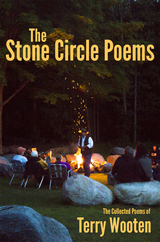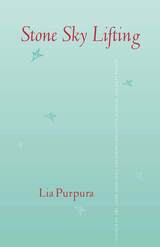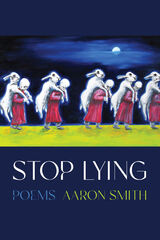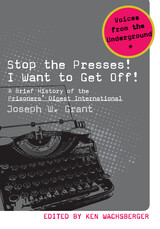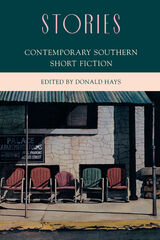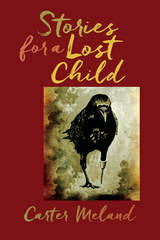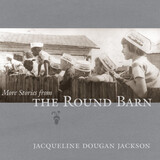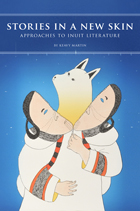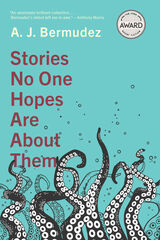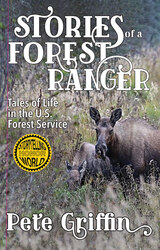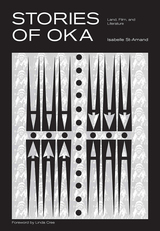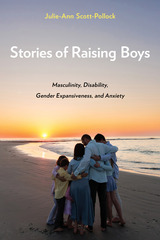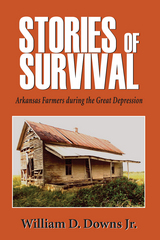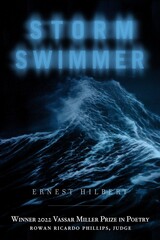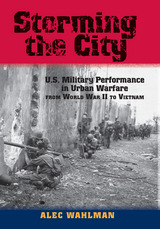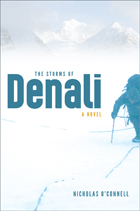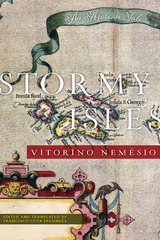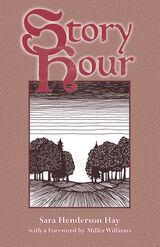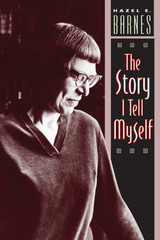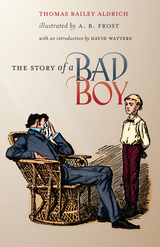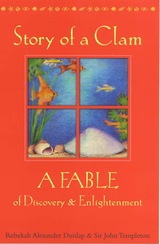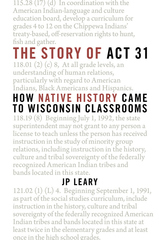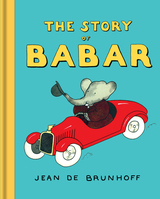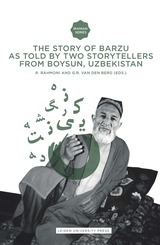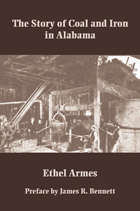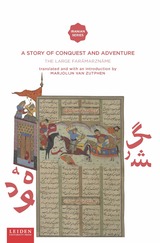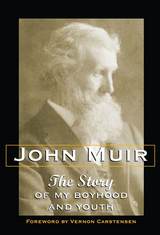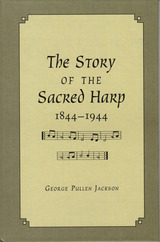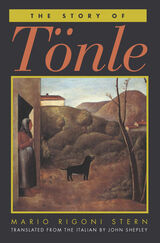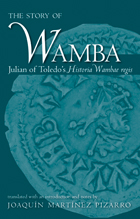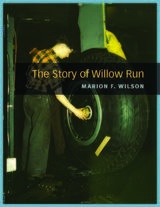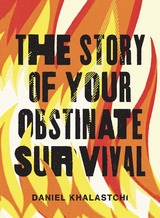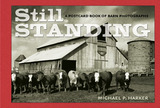 Still Standing: A Postcard Book of Barn Photographs
Michael P. Harker
University of Iowa Press, 2006 The result of a seven-and-a-half-year undertaking to document Iowa's barns and all they represent, Harker's Barns: Visions of an American Icon featured seventy-five stunning black-and-white photographs by Michael Harker. An impressive and well-received collection, the book helped preserve the glory of one of rural America's most elemental icons. Still Standing, a postcard book of thirty of Harker's barn photographs---some from Harker's Barns, some previously unseen---continues that mission of preservation. Printed on heavy card stock and perforated for easy removal, the cards showcase midwestern barns-from square to round, wood to brick, Dutch to Swedish, occupied or abandoned, all symbolizing a passing way of life that was once the lifeblood of Iowa and the Midwest. As barns continue to disappear, these images will endure. “Barns Again! Celebrating an American Icon,” an exhibit of Harker's barn photos (with text by Loren Horton) sponsored by Humanities Iowa and organized by the Smithsonian Institution's Traveling Exhibition Service and the National Building Museum, with assistance from the National Trust for Historic Preservation, is currently touring Iowa.
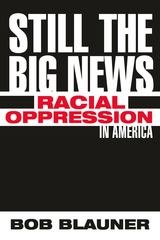 Still The Big News: Racial Oppression In America
Bob Blauner
Temple University Press, 2001 For more than thirty years, Bob Blauner's incisive writing on race relations has drawn a wide and varied audience. Whether his topic is the Watts riots in 1965, Chicano culture, or the tension between Blacks and Jews, his work is remarkable for its originality and candor. Beginning with the key essays of his landmark book, Racial Oppression in America, this volume makes the case that race and racism still permeate every aspect of American experience.
Blauner launched his concept of internal colonialism in the turbulent 1960's, a period in which many Americans worried that racial conflicts would propel the country into another civil war. The notion that the systematic oppression of people of color in the United States resembles the situation of colonized populations in Third World countries still informs much of the academic research on race as well as public discourse. Indeed, today's critical race and whiteness studies are deeply indebted to Blauner's work on internal colonialism and the pervasiveness of white privilege. Offering a radical perspective on the United States' racial landscape, Bob Blauner forcefully argues that we ignore the persistence of oppression and our continuing failure to achieve equality at our own peril.
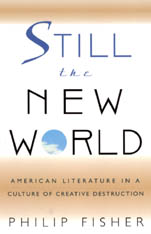 Still the New World: American Literature in a Culture of Creative Destruction
Philip Fisher
Harvard University Press, 1999 In this bold reinterpretation of American culture, Philip Fisher describes generational life as a series of renewed acts of immigration into a new world. Along with the actual flood of immigrants, technological change brings about an immigration of objects and systems, ways of life and techniques for the distribution of ideas.
A provocative new way of accounting for the spirit of literary tradition, Still the New World makes a persuasive argument against the reduction of literature to identity questions of race, gender, and ethnicity. Ranging from roughly 1850 to 1940, when, Fisher argues, the American cultural and economic system was set in place, the book reconsiders key works in the American canon--from Emerson, Whitman, and Melville, to Twain, James, Howells, Dos Passos, and Nathanael West, with insights into such artists as Winslow Homer and Thomas Eakins. With striking clarity, Fisher shows how these artists created and recreated a democratic poetics marked by a rivalry between abstraction, regionalism, and varieties of realism--and in doing so, defined American culture as an ongoing process of creative destruction.
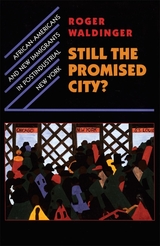 Still the Promised City?: African-Americans and New Immigrants in Postindustrial New York
Roger Waldinger
Harvard University Press, 1996 Still the Promised City? addresses the question of why African-Americans have fared so poorly in securing unskilled jobs in the postwar era and why new immigrants have done so well. Does the increase in immigration bear some responsibility for the failure of more blacks to rise, for their disappearance from many occupations, and for their failure to establish a presence in business?
The two most popular explanations for the condition of blacks invoke the decline of manufacturing in New York and other major American cities: one claims that this decline has closed off job opportunities for blacks that were available for earlier immigrants who lacked skills and education; the other emphasizes "globalization"--the movement of manufacturing jobs offshore to areas with lower labor costs. But Roger Waldinger shows that these explanations do not fit the facts. Instead, he points out that a previously overlooked factor--population change--and the rapid exodus of white New Yorkers created vacancies for minority workers up and down the job ladder. Ethnic succession generated openings both in declining industries, where the outward seepage of whites outpaced the rate of job erosion, and in growth industries, where whites poured out of bottom-level positions even as demand for low-level workers increased. But this process yielded few dividends for blacks, who saw their share of the many low-skilled jobs steadily decline. Instead, advantage went to the immigrants, who exploited these opportunities by expanding their economic base.
Waldinger explains these disturbing facts by viewing employment as a queuing process, with the good jobs at the top of the job ladder and the poor ones at the bottom. As economic growth pulls the topmost ethnic group up the ladder, lower-ranking groups seize the chance to fill the niches left vacant. Immigrants, remembering conditions in the societies they just left, are eager to take up the lower-level jobs that natives will no longer do. By contrast, African-Americans, who came to the city a generation ago, have job aspirations similar to those of whites. But the niches they have carved out, primarily in the public sector, require skills that the least educated members of their community do not have. Black networks no longer provide connections to the lower-level jobs, and relative to the newcomers, employers find unskilled blacks to be much less satisfactory recruits. The result is that a certain number of well-educated blacks have good middle-class jobs, but many of the less educated have fallen back into an underclass. Grim as this analysis is, it points to a deeper understanding of America's most serious social problem and offers fresh approaches to attacking it.
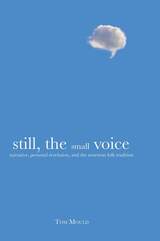 Still, the Small Voice: Narrative, Personal Revelation, and the Mormon Folk Tradition
Tom Mould
Utah State University Press, 2011 Memorates—personal experience narratives of encounters with the supernatural—that recount individuals’ personal revelations, primarily through the Holy Ghost, are a pervasive aspect of the communal religious experience of Mormons, members of the Church of Jesus Christ of Latter-day Saints. In accordance with current emphases in folklore studies on narrative and belief, Tom Mould uses ethnographic research and an emic approach that honors the belief systems under study to analyze how people within Mormon communities frame and interpret their experiences with the divine through the narratives they share. In doing so, he provides a significant new ethnographic interpretation of Mormon culture and belief and also applies his findings directly to broader scholarly folklore discourse on performance, genre, personal experience narrative, belief, and oral versus written traditions.
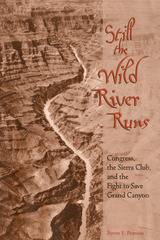 Still the Wild River Runs: Congress, the Sierra Club, and the Fight to Save Grand Canyon
Byron E. Pearson
University of Arizona Press, 2002 Between 1963 and 1968, environmentalists were outraged when western water interests sought to construct two dams in Grand Canyon as part of the Central Arizona Project. The Sierra Club led a national campaign opposed to the project, which most environmental historians credit with defeating the dams. In the wake of its victory, the Sierra Club has been lauded as the savior of Grand Canyon. Byron Pearson now takes a closer look at history to show that the Sierra Club's ability to mobilize public opinion did not appreciably influence Congress, where the issue was actually decided. When Arizona congressman Stewart Udall became Interior Secretary in 1960, he promoted a plan to import water from the Pacific Northwest to California in order to placate that state's opposition to the CAP with its proposed dams. When this support dissolved in the face of resistance from Washington senator Henry Jackson, who chaired the Senate Interior Committee, the pragmatic Udall sought passage of a bare-bones CAP bill without the dams before he and Arizona senator Carl Hayden retired. Despite this congressional deal-making, the Sierra Club received credit for blocking the dams and was propelled to the undisputed leadership of the environmental movement. Using the myth that it had saved the Canyon, the club transformed its image of power into real political influence after Congress passed the National Environmental Policy Act in 1970, giving environmental advocates access to the policy-making process for the first time. In revealing how the Sierra Club played a much lesser role in blocking the dams than they would have had the public believe, Pearson contrasts the ways in which the controversy unfolded in the court of public opinion versus the actual political process. He takes readers into congressional chambers and conference rooms, reconstructing the legislative process to convey the full flavor of this political give-and-take. Based on research in archives from all over the country, Still the Wild River Runs will itself be a subject of controversy as it challenges long-standing notions about the power of environmental lobbies. By putting this chain of historical events in clearer perspective, it can give citizens concerned with future causes a better understanding of the political process and what really moves it.
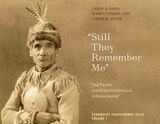 "Still They Remember Me": Penobscot Transformer Tales, Volume 1
Carol A. Dana, Margo Lukens, and Conor M. Quinn
University of Massachusetts Press, 2021 Newell Lyon learned the oral tradition from his elders in Maine's Penobscot Nation and was widely considered to be a "raconteur among the Indians." The thirteen stories in this new volume were among those that Lyon recounted to anthropologist Frank Speck, who published them in 1918 as Penobscot Transformer Tales. Transcribed for the first time into current Penobscot orthography and with a new English translation, this instructive and entertaining story cycle focuses on the childhood and coming-of-age of Gluskabe, the tribe's culture hero. Learning from his grandmother Woodchuck, Gluskabe applies lessons that help shape the Wabanaki landscape and bring into balance all the forces affecting human life. These tales offer a window into the language and culture of the Penobscot people in the early twentieth century.
In "Still They Remember Me," stories are presented in the Penobscot language and English side-by-side, coupled with illustrations from members of the tribal community. For the first time, these stories are accessible to a young generation of Penobscot language learners and scholars of Native American literatures at all levels, from grade school to graduate school.
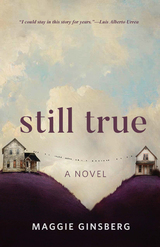 Still True
Maggie Ginsberg
University of Wisconsin Press, 2022 One summer evening, Lib Hanson is confronted by her painful past when Matt Marlow, the forty-year-old son she abandoned as an infant, shows up on her porch. Fiercely independent, Lib has never revealed her son’s existence—or her previous marriage—to her husband, Jack. Married nearly three decades but living in separate houses (to the confusion but acceptance of their neighbors), they enjoy an ease and comfort together in small-town Anthem, Wisconsin. But Jack is a stickler for honesty, and Lib’s long-dormant secret threatens to unravel their lives.
When ten-year-old Charlie Taylor arrives at Jack’s workshop shortly thereafter, he’s not the first kid in town to need help with a flat tire, and Jack gladly makes the repair to his bike. The Taylors are new to Anthem, and Jack soon discovers that Charlie and his mom, Claire, are struggling to fit in, even as Charlie’s dad, Dan, is thriving in his new job. Extending friendship and kindness, as well as introductions around the local café, Jack assumes a grandfatherly role. What he doesn’t see is the drinking that Claire hides from everyone, or the secret son that Lib has allowed to move into her house and the growing attraction between Claire and Matt. When the terrible events of a fateful evening threaten everyone’s carefully crafted lives, Jack, Lib, and their new friends must each determine the value of truth for the ones they love.
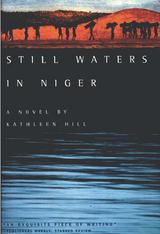 Still Waters in Niger
Kathleen Hill
Northwestern University Press, 2001 A New York Times Notable Book for 1999
Best Fiction of 1999, the Los Angeles Times Book Review
Starred review, Publishers Weekly
Finalist for 1998 Dublin IMPAC Literary Award The narrator of this book is an Irish-American woman who returns to the West African country of Niger where she had lived seventeen years earlier as the wife of an academic and the mother of three young daughters. Now she is visiting her eldest daughter, Zara, who has herself returned to Africa during a season of devastating drought and is working in a village clinic that cares for women and children suffering from starvation. Still Waters in Niger is a beautifully observed account of a return to a place at once exotic and familiar, as well as a tale of inner discovery. As the narrator reacquaints herself with her daughter and with the Africa of her past, she meets other mothers and their children. With her own memories of young motherhood strong, she becomes aware of the strikingly similar ways in which the impassioned and often difficult bonds between mothers and daughters are revealed across the divide of cultures. Hill paints a compelling portrait of a community of women grounded in kinship and care for their children, a society characterized not only by pain and exhaustion but by humor, delicacy, and strength. Filled with vivid, elegant descriptions and meditations on hunger, poverty, the desert, women, memory, and the love between mothers and daughters, Still Waters in Niger is the haunting story of a woman looking simultaneously backward and forward.
The Stillborn: Notebooks of a Woman from the Student-Movement Generation in Egypt
Arwa Salih
Seagull Books, 2017 Arwa Salih was a member of the political bureau of the Egyptian Communist Workers Party, which was founded in the wake of the Arab–Israeli War and the Egyptian student movement of the early 1970s. Written more than a decade after Salih quit the party and left political life—and published shortly after she committed suicide—the book offers a poignant look at, and reckoning with, the Marxism of her generation and the role of militant intellectuals in the tragic failure of both the national liberation project and the communist project in Egypt. The powerful critique in The Stillborn speaks not only to and about Salih’s own generation of left activists but also to broader, still salient dilemmas of revolutionary politics throughout the developing world in the postcolonial era.
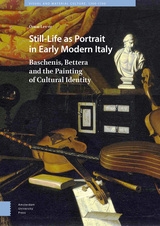 Still-Life as Portrait in Early Modern Italy: Baschenis, Bettera and the Painting of Cultural Identity
Ornat Lev-er
Amsterdam University Press, 2019 Still-Life as Portrait in Early Modern Italy centers on the still-life compositions created by Evaristo Baschenis and Bartolomeo Bettera, two 17th-century painters living and working in the Italian city of Bergamo. This highly original study explores how these paintings form a dynamic network in which artworks, musical instruments, books, and scientific apparatuses constitute links to a dazzling range of figures and sources of knowledge. Putting into circulation a wealth of cultural information and ideas and mapping a complex web of social and intellectual relations, these works paint a portrait of both their creators and their patrons, while enacting a lively debate among humanist thinkers, aristocrats, politicians, and artists. The unique contribution of this groundbreaking study is that it identifies for the first time these intellectually rich concepts that arise from these fascinating still-life paintings, a genre considered as "low". Engaging with literary blockbusters and banned books, theatrical artifice and music, and staging a war among the arts, Baschenis and Bettera capture the latest social intrigues, political rivalries, intellectual challenges, and scientific innovations of their time. In doing so, they structure an unstable economy of social, aesthetic, and political values that questions the notion of absolute truth, while probing the distinctions between life and artifice, meaningless marks and meaningful signs.
Stimson's Introduction to Airborne Radar
George W. Stimson
The Institution of Engineering and Technology, 2014 Completely modernized, greatly expanded, but retaining all the magic of the 2nd edition, Introduction to Airborne Radar has been brought into the 21st century without losing the hallmarks that made George Stimson's previous editions unique. Every chapter has been updated to reflect the constant transformations in radar technology and end-of-chapter exercises have also been added, improving its employment as a textbook.
Stimulus Pastorum: A Charge to Pastors
Bartholomew of the Martyrs, O.P.
St. Augustine's Press, 2022 The work of St. Bartholomew of Braga, O.P. (1514–1590) appears here in English for the first time despite its long and enduring influence in ecclesiastical circles. His meditations on the office of pastor have provided critical insight bishops since their initial circulation and have helped form the most famous among them, including Bartholomew's proteges Charles Borromeo. Pope Paul VI ordered a copy of Bartholomew's work to be distributed among the Catholic bishops at the Second Vatican Council. Donald Prudlo's translation situates St. Bartholomew of the Martyrs in his historical context as a lynchpin of Catholic Reform and affirms him as a figurehead of pastoral administration even in our own times.
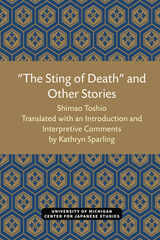 “The Sting of Death” and Other Stories
Shimao Toshio; Translated with an Introduction and Interpretive Comments by Kathryn Sparling
University of Michigan Press, 1985 Until a recent “boom,” Shimao Toshio, writer of short fiction, critic, and essayist, was not widely known, even in Japan. He has never won the Akutagawa or the Naoki Prize, and none of his works had previously appeared in English translation. He is less well known than other writers (Yasuoka Shotaro, Kojima Nobuo, and Shono Junzo) with whom he has associated and whose works have been liberally translated into English. Yet, there are those who consider him to be one of the best contemporary writers in Japan. This volume by no means exhausts the scope of Shimao's fiction. There are no stories here, for instance, about childhood or student life, and none of his many travel stories. Some of his most famous stories-- "When we Never Left Port," for example--have not been included. But the stories presented here do offer a considerable variety of style, from the pristine storybook language of "The Farthest Edge of the Islands," to the young intellectual's jargon of "Everyday Life in a Dream," to the visionary, hysterical, occasionally ritualistic prose of the "sick wife" stories, to the sober, difficult, almost ponderous narration of "This Time That Summer." Shimao's approach to his material varies as well. "Everyday Life in a Dream" is the only representative here of a large number of stories usually called surrealistic by the critics, stories whose plots progress by the logic of dreams. The individual experience of real life are lived through a combination of conscious and unconscious perception. These stories are the least approachable and the least charming to the casual reader, but they serve, among other things, to highlight patterns in the more realistic fiction. "The Farthest Edge of the Islands" is a symbolic heightening of reality in another way, a romantic fairy tale beginning at the extremity of experience, at the farthest edge of the world. The other stories are presented as precise, close chronicles of reality by a participant in that reality whose attention never waivers and who never allows himself to avert his eyes from a world that he sees as his responsibility and in a sense his fault. All but the first story, "The Farthest Edge of the Islands," which is in third-person narration, are told in the first person by the character who plays Shimao's role in the life that inspired the fiction.
 Stinging Trees and Wait-a-Whiles: Confessions of a Rainforest Biologist
William Laurance
University of Chicago Press, 2000 The last traces of Australia's tropical rainforest, where the southeasterly winds bring rain to the coastal mountains, contain a unique assemblage of plants and animals, some primitive, many that are found nowhere else on earth. And fifteen years ago, they also contained Bill Laurance, a budding ecologist seduced by the nature of the landscape in north Queensland. Laurance isn't your typical scientist: he wears cut-offs instead of white coats, enjoys the occasional food fight, and isn't afraid to speak his mind, even if it gets him into trouble, as it often did in the Australian rainforest and as he recounts in his marvelous Queensland journal Stinging Trees and Wait-a-Whiles.
The book is his record of the time he spent in this remote area and his run-ins with plant, animal, and human species alike. Laurance lived in a tiny town of loggers and farmers, and he witnessed firsthand the impact of conservation issues on individual lives. He found himself at the center of a bitter battle over conservation strategies and became not only the subject of small-town gossip but also the object of many residents' hatred. Keeping ahead of his high-spirited young volunteers, hounded by the drug-sniffing local policeman, and all the while trying to further his own research amid natural and unnatural obstacles, Laurance offers us a personal and hilarious account of fieldwork and life in the Australian outpost of Millaa Millaa. Stinging Trees and Wait-a-Whiles is a biology lesson, a conservation primer, and an utterly energetic story about an impressionable young man who wound up at the epicenter of an issue that tore a small town apart.
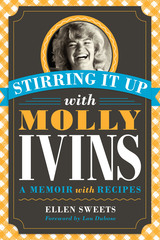 Stirring It Up with Molly Ivins: A Memoir with Recipes
By Ellen Sweets
University of Texas Press, 2011 You probably knew Molly Ivins as an unabashed civil libertarian who used her rapier wit and good ole Texas horse sense to excoriate political figures she deemed unworthy of our trust and respect. But did you also know that Molly was one helluva cook? And we're not just talking chili and chicken-fried steak, either. Molly Ivins honed her culinary skills on visits to France—often returning with perfected techniques for saumon en papillote or delectable clafouti aux cerises. Friends who had the privilege of sharing Molly's table got not only a heaping helping of her insights into the political shenanigans of the day, but also a mouth-watering meal, prepared from scratch with the finest ingredients and assembled with the same meticulous attention to detail that Molly devoted to skewering a political recalcitrant. In Stirring It Up with Molly Ivins, her longtime friend, fellow reporter, and frequent sous-chef Ellen Sweets takes us into the kitchen with Molly and introduces us to the private woman behind the public figure. She serves up her own and others' favorite stories about Ivins as she recalls the fabulous meals they shared, complete with recipes for thirty-five of Molly's signature dishes. These stories reveal a woman who was even more fascinating and complex than the "professional Texan" she enjoyed playing in public. Friends who ate with Molly knew a cultured woman who was a fluent French speaker, voracious reader, rugged outdoors aficionado, music lover, loyal and loving friend, and surrogate mom to many of her friends' children, as well as to her super-spoiled poodle. They also came to revere the courageous woman who refused to let cancer stop her from doing what she wanted, when she wanted. This is the Molly you'll be delighted to meet in Stirring It Up with Molly Ivins.
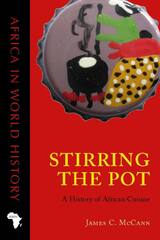 Stirring the Pot: A History of African Cuisine
James C. McCann
Ohio University Press, 2009 Africa’s art of cooking is a key part of its history. All too often Africa is associated with famine, but in Stirring the Pot, James C. McCann describes how the ingredients, the practices, and the varied tastes of African cuisine comprise a body of historically gendered knowledge practiced and perfected in households across diverse human and ecological landscape. McCann reveals how tastes and culinary practices are integral to the understanding of history and more generally to the new literature on food as social history. Stirring the Pot offers a chronology of African cuisine beginning in the sixteenth century and continuing from Africa’s original edible endowments to its globalization. McCann traces cooks’ use of new crops, spices, and tastes, including New World imports like maize, hot peppers, cassava, potatoes, tomatoes, and peanuts, as well as plantain, sugarcane, spices, Asian rice, and other ingredients from the Indian Ocean world. He analyzes recipes, not as fixed ahistorical documents,but as lively and living records of historical change in women’s knowledge and farmers’ experiments. A final chapter describes in sensuous detail the direct connections of African cooking to New Orleans jambalaya, Cuban rice and beans, and the cooking of African Americans’ “soul food.” Stirring the Pot breaks new ground and makes clear the relationship between food and the culture, history, and national identity of Africans.
Stitch
Richard Stern
Northwestern University Press, 2004 Set against the splendor of Venice, Stitch is the moving story of the meeting between a group of Americans and a world-famous sculptor. Stitch, a character whom certain critics have recognized as one of the most remarkable portraits of Ezra Pound, is a man who has shaped and been shaped by the most profound intellectual and political experiences of the 20th century. What the Americans learn from him comprises the brilliant center of this novel.
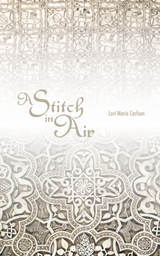 A Stitch in Air: A Novel
Lori Marie Carlson
Texas Tech University Press, 2013
The venerable Convent of Saint Margaret in Granada is the stage for many things: Catholic devotion, the art of lacemaking, magic, and amorous passion. It is The Golden Age in Spain, that glorious time of creativity, as well as ambiguity. And the beautiful Moorish palace, the Alhambra, adds a special enchantment to the backdrop.
Adela, a young postulant of Jewish origin, suffers the death of her Mozarabic teacher, Milagros, at the beginning of this tale. But Milagros leaves her beloved pupil with a legacy of secrets that will guide her as she meets the challenges of adulthood. When Adela encounters the great playwright, Hernán de Vigo who, unbeknownst to the sisterhood, has come to the convent by order of the Inquisition to investigate claims of heresy, her life changes forever. Hernán de Vigo, who is also a priest, discovers that the convent is a most unusual place. Many of its inhabitants are disgruntled nuns who find solace and comfort in delicious food and frivolity, the protection of the Virgin Mary, and dreams of love. The abbess, herself, is a most independent-minded woman who fervently believes in justice. And so the drama and comedy begin!
When all hell breaks loose—including a major flood in the convent—the sisterhood of Saint Margaret discovers its true purpose on earth.
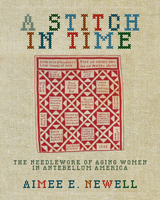 A Stitch in Time: The Needlework of Aging Women in Antebellum America
Aimee E. Newell
Ohio University Press, 2014 Drawing from 167 examples of decorative needlework—primarily samplers and quilts from 114 collections across the United States—made by individual women aged forty years and over between 1820 and 1860, this exquisitely illustrated book explores how women experienced social and cultural change in antebellum America. The book is filled with individual examples, stories, and over eighty fine color photographs that illuminate the role that samplers and needlework played in the culture of the time. For example, in October 1852, Amy Fiske (1785–1859) of Sturbridge, Massachusetts, stitched a sampler. But she was not a schoolgirl making a sampler to learn her letters. Instead, as she explained, “The above is what I have taken from my sampler that I wrought when I was nine years old. It was w[rough]t on fine cloth [and] it tattered to pieces. My age at this time is 66 years.” Situated at the intersection of women’s history, material culture study, and the history of aging, this book brings together objects, diaries, letters, portraits, and prescriptive literature to consider how middle-class American women experienced the aging process. Chapters explore the physical and mental effects of “old age” on antebellum women and their needlework, technological developments related to needlework during the antebellum period and the tensions that arose from the increased mechanization of textile production, and how gift needlework functioned among friends and family members. Far from being solely decorative ornaments or functional household textiles, these samplers and quilts served their own ends. They offered aging women a means of coping, of sharing and of expressing themselves. These “threads of time” provide a valuable and revealing source for the lives of mature antebellum women. Publication of this book was made possible in part through generous funding from the Coby Foundation, Ltd and from the Quilters Guild of Dallas, Helena Hibbs Endowment Fund.
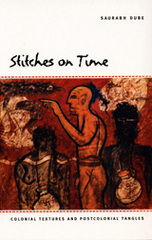 Stitches on Time: Colonial Textures and Postcolonial Tangles
Saurabh Dube
Duke University Press, 2004 Destined to become a key work of subaltern studies and a crucial intervention in postcolonial scholarship, Stitches on Time probes the relationships between empire and modernity, nation and history, the colonial and the postcolonial, and power and difference. Saurabh Dube combines history and anthropology to provide critical understandings of the theory and practice of historical ethnography and contemporary historiography. Drawing on extensive archival research and innovative fieldwork as well as political economy and social theory—including considerations of gender—he unpacks the implications of specific Indian pasts from the middle of the nineteenth century through the end of the twentieth century. Dube provides incisive accounts of the interactions between North American evangelical missionaries and Christian converts of central India, and between colonial legal systems and Indian popular laws. He reflects on the difficulties of history writing by considering the production and reception of recent Hindu nationalist histories. Assessing the work of the South Asian Subaltern Studies Collective, he offers substantial critical readings of major writings by Ranajit Guha, Dipesh Chakrabarty, Partha Chatterjee, and others. Dube develops the concept and practice of a “history without warranty” as a means of rigorously rethinking categories such as modernity, colonialism, the West, the postcolonial, and the nation.
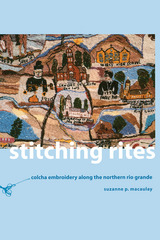 Stitching Rites: Colcha Embroidery along the Northern Rio Grande
Suzanne P. MacAulay
University of Arizona Press, 2000 In the San Luis Valley of southern Colorado, there thrives a folk tradition with links to both the past and future. Colcha embroidery is a traditional Spanish colonial style of textile, bed covering, or wall hanging dating from the early nineteenth century. In the first book to consider this craft, Suzanne MacAulay provides a detailed account of this folk art tradition that is both old and constantly renewing itself, presenting a sensitive portrayal of artists and the contexts in which they live and work. Stitching Rites reveals how art, history, and memory interweave in a rich creative web. Based on archival research and on extensive interviews with artists, the book reveals the personal motivations of the embroiderers and their relationships with their work, with each other, with their community, and with outsiders. Through stitchers like Josephine Lobato and the San Luis Ladies Sewing Circle, MacAulay shows how colcha creation is bound up in a perpetual round of cultural commentary and self-reflection. MacAulay includes detailed descriptions of changes in stitching techniques, themes, and styles to show the impact of a wide range of outside influences on the lives of the artists and on the art form. She also provides a discussion of New Mexican Carson colchas and their place in the collector market. By focusing on the individual creative act, she shows how colcha embroidery is used to record how a stitcher's memories of her life are intertwined with the history of her community. Through this picture of a community of embroiderers, MacAulay helps us to understand their stitching rites and sheds new light on the relationship between Hispanic and Anglo cultures.
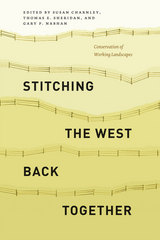 Stitching the West Back Together: Conservation of Working Landscapes
Edited by Susan Charnley, Thomas E. Sheridan, and Gary P. Nabhan
University of Chicago Press, 2014 News headlines would often have us believe that conservationists are inevitably locked in conflict with the people who live and work on the lands they seek to protect. Not so. Across the western expanses of the United States, conservationists, ranchers, and forest workers are bucking preconceptions to establish common ground. As they join together to protect the wide open spaces, diverse habitats, and working landscapes upon which people, plants, and animals depend, a new vision of management is emerging in which the conservation of biodiversity, ecosystem integrity, and sustainable resource use are seen not as antithetical, but as compatible, even symbiotic goals.
Featuring contributions from an impressive array of scientists, conservationists, scholars, ranchers, and foresters, Stitching the West Back Together explores that expanded, inclusive vision of environmentalism as it delves into the history and evolution of Western land use policy and of the working landscapes themselves. Chapters include detailed case studies of efforts to promote both environmental and economic sustainability, with lessons learned; descriptions of emerging institutional frameworks for conserving Western working landscapes; and implications for best practices and policies crucial to the future of the West’s working forests and rangelands. As economic and demographic forces threaten these lands with fragmentation and destruction, this book encourages a hopeful balance between production and conservation on the large, interconnected landscapes required for maintaining cultural and biological diversity over the longterm.
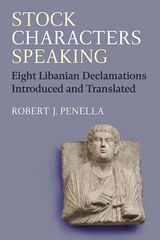 Stock Characters Speaking: Eight Libanian Declamations Introduced and Translated
Robert J. Penella
University of Michigan Press, 2023 Declamations were composed and orally delivered in the Roman Empire by sophists, or teachers of rhetoric, of whom the Greek-speaking Libanius was one of the most distinguished. Stock Characters Speaking may be thought of as emerging from three developments of recent decades: an explosive interest in late antiquity, a newly sympathetic interest in rhetoric (including ancient declamation), and a desire to bring Libanius’s massive corpus into English and other modern languages. In this book, author Robert J. Penella translates eight of Libanius’s declamations: 29, 30, 34, 35, 37, 45, 46, 47, and, in an appendix, the thirteenth-century Gregory of Cyprus’s response to Declamation 34. Each translation is accompanied by an introduction, in which Penella examines the themes, structure, and the stasis, or key issue, of the declamations. Figures who appear in the translated declamations include a parasite who has lost his patron, a man envious of his rich neighbor, a miser’s son, a poor man willing to die for his city, a rich war-hero accused of aiming at tyranny, and a convict asking for exile. Three of these declamations have appeared in German; otherwise, these translations are the first into a modern language.
The Stockholm Bloodbath of 1520: Context and Commemoration
Heiko Droste
Amsterdam University Press, 2025 The Stockholm Bloodbath on November 7–9, 1520, during which Kristian II had more than 100 persons executed on charges of heresy, is a turning point in the history of the Northern kingdoms. This bloodbath eventually led to Kristian II’s lifelong incarceration, the rise of the Swedish Vasa dynasty, and the end of the Kalmar Union. It has commonly been perceived both as part of Swedish-Danish conflict and also as part of a Swedish civil war. In this volume, fifteen researchers offer new insights both into the events themselves and also, most significantly, into their background and aftermath, which stretch far beyond Stockholm and the year 1520.
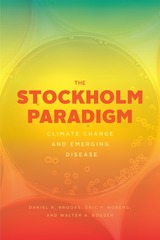 The Stockholm Paradigm: Climate Change and Emerging Disease
Daniel R. Brooks, Eric P. Hoberg, and Walter A. Boeger
University of Chicago Press, 2019 The contemporary crisis of emerging disease has been a century and a half in the making. Human, veterinary, and crop health practitioners convinced themselves that disease could be controlled by medicating the sick, vaccinating those at risk, and eradicating the parts of the biosphere responsible for disease transmission. Evolutionary biologists assured themselves that coevolution between pathogens and hosts provided a firewall against disease emergence in new hosts. Most climate scientists made no connection between climate changes and disease. None of these traditional perspectives anticipated the onslaught of emerging infectious diseases confronting humanity today.
As this book reveals, a new understanding of the evolution of pathogen-host systems, called the Stockholm Paradigm, explains what is happening. The planet is a minefield of pathogens with preexisting capacities to infect susceptible but unexposed hosts, needing only the opportunity for contact. Climate change has always been the major catalyst for such new opportunities, because it disrupts local ecosystem structure and allows pathogens and hosts to move. Once pathogens expand to new hosts, novel variants may emerge, each with new infection capacities. Mathematical models and real-world examples uniformly support these ideas. Emerging disease is thus one of the greatest climate change–related threats confronting humanity.
Even without deadly global catastrophes on the scale of the 1918 Spanish Influenza pandemic, emerging diseases cost humanity more than a trillion dollars per year in treatment and lost productivity. But while time is short, the danger is great, and we are largely unprepared, the Stockholm Paradigm offers hope for managing the crisis. By using the DAMA (document, assess, monitor, act) protocol, we can “anticipate to mitigate” emerging disease, buying time and saving money while we search for more effective ways to cope with this challenge.
The Stoic Idea of the City
Malcolm Schofield
University of Chicago Press, 1999 The Stoic Idea of the City offers the first systematic analysis of the Stoic school, concentrating on Zeno's Republic. Renowned classical scholar Malcolm Schofield brings together scattered and underused textual evidence, examining the Stoic ideals that initiated the natural law tradition of Western political thought. A new foreword by Martha Nussbaum and a new epilogue written by the author further secure this text as the standard work on the Stoics.
"The account emerges from a jigsaw-puzzle of items from a wide range of authorities, painstakingly pieced together and then annotated in a series of appendixes, the whole executed with fine scholarship, clarity, and good humor."—Times Literary Supplement
Stoic Theology: Proof for the Existence of the Cosmic God and of the Traditional Gods
P. A. Meijer
Eburon Academic Publishers, 2008
The ancient Stoics constructed an elaborate set of proofs for the existence of the Greek gods which proved highly influential for later theological and philosophical proofs. P. A. Meijer’s Stoic Theology, the first book on the subject in almost thirty years,analyzes these proofs from a fresh perspective. This valuable resource features a thorough examination of pre-Christian theological argumentation as well as new insights on the relationship between God and the deities in ancient Greek thought, in a book sure to interest scholars of philosophy and religion.
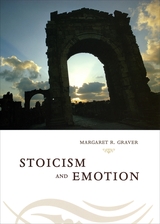 Stoicism and Emotion
Margaret Graver
University of Chicago Press, 2007 On the surface, stoicism and emotion seem like contradictory terms. Yet the Stoic philosophers of ancient Greece and Rome were deeply interested in the emotions, which they understood as complex judgments about what we regard as valuable in our surroundings. Stoicism and Emotion shows that they did not simply advocate an across-the-board suppression of feeling, as stoicism implies in today’s English, but instead conducted a searching examination of these powerful psychological responses, seeking to understand what attitude toward them expresses the deepest respect for human potential.
In this elegant and clearly written work, Margaret Graver gives a compelling new interpretation of the Stoic position. Drawing on a vast range of ancient sources, she argues that the chief demand of Stoic ethics is not that we should suppress or deny our feelings, but that we should perfect the rational mind at the core of every human being. Like all our judgments, the Stoics believed, our affective responses can be either true or false and right or wrong, and we must assume responsibility for them. Without glossing over the difficulties, Graver also shows how the Stoics dealt with those questions that seem to present problems for their theory: the physiological basis of affective responses, the phenomenon of being carried away by one’s emotions, the occurrence of involuntary feelings and the disordered behaviors of mental illness. Ultimately revealing the deeper motivations of Stoic philosophy, Stoicism and Emotion uncovers the sources of its broad appeal in the ancient world and illuminates its surprising relevance to our own.
 The Stojka Family: Spatial Mobility and Territorial Anchoredness of Lovara Vlax Roms in the Former Czechoslovakia
Markéta Hajská
Karolinum Press, 2025 Centering around the unique story and testimony of a Romani family, greater insight into the Lovara community is provided in this extensive and captivating narrative.
The Stojka Family features the distinctive testimony of said Romani family, allowing for a representation of “traveling gypsies” and their forced sedentarization. The book shines a light on the lesser-known Lovara community, accompanied by solid data from extensive archival research, oral history, and other ethnological methods.
The book details the story of a Vlax-Lovari Romani family, focusing on its legal, economic, and social attachment to the territory of the former Czechoslovakia from the end of the nineteenth century to the 1960s. Using extensive archival research and the accounts of Romani witnesses, the author shows the various forms of spatial mobility and anchoring of those who identified themselves as Vlax-Lovari Romani and who were simultaneously labeled by state authorities as “gypsies” or “wandering gypsies.” The distinctive testimony focuses on instruments of anti-Roma legislation over a long time, across very diverse political regimes, different regions, and changing socio-economic conditions, and traces in detail the impact of these measures on the lives of the Romani population. The book presents perhaps the most detailed treatment of the history and trajectory of a single Romani family and offers a new perspective on the so-called “Romani nomadism,” providing valuable insights in the fields of social and cultural anthropology, ethnology, sociology, and Romani studies.
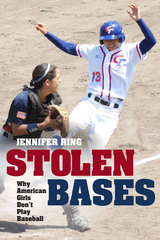 Stolen Bases: Why American Girls Don't Play Baseball
Jennifer Ring
University of Illinois Press, 2013 This history of women in baseball demonstrates that, far from being strictly a men's sport, baseball has long been enjoyed and played by Americans of all genders, races, and classes since it became popular in the 1830s. The game itself was invented by English girls and boys, and when it immigrated to the United States, numerous prominent women's colleges formed intramural teams and fielded intensely spirited and powerful players. With the professionalization of the sport in the late nineteenth century, however, American boys and men shoved girls off the diamonds and sandlots. Girls have been fighting to get back in the game ever since. Jennifer Ring questions the forces that try to keep girls who want to play baseball away from the game. Focusing on a history that, unfortunately, repeats itself, Ring describes the circumstances that twice stole baseball from American girls: once in the late nineteenth and early twentieth century, and again in the late twentieth century, after it was no longer legal to exclude girls who wanted to play. In the early twentieth century, Albert Goodwill Spalding--sporting goods magnate, baseball player, and promoter--declared baseball off limits for women and envisioned global baseball on a colonialist scale, using the American sport to teach men from non-white races and non-European cultures to become civilized and rational. And by the late twentieth century, baseball had become serious business for boys and men at all levels, with female players perceived as obstacles or detriments to rising male players' chances of success. Stolen Bases also looks at the backgrounds of American softball, which was originally invented by men who wanted to keep playing baseball indoors during cold winter months but has become the consolation sport for most female players. Throughout her analysis, Ring searches for ways to rescue baseball from its arrogance and sense of exclusionary entitlement.
 Stolen Future, Broken Present: The Human Significance of Climate Change
David A. Collings
Michigan Publishing, 2014 This book argues that climate change has a devastating effect on how we think about the future. Once several positive feedback loops, such as the melting of the Arctic icecap or the drying of the Amazon, cross the point of no return, the biosphere is likely to undergo severe and irreversible warming. Nearly everything we do is premised on the assumption that the world we know will endure into the future and provide a sustaining context for our activities. But today the future of a viable biosphere, and thus the purpose of our present activities, is put into question. A disappearing future leads to a broken present, to a strange incoherence in the feel of everyday life. Most discussions of climate change guard us from this realization; this book takes it seriously. Where many argue that the current crisis serves as an opportunity for transformation, it acknowledges that we are virtually out of time to act, even though we must do so. Where many describe a possible transition to a new energy economy, it points out that such an economy, however necessary, would still impose an enormous human footprint on the Earth’s ecosystems. Where many explore how to alter our practices in a gradual process within the existing national and international political systems, it argues that our reliance on them shows that we consider the market, and those systems, to be more real than the biosphere itself. Finally, where many examine the consequences of our actions for our grandchildren, it suggests that climate change has already damaged our own lives. We thus face the unprecedented challenge of salvaging a basis for our lives today – not by turning away from these dark realities but by facing them and, through that process, to discover surprising possibilities for ethical and emotional resilience. That basis, this book argues, may be found in our capacity to assume an infinite responsibility for ecological disaster without condemnation or nostalgia and, like the biblical Job, to respond with awe to the alien voice that speaks from the whirlwind. By owning disaster and accepting our due place within the inhuman forces of the biosphere, we may discover how to live with responsibility and serenity whatever may come. Drawing on contemporary research in climate change, political history, literary studies, philosophical ethics, cultural theory, the history of science, and a/theology, this book brings them together in a comprehensive and bracingly honest assessment of our current dilemma.
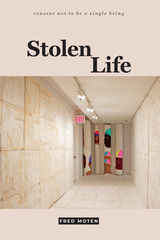 Stolen Life
Fred Moten
Duke University Press, 2018 "Taken as a trilogy, consent not to be a single being is a monumental accomplishment: a brilliant theoretical intervention that might be best described as a powerful case for blackness as a category of analysis."—Brent Hayes Edwards, author of Epistrophies: Jazz and the Literary Imagination
In Stolen Life—the second volume in his landmark trilogy consent not to be a single being—Fred Moten undertakes an expansive exploration of blackness as it relates to black life and the collective refusal of social death. The essays resist categorization, moving from Moten's opening meditation on Kant, Olaudah Equiano, and the conditions of black thought through discussions of academic freedom, writing and pedagogy, non-neurotypicality, and uncritical notions of freedom. Moten also models black study as a form of social life through an engagement with Fanon, Hartman, and Spillers and plumbs the distinction between blackness and black people in readings of Du Bois and Nahum Chandler. The force and creativity of Moten's criticism resonate throughout, reminding us not only of his importance as a thinker, but of the continued necessity of interrogating blackness as a form of sociality.
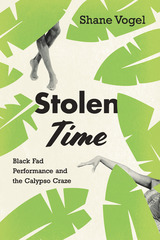 Stolen Time: Black Fad Performance and the Calypso Craze
Shane Vogel
University of Chicago Press, 2018 In 1956 Harry Belafonte’s Calypso became the first LP to sell more than a million copies. For a few fleeting months, calypso music was the top-selling genre in the US—it even threatened to supplant rock and roll. Stolen Time provides a vivid cultural history of this moment and outlines a new framework—black fad performance—for understanding race, performance, and mass culture in the twentieth century United States. Vogel situates the calypso craze within a cycle of cultural appropriation, including the ragtime craze of 1890s and the Negro vogue of the 1920s, that encapsulates the culture of the Jim Crow era. He follows the fad as it moves defiantly away from any attempt at authenticity and shamelessly embraces calypso kitsch. Although white calypso performers were indeed complicit in a kind of imperialist theft of Trinidadian music and dance, Vogel argues, black calypso craze performers enacted a different, and subtly subversive, kind of theft. They appropriated not Caribbean culture itself, but the US version of it—and in so doing, they mocked American notions of racial authenticity. From musical recordings, nightclub acts, and television broadcasts to Broadway musicals, film, and modern dance, he shows how performers seized the ephemeral opportunities of the fad to comment on black cultural history and even question the meaning of race itself.
Stolen Verses and Other Poems
Oscar Hahn
Northwestern University Press, 2000 Oscar Hahn has been hailed by postmodernist master Enrique Lihn as "the premier poet of his generation." Pablo Neruda has praised Hahn's "great originality and intensity," and Mario Vargas Llosa has called Hahn's work "magnificent and truly original. . . . the most personal I've read in the poetry of our language in a long time." Stolen Verses and Other Poems, translated by Poet Laureate of Texas James Hoggard, affirms Hahn's reputation as a master of his craft.
Stolper-Samuelson Theorem: A Golden Jubilee
Edited by Alan V. Deardorff and Robert M. Stern
University of Michigan Press, 1994 In celebration of the fiftieth anniversary of the Stolper-Samuelson Theorem, this volume collects in one place the original Stolper-Samuelson articles as well as the most significant later contributions that interpret, extend, and test the basic result. It also includes reflective papers by both Wolfgang F. Stolper and Paul A. Samuelson, an overview of the literature, and an annotated bibliography. Contributors to the volume, either in reprints of their original articles or in new commentary, are Robert E. Baldwin, Sundari R. Baru, Jagdish N. Bhagwati, John S. Chipman, Alan V. Deardorff, Wilfred Ethier, Ronald W. Jones, Murray C. Kemp, Ulrich Kohli, Paul R. Krugman, Edward E. Leamer, Stephen P. Magee, Lloyd A. Metzler, Ronald Rogowski, Paul A. Samuelson, Jose A. Scheinkman, Robert M. Stern, Wolfgang F. Stolper, and Leon Wegge.
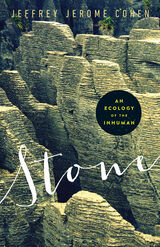 Stone: An Ecology of the Inhuman
Jeffrey Jerome Cohen
University of Minnesota Press, 2015 Stone maps the force, vivacity, and stories within our most mundane matter, stone. For too long stone has served as an unexamined metaphor for the “really real”: blunt factuality, nature’s curt rebuke. Yet, medieval writers knew that stones drop with fire from the sky, emerge through the subterranean lovemaking of the elements, tumble along riverbeds from Eden, partner with the masons who build worlds with them. Such motion suggests an ecological enmeshment and an almost creaturely mineral life. Although geological time can leave us reeling, Jeffrey Jerome Cohen argues that stone’s endurance is also an invitation to apprehend the world in other than human terms. Never truly inert, stone poses a profound challenge to modernity’s disenchantments. Its agency undermines the human desire to be separate from the environment, a bifurcation that renders nature “out there,” a mere resource for recreation, consumption, and exploitation. Written with great verve and elegance, this pioneering work is notable not only for interweaving the medieval and the modern but also as a major contribution to ecotheory. Comprising chapters organized by concept —“Geophilia,” “Time,” “Force,” and “Soul”—Cohen seamlessly brings together a wide range of topics including stone’s potential to transport humans into nonanthropocentric scales of place and time, the “petrification” of certain cultures, the messages fossils bear, the architecture of Bordeaux and Montparnasse, Yucca Mountain and nuclear waste disposal, the ability of stone to communicate across millennia in structures like Stonehenge, and debates over whether stones reproduce and have souls. Showing that what is often assumed to be the most lifeless of substances is, in its own time, restless and forever in motion, Stone fittingly concludes by taking us to Iceland⎯a land that, writes the author, “reminds us that stone like water is alive, that stone like water is transient.”
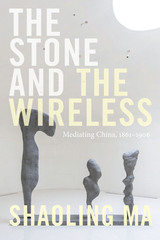 The Stone and the Wireless: Mediating China, 1861–1906
Shaoling Ma
Duke University Press, 2021 In the final decades of the Manchu Qing dynasty in China, technologies such as the phonograph, telephone, telegraph, and photography were both new and foreign. In The Stone and the Wireless Shaoling Ma analyzes diplomatic diaries, early science fiction, feminist poetry, photography, telegrams, and other archival texts, and shows how writers, intellectuals, reformers, and revolutionaries theorized what media does despite lacking a vocabulary to do so. Media defines the dynamics between technologies and their social or cultural forms, between devices or communicative processes and their representations in texts and images. More than simply reexamining late Qing China's political upheavals and modernizing energies through the lens of media, Ma shows that a new culture of mediation was helping to shape the very distinctions between politics, gender dynamics, economics, and science and technology. Ma contends that mediation lies not only at the heart of Chinese media history but of media history writ large.
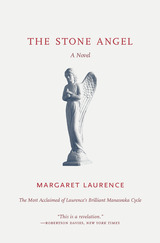 The Stone Angel
Margaret Laurence
University of Chicago Press, 1993 The Stone Angel, The Diviners, and A Bird in the House are three of the five books in Margaret Laurence's renowned "Manawaka series," named for the small Canadian prairie town in which they take place. Each of these books is narrated by a strong woman growing up in the town and struggling with physical and emotional isolation.
In The Stone Angel, Hagar Shipley, age ninety, tells the story of her life, and in doing so tries to come to terms with how the very qualities which sustained her have deprived her of joy. Mingling past and present, she maintains pride in the face of senility, while recalling the life she led as a rebellious young bride, and later as a grieving mother. Laurence gives us in Hagar a woman who is funny, infuriating, and heartbreakingly poignant.
"This is a revelation, not impersonation. The effect of such skilled use of language is to lead the reader towards the self-recognition that Hagar misses."—Robertson Davies, New York Times
"It is [Laurence's] admirable achievement to strike, with an equally sure touch, the peculiar note and the universal; she gives us a portrait of a remarkable character and at the same time the picture of old age itself, with the pain, the weariness, the terror, the impotent angers and physical mishaps, the realization that others are waiting and wishing for an end."—Honor Tracy, The New Republic
"Miss Laurence is the best fiction writer in the Dominion and one of the best in the hemisphere."—Atlantic
"[Laurence] demonstrates in The Stone Angel that she has a true novelist's gift for catching a character in mid-passion and life at full flood. . . . As [Hagar Shipley] daydreams and chatters and lurches through the novel, she traces one of the most convincing—and the most touching—portraits of an unregenerate sinner declining into senility since Sara Monday went to her reward in Joyce Cary's The Horse's Mouth."—Time
"Laurence's triumph is in her evocation of Hagar at ninety. . . . We sympathize with her in her resistance to being moved to a nursing home, in her preposterous flight, in her impatience in the hospital. Battered, depleted, suffering, she rages with her last breath against the dying of the light. The Stone Angel is a fine novel, admirably written and sustained by unfailing insight."—Granville Hicks, Saturday Review
"The Stone Angel is a good book because Mrs. Laurence avoids sentimentality and condescension; Hagar Shipley is still passionately involved in the puzzle of her own nature. . . . Laurence's imaginative tact is strikingly at work, for surely this is what it feels like to be old."—Paul Pickrel, Harper's
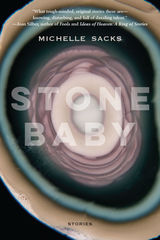 Stone Baby: Stories
Michelle Sacks
Northwestern University Press, 2017 This debut collection of stories by Michelle Sacks features characters from many walks of life, scattered around the globe—a young Irish woman backpacking in India, an ambitious black South African businessman, a roving killer for hire, a former SS officer. Their stories usually lead them—and us—to pivotal events that reveal unexpected, hidden truths.
Working on a large canvas that encompasses the extremes of rural Africa and urban London, material poverty and the surfeit of privilege, Sacks writes stories peopled by characters whose lives occasionally crisscross, with a protagonist in one story playing a deceptively small role in another. The stories artfully illuminate the rich interconnections and clashes that occur as her characters strike out boldly, yet find themselves at the mercy of capricious waves of circumstance.
Stone Baby explores movement, loss, and reinvention in the lives of people who are in the wrong place, in the wrong body, perhaps in the wrong life—it encapsulates an engrossing and urgent message in our age of migration and dislocation.
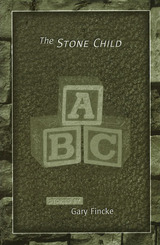 The Stone Child: Stories
Stories by Gary Fincke
University of Missouri Press, 2003
A university maintenance worker and his wife decide to give birth to their anencephalic baby and to accept all the consequences that will follow. During summer vacation, a journalism student trysts with his girlfriend at her suspicious father’s house and soon witnesses the ultimate in paternal vengeance. A schoolboy faces peer violence while his mother struggles with cancer, each relying upon a hopelessly misplaced faith. In The Stone Child, Gary Fincke presents characters at turning points, where the effects of their decisions will ripple throughout the rest of their lives.
“Clean Shaven” depicts the last family vacation of a couple with two nearly grown children; in a few pivotal days, Reynolds, the father, struggles with, accepts, then embraces, his comradeship with his roguish, college-expelled son. In “Natural Borders,” the way a small-town sheriff handles the marital problems of a pair of eccentrics leads to a conflagration that will haunt him forever.
The eleven stories in The Stone Child are about families of varying kinds, what binds them, and what threatens to tear them apart. Under pressure, the characters strive to maintain whatever connections they have established with one another. In important ways, all of these stories, even those with exclusively adult characters, are coming-of-age tales, the characters arriving at those points in their lives when what they do and say will mark significant passages.
Fincke brings great humanity to his characters and displays a sharp and wry sense of humor; his sense of place is strong, his stories richly textured, and his prose a joy to read. Primarily meditating on the viewpoints of male characters, Fincke gives us stories with beginnings that pull us right in and endings that won’t let us leave the world of the story until long after we have finished reading.
The Stone Circle Poems: The Collected Poems of Terry Wooten
Terry Wooten
Parkhurst Brothers, Inc., 2015 Collected poems of a Midwest naturalist-bard. A lifetime retrospective of poems written and spoken from memory by Terry Wooten, poet and creator of Michigan’ Stone Circle poetry recitation venue.
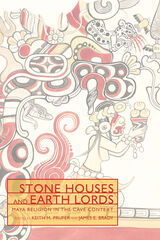 Stone Houses and Earth Lords: Maya Religion in the Cave Context
Keith M. Prufer
University Press of Colorado, 2021 Cave archaeology in the New World, now a focus of intense research, was still a peripheral area of inquiry just fifteen years ago. Stone Houses and Earth Lords is the first volume dedicated exclusively to the use of caves in the Maya Lowlands, covering primarily Classic Period archaeology from A.D. 100 through the Spaniards' arrival. Although the caves that riddled the lowlands show no signs of habitation, most contain evidence of human use - evidence that suggests that they functioned as ritual spaces. Demonstrating the importance of these subterranean spaces to Maya archaeology, contributors provide interpretations of archaeological remains that yield insights into Maya ritual and cosmology. Compiling the best current scholarship in this fast-growing area of research, Stone Houses and Earth Lords is a vital reference for Mayanists, Mesoamerican specialists, and others interested in the human use of caves in the New World. Contributors include: Juan Luis Bonor, James E. Brady, Robert Burnett, Allan B. Cobb, Pierre Robert Colas, Cesar Espinosa, Sergio Garza, David M. Glassman, Christina T. Halperin, Amalia Kenward, Andrew Kindon, Patricia McAnany, Christopher Morehart, Holley Moyes, Vanessa A. Owen, Shankari Patel, Polly Peterson, Keith M. Prufer, Timothy. W. Pugh, Frank Saul, Julie Saul, Ann M. Scott, Andrea Stone, and Vera Tiesler.
Stone Lyre
René Char
Tupelo Press, 2010 “René Char is the conscience of modern French poetry and also its calm of mind. Nancy Naomi Carlson, in these splendid translations, casts new light upon the sublime consequence of Char’s poetic character, and in Stone Lyre the case for sublimity is purely made.”—Donald Revell, poet and translator of Rimbaud and Apollinaire
 Stone Masters: Power Encounters in Mainland Southeast Asia
Edited by Holly High
National University of Singapore Press, 2022 A new analytical perspective on stones and stone masters across Southeast Asia that extends and deepens the recent literature on animism.
Stones and stone masters are an important focus of animist religious practice in Southeast Asia. Recent studies on animism see animist rituals not as a mere metaphor for community or shared values, but as a way of forming and maintaining relationships with occult presences. This book features city pillars, statues, megaliths, termite mounds, mountains, rocks found in forests, and stones that have been moved to shrines, as well as the territorial cults which can form around them. The contributors extend and deepen the recent literature on animism to form a new analytical perspective on these cults across mainland Southeast Asia. Not just a collection of exemplary ethnographies, Stone Masters is also a deeply comparative volume that develops its ideas through a meshwork of regional entanglements, parallels, and differences, before entering into a dialogue with debates on power, mastery, and the social theory of animism globally.
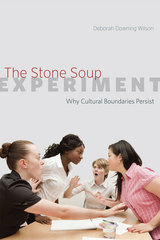 The Stone Soup Experiment: Why Cultural Boundaries Persist
Deborah Downing Wilson
University of Chicago Press, 2015 The Stone Soup Experiment is a remarkable story of cultural difference, of in-groups, out-groups, and how quickly and strongly the lines between them are drawn. It is also a story about simulation and reality, and how quickly the lines between them can be dismantled. In a compulsively readable account, Deborah Downing Wilson details a ten-week project in which forty university students were split into two different simulated cultures: the carefree Stoners, and the market-driven Traders. Through their eyes we are granted intimate access to the very foundations of human society: how group identities are formed and what happens when opposing ones come into contact.
The experience of the Stoners and Traders is a profound testament to human sociality. Even in the form of simulation, even as a game, the participants found themselves quickly—and with real conviction—bound to the ideologies and practices of their in-group. The Stoners enjoyed their days lounging, chatting, and making crafts, while the Traders—through a complex market of playing cards—competed for the highest bankrolls. When they came into contact, misunderstanding, competition, and even manipulation prevailed, to the point that each group became so convinced of its own superiority that even after the simulation’s end the students could not reconcile.
Throughout her riveting narrative, Downing Wilson interweaves fascinating discussions on the importance of play, emotions, and intergroup interaction in the formation and maintenance of group identities, as well as on the dynamic social processes at work when different cultural groups interact. A fascinating account of social experimentation, the book paints a vivid portrait of our deepest social tendencies and the powers they have over how we make friends and enemies alike.
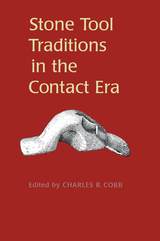 Stone Tool Traditions in the Contact Era
Edited by Charles Richard Cobb
University of Alabama Press, 2003 Explores the impact of European colonization on Native American and Pacific Islander technology and culture This is the first comprehensive analysis of the partial replacement of flaked stone and ground stone traditions by metal tools in the Americas during the Contact Era. It examines the functional, symbolic, and economic consequences of that replacement on the lifeways of native populations, even as lithic technologies persisted well after the landing of Columbus. Ranging across North America and to Hawai'i, the studies show that, even with wide access to metal objects, Native Americans continued to produce certain stone tool types—perhaps because they were still the best implements for a task or because they represented a deep commitment to a traditional practice. Chapters are ordered in terms of relative degree of European contact, beginning with groups that experienced brief episodes of interaction, such as the Wichita-French meeting on the Arkansas River, and ending with societies that were heavily influenced by colonization, such as the Potawatomi of Illinois. Because the anthology draws comparisons between the persistence of stone tools and the continuity of other indigenous crafts, it presents holistic models that can be used to explain the larger consequences of the Contact Era. Marvin T. Smith, of Valdosta State University has stated that, “after reading this volume, no archaeologist will ever see the replacement of lithic technology by metal tools as a simple matter of replacement of technologically inferior stone tools with their superior metal counterparts. This is cutting-edge scholarship in the area of contact period studies.”
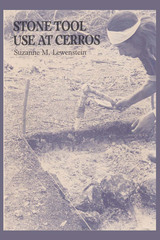 Stone Tool Use at Cerros: The Ethnoarchaeological and Use-Wear Evidence
By Suzanne M. Lewenstein
University of Texas Press, 1987 For centuries scholars have pondered and speculated over the uses of the chipped stone implements uncovered at archaeological sites. Recently a number of researchers have attempted to determine prehistoric tool function through experimentation and through observation of the few remaining human groups who still retain this knowledge. Learning how stone tools were made and used in the past can tell us a great deal about ancient economic systems, exchange networks, and the social and political structure of prehistoric societies. Suzanne M. Lewenstein used the artifacts from Cerros, an important Late Preclassic (200 BC–AD 200) Mayan site in northern Belize, to study stone tool function. Through a comprehensive program of experimentation with stone tool replicas, she was able not only to infer the tasks performed by individual tool specimens but also to recognize a wide variety of past activities for which stone tools were used. Unlike previous works that focused on hunter-gatherer groups, Stone Tool Use at Cerros is the first comprehensive experimental study of tool use in an agricultural society. The lithic data are used in an economic interpretation of a lowland Mayan community within a hierarchically complex society. Apart from its significance to Mayan studies, this innovative work offers the beginnings of a reference collection of identifiable tool functions that may be documented for sedentary, complex society. It will be of major interest to all archaeologists and anthropologists, as well as those interested in economic specialization and artisanry in complex societies.
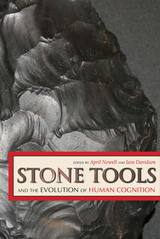 Stone Tools and the Evolution of Human Cognition
April Nowell
University Press of Colorado, 2010 Stone tools are the most durable and common type of archaeological remain and one of the most important sources of information about behaviors of early hominins. Stone Tools and the Evolution of Human Cognition develops methods for examining questions of cognition, demonstrating the progression of mental capabilities from early hominins to modern humans through the archaeological record. Dating as far back as 2.5-2.7 million years ago, stone tools were used in cutting up animals, woodworking, and preparing vegetable matter. Today, lithic remains give archaeologists insight into the forethought, planning, and enhanced working memory of our early ancestors. Contributors focus on multiple ways in which archaeologists can investigate the relationship between tools and the evolving human mind-including joint attention, pattern recognition, memory usage, and the emergence of language. Offering a wide range of approaches and diversity of place and time, the chapters address issues such as skill, social learning, technique, language, and cognition based on lithic technology. Stone Tools and the Evolution of Human Cognition will be of interest to Paleolithic archaeologists and paleoanthropologists interested in stone tool technology and cognitive evolution.
 Stonehenge
Rosemary Hill
Harvard University Press, 2008 Welcoming 800,000 visitors each year, Stonehenge is the most famous prehistoric monument in all of Europe. It has inspired modern replicas throughout the world, including one constructed entirely of discarded refrigerators. This curious structure is the subject of cult worship, is a source of pride for Britons, and offers an intellectual challenge for academics. It has captured the imagination and the attention of thousands of people for thousands of years.
Over the centuries, “experts” have tried to discover the meaning behind Stonehenge. While each new theory contradicts earlier speculation, every new proposal attributes a purpose to the site. From bards of the twelfth century to Black Sabbath, from William Blake to archaeologists of the twenty-first century, Stonehenge has embodied a wealth of intention. Was it designed for winter solstice, for goddess worship, or as a funerary temple? While all have been suggested, even “proven,” the mystery continues.
Through the eyes of its most eloquent apologists, Rosemary Hill guides the reader on a tour of Stonehenge in all its cultural contexts, as a monument to many things—to Renaissance Humanism, Romantic despair, Victorian enterprise, and English Radicalism. In the end, the stones remain compelling because they remain mysterious—apparently simple yet incomprehensible—that is the wonder, the enchantment, of Stonehenge.
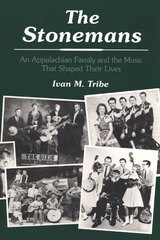 The Stonemans: An Appalachian Family and the Music That Shaped Their Lives
Ivan M. Tribe
University of Illinois Press, 1993 The Stonemans is an eye-opening slice of Americana---a trip through nearly twenty years of country music history following a single family from their native Blue Ridge Mountains to the slums of Washington, D.C., and the glitter of Nashville. As early as 1924 Ernest V. "Pop" Stoneman realized the potential of what is now known as country music, and he tried to carve a career from it. Successful as a recording artist from 1925 through 1929, Stoneman foundered during the Great Depression. He, his wife, and their nine children went to Washington in 1932, struggling through a decade of hardship and working to revive the musical career Pop still believed in. The Stoneman Family won the Country Music Association's Vocal Group of the Year Award in 1967. After Pop's death a year later, some of the children scattered to pursue their own careers. Ivan Tribe relies on extensive interviews with the Stonemans and their friends in this chronicle of a family whose members have clung to their musical heritage through good times and bad.
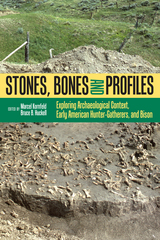 Stones, Bones, and Profiles: Exploring Archaeological Context, Early American Hunter-Gatherers, and Bison
Marcel Kornfeld
University Press of Colorado, 2016 Stones, Bones, and Profiles addresses key and cutting-edge research of three pillars of hunter-gatherer archaeology. Stones and bones—flaked stone tools and the bones of the prey animals—are the objects most commonly recovered from hunter-gatherer archaeological sites, and profiles represent the geologic context of the archeological record. Together they constitute the foundations of much of early archaeology, from the appearance of the earliest humans to the advent of the Neolithic. The volume is divided into three sections: Peopling of North America and Paleoindians, Geoarchaeology, and Bison Bone Bed Studies. The first section dissects established theories about the Paleoindians, including the possibility that human populations were in North America before Clovis and the timing of the opening of the Alberta Corridor. The second section provides new perspectives on the age and contexts of several well-known New World localities such as the Lindenmeier Folsom and the UP Mammoth sites, as well as a synthesis of the geoarchaeology of the Rocky Mountains' Bighorn region that addresses significant new data and summarizes decades of investigation. The final section, Bison Bone Bed Studies, consists of groundbreaking zooarchaeological studies offering new perspectives on bison taxonomy and procurement. Stones, Bones, and Profiles presents new data on Paleoindian archaeology and reconsiders previous sites and perspectives, culminating in a thought-provoking and challenging contribution to the ongoing study of Paleoindians around the world. Contributors: Leland Bement, Jack W. Brink, John Carpenter, Brian Carter, Thomas J. Connolly, Linda Scott Cummings, Loren G. Davis, Allen Denoyer, Stuart J. Fiedel, Judson Byrd Finley, Andrea Freeman, C. Vance Haynes Jr., Bryan Hockett, Vance T. Holliday, Dennis L. Jenkins, Thomas A. Jennings, Eileen Johnson, George T. Jones, Oleksandra Krotova, Patrick J. Lewis, Vitaliy Logvynenko, Ian Luthe, Katelyn McDonough, Lance McNees, Fred L. Nials, Patrick W. O’Grady, Mary M. Prasciunas, Karl J. Reinhard, Michael Rondeau, Guadalupe Sanchez, William E. Scoggin, Ashley M. Smallwood, Iryna Snizhko, Thomas W. Stafford Jr., Mark E. Swisher, Frances White, Eske Willerslev, Robert M. Yohe II, Chad Yost
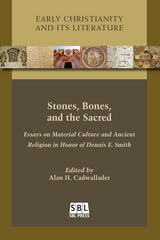 Stones, Bones, and the Sacred: Essays on Material Culture and Ancient Religion in Honor of Dennis E.
Alan H. Cadwallader
SBL Press, 2016 A crucial text for any university course on the interaction of archaeology and the Bible
The world of early Christians was not a world lived in texts; it was a world saturated with material reality and concerns: what, where and when to eat or drink; how to present oneself in the space of bodily life and that of death; how to move from one place to another; what impacted status or the adjudication of legal charges. All these and more controlled so much of life in the ancient world. The Christians were not immune from the impact of these realities. Sometimes they absorbed their surrounds; sometimes they quite explicitly rejected the material practices bearing in on them; frequently they modified the practice and the rationale to create a significant Christian alternative. The collection of essays in this volume come from a range of international scholars who, for all their different interests and critical commitments, are yet united in treasuring research into the Greek and Roman worlds in which Christians sought to make their way. They offer these essays in honor of one who has made a lifetime's work in mining ancient material culture to extract nuggets of insight into early Christian dining practices: Dennis E. Smith.
Features
- Rich examples of method in the utilization of ancient material culture for biblical interpretation.
- Thirteen essays with a response from Dennis E. Smith
- Maps, diagrams, and plates
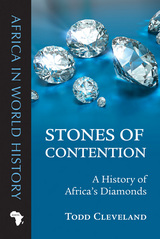 Stones of Contention: A History of Africa’s Diamonds
Todd Cleveland
Ohio University Press, 2014 Africa supplies the majority of the world’s diamonds, yet consumers generally know little about the origins and history of these precious stones beyond sensationalized media accounts of so-called blood diamonds. Stones of Contention explores the major developments in the remarkable history of Africa’s diamonds, from the earliest stirrings of international interest in the continent’s mineral wealth in the first millennium A.D. to the present day. In the European colonial period, the discovery of diamonds in South Africa ushered in an era of unprecedented greed during which monopolistic enterprises exploited both the mineral resources and the indigenous workforce. In the aftermath of World War II, the governments of newly independent African states, both democratic and despotic, joined industry giant De Beers and other corporations to oversee and profit from mining activity on the continent. The book also considers the experiences of a wide array of Africans—from informal artisanal miners, company mineworkers, and indigenous authorities to armed rebels, mining executives, and premiers of mineral-rich states—and their relationships to the stones that have the power to bring both wealth and misery. With photos and maps, Stones of Contention illustrates the scope and complexity of the African diamond trade as well as its impact on individuals and societies.
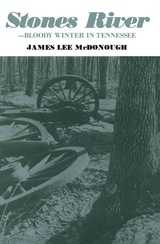 Stones River: Bloody Winter in Tennessee
James Lee Mcdonough
University of Tennessee Press, 1983 On December 31, 1862, some 10,000 Confederate soldiers streamed out of the dim light of early morning to stun the Federals who were still breakfasting in their camp. Nine months earlier the Confederates had charged the Yankees in a similarly devastating attack at dawn, starting the Battle of Shiloh. By the time this new battle ended, it would resemble Shiloh in other ways – it would rival that struggle’s shocking casualty toll of 24,000 and it would become a major defeat for the South. By any Civil War standard, Stones River was a monumental, bloody, and dramatic story. Yet, until now, it has had no modern, documented history. Arguing that the battle was one of the significant engagements in the war, noted Civil War historian James Lee McDonough here devotes to Stones River the attention it ahs long deserved.
Stones River, at Murfreesboro, Tennessee, was the first big battle in the union campaign to seize the Nashville-Chattanooga-Atlanta corridor. Driving eastward and southward to sea, the campaign eventually climaxed in Sherman’s capture of Savannah in December 1864. At Stones River the two armies were struggling desperately for control of Middle Tennessee’s railroads and rich farms. Although they fought to a tactical draw, the Confederates retreated.
The battle’s outcome held significant implications. For the Union, the victory helped offset the disasters suffered at Fredericksburg and Chickasaw Bayou. Furthermore, it may have discouraged Britain and France from intervening on behalf of the Confederacy. For the South, the battle had other crucial effects. Since in convinced many that General Braxton Bragg could not successfully command an army, Stones River left the Southern Army torn by dissension in the high command and demoralized in the ranks.
One of the most perplexing Civil War battles, Stones River has remained shrouded in unresolved questions. After driving the Union right wing for almost three miles, why could the Rebels not complete the triumph? Could the Union’s Major General William S. Rosecrans have launched a counterattack on the first day of the battle? Was personal tension between Bragg and Breckenridge a significant factor in the events of the engagement’s last day?
McDonough uses a variety of sources to illuminate these and other questions. Quotations from diaries, letters, and memoirs of the soldiers involved furnish the reader with a rare, soldier’s-eye view of this tremendously violent campaign. Tactics, strategies, and commanding officers are examined to reveal how personal strengths and weaknesses of the opposing generals, Bragg and Rosecrans, shaped the course of the battle. Vividly recreating the events of the calamitous battle, Stones River – Bloody Winter in Tennessee firmly establishes the importance of this previously neglected landmark in Civil War history.
James Lee McDonough is professor of history at Auburn University, and author of Shiloh – In Hell before Night, Chattanooga – A Death Grip on the Confederacy, and co-author of Five Tragic Hours: The Battle of Franklin.
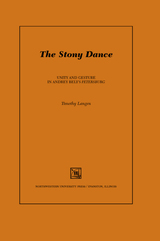 The Stony Dance: Unity and Gesture in Andrey Bely's Petersburg
Timothy Langen
Northwestern University Press, 2005 Widely considered the greatest Russian modernist novel, Andrei Bely's Petersburg has until now eluded the critical attention that a book of its caliber merits. In The Stony Dance, Timothy Langen offers readers a study of Bely's masterpiece unparalleled in its comprehensiveness, clarity, and inclusion of detail--a critical study that is at the same time a meditation on the nature of literary art.
Thoroughly versed in Russian and European modernism, in Bely's biography and writings, and in twentieth-century literary theory, Langen constructs an original analytic scheme for reading Petersburg. Guided by Bely's fertile but challenging notions of art and philosophy, he analyzes the novel first as an object embodying intentions and essences, then as a pattern of signification and events, and finally as a dance of gestures that coordinate body and meaning, regularity and surprise, self and other, and author, novel, and reader. The terms are derived from Bely's own writings, but they are nuanced with reference to Russian and European contexts and clarified with reference to philosophy and literary theory. Langen shows how Bely invariably challenges his own concepts and patterns, thereby creating an unusually demanding and dynamic text. In finding an approach to these enriching difficulties, this book at long last shows readers a welcoming way into Bely's thought, and his masterwork, and their place in the complex world of early twentieth-century literature.
Stop Lying: Poems
Aaron Smith
University of Pittsburgh Press, 2023 Stop Lying is Aaron Smith’s most personal and vulnerable work yet. Revolving around the death of Smith’s mother and how the poet, a gay man, faces his upbringing where his sexuality was viewed as sinful and unnatural, these poems plumb the complexities of what families say and choose not to say. How does one grieve when a relationship will forever remain unresolved? What does it mean to both regret and not regret one’s decisions? What if survival doesn’t look like what we're told it should? This is the story of a poet pushing through present-day grief and the shame of the past to find the buried truths, the ones that are hardest to tell.
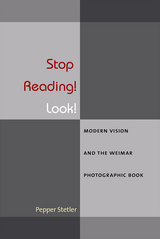 Stop Reading! Look!: Modern Vision and the Weimar Photographic Book
Pepper Stetler
University of Michigan Press, 2015 In the second half of the Weimar period (1918–33), photographers produced books consisting almost entirely of sequenced images. The subjects ranged widely: from plants and nature to the modern metropolis, from exotic cultures to the German Volk, from anonymous workers to historical figures. While many of the books were created by key practitioners and theorists of modern photography, scholars have rarely addressed the significance of the book format to modern conceptions of photographic meaning. The term “photo-essay” implies that these photographic books were equivalent to literary endeavors, created by replacing text with images, but such assumptions fail to explore the motivations of the books’ makers. Stop Reading! Look! argues that Weimar photographic books stood at the center of debates about photography’s ability to provide uniquely visual forms of perception and cognition that exceed the capacity of the textual realm. Each chapter provides a sustained analysis of a photographic book, while also bringing the cultural, social, and political context of the Weimar Republic to bear on its relevance and meaning.
 Stop Saying Snip!: The Rhetoric of Vasectomy
Jenna Vinson
Rutgers University Press, 2026 In the U.S. the most common contraceptive methods rely on women’s time, labor, and vulnerability to risk. Comparatively few people rely on vasectomies as a means of preventing pregnancies. Something is happening rhetorically—through meaning-making symbols and the material practices they manifest—that sustains a collective disinterest in vasectomies. Drawing from her feminist rhetorical study of 37 television and film representations, health insurance policies, and interviews with 17 people who have experienced vasectomy, Jenna Vinson surfaces barriers to vasectomy uptake, including problematic tropes and practices that keep vasectomy unappealing, out-of-mind, and inaccessible. Stop Saying Snip! also illustrates tactics and circumstances that lead people to get a vasectomy, sharing real vasectomy stories and showing that women often play an important (and until now unheeded or pathologized) role in this communication process. This book intervenes in the misogynistic cultural expectation that it is women’s responsibility to endure the pain, labor, and risks of managing fertility by identifying the rhetorics that make men’s reproductive bodies seem unnatural sites for pregnancy prevention work. Fostering a persuasive vision of vasectomy is an urgent project that contributes to the movement toward reproductive justice.
Stop the Presses! I Want to Get Off!: A Brief History of the Prisoners’ Digest International
Joseph W. Grant
Michigan State University Press, 2012 The final book in the groundbreaking Voices from the Underground series, Stop the Presses! I Want to Get Off!, is the inspiring, frenetic, funny, sad, always-cash-starved story of Joe Grant, founder and publisher of Prisoners’ Digest International, the most important prisoners’ rights underground newspaper of the Vietnam era. From Grant’s military days in pre-Revolutionary Cuba during the Korean War, to his time as publisher of a pro-union newspaper in Cedar Rapids and his eventual imprisonment in Leavenworth, Kansas, Grant’s personal history is a testament to the power of courage under duress. One of the more notorious federal penitentiaries in the nation, Leavenworth inspired Grant to found PDI in an effort to bring hope to prisoners and their families nationwide.
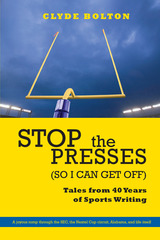 Stop the Presses (So I Can Get Off): Tales from Forty Years of Sports Writing
Clyde Bolton
University of Alabama Press, 2005 A delightful blend of memoir, opinion, and sports from an Alabama original. For 31 years, Clyde Bolton wrote four sports columns per week for the Birmingham News. By his estimation, this makes him the most widely read Alabamian in history. He may be right. In Stop the Presses (So I Can Get Off) he takes the reader along on a joyride through more than three decades of Alabama sports. Unsurprisingly, tales of Bear Bryant and Shug Jordan, Roll Tide and War Eagle, dominate, but at one point or another, Clyde covered just about every type of sporting event in the state. Personalities and events from the realms of high school sports, minor league baseball, college basketball, and Nextel Cup Racing are just some of the many facets of his personal and professional life that he shares in this, his 17th book. In relating the outlines of his life, Bolton pays homage to his mentors, including famed sports editor Benny Marshall, and shares some insights he’s gained after a lifetime in the newspaper game. But throughout the book, he never forgets that any good journalist—any good writer—is in the business of telling stories. And oh, what stories! Bolton writes of meeting Michael Jordan during the basketball star’s year with the Birmingham Barons; of having dinner with Muhammad Ali at the Lambda Chi Alpha fraternity house at Auburn University; of walking incognito down sunny Birmingham sidewalks with Hall-of-Famer Johnny Unitas. He explains why Bear Bryant, in his opinion, is the greatest football coach ever, tells of interviewing Joe Namath in the men’s bathroom, and reveals why his grandmother watched professional wrestling on her hands and knees on the floor in front of the television. Stop the Presses (So I Can Get Off) is a joyous romp through the SEC, the Nextel Cup Circuit, and, in the end, life itself.
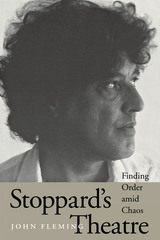 Stoppard's Theatre: Finding Order amid Chaos
By John Fleming
University of Texas Press, 2001 With a thirty-year run of award-winning, critically acclaimed, and commercially successful plays, from Rosencrantz and Guildenstern Are Dead (1967) to The Invention of Love (1997), Tom Stoppard is arguably the preeminent playwright in Britain today. His popularity also extends to the United States, where his plays have won three Tony awards and his screenplay for Shakespeare in Love won the 1998 Academy Award for Best Original Screenplay. John Fleming offers the first book-length assessment of Stoppard's work in nearly a decade. He takes an in-depth look at the three newest plays (Arcadia,Indian Ink, and The Invention of Love) and the recently revised versions of Travesties and Hapgood, as well as at four other major plays (Rosencrantz,Jumpers,Night and Day, and The Real Thing). Drawing on Stoppard's personal papers at the University of Texas Harry Ransom Humanities Research Center (HRHRC), Fleming also examines Stoppard's previously unknown play Galileo, as well as numerous unpublished scripts and variant texts of his published plays. Fleming also mines Stoppard's papers for a fuller, more detailed overview of the evolution of his plays. By considering Stoppard's personal views (from both his correspondence and interviews) and by examining his career from his earliest scripts and productions through his most recent, this book provides all that is essential for understanding and appreciating one of the most complex and distinctive playwrights of our time.
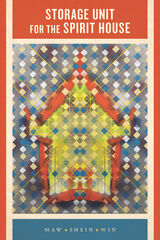 Storage Unit for the Spirit House
Maw Shein Win
Omnidawn, 2020 With sharp focus and startling language, the poems in Maw Shein Win’s second book, Storage Unit for the Spirit House, look through physical objects to glimpse the ephemeral, the material, and the immaterial. Vinyl records, felt wolverines, a belt used to punish children, pain pills, and “show dogs with bejeweled collars” crowd into Win’s real and imagined storage units. Nats, Buddhist animist deities from her family’s homeland of Burma, haunt the book’s six sections. The nats, spirits believed to have the power to influence everyday lives, inhabit the storage units and hover around objects while forgotten children sleep under Mylar blankets and daughters try to see through the haze of a father’s cigarette smoke.
Assemblages of both earthly and noncorporeal possessions throughout the collection become resonant and alive, and Win must summon “a circle of drums and copper bells” to appease the nats who have moved into a long-ago family house. This careful curation of unlikely objects and images becomes an act of ritual collection that uses language to interrogate how pain in life can transform someone into a nat or a siren that lives on. Restrained lines request our imagination as we move with the poet through haunted spaces and the objects that inhabit them.
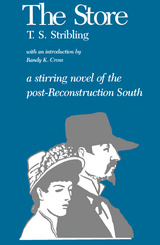 The Store
Thomas S. Stribling
University of Alabama Press, 1933 Pulitzer Prize for the Novel in 1933 The Pulitzer prize-winning The Store is the second novel of Stribling’s monumental trilogy set in the author’s native Tennessee Valley region of north Alabama. The action begins in 1884, the year in which Grover Cleveland became the first Democratic president since the end of the Civil War; and it centers about the emergence of a figure of wealth in the city of Florence.
In The Store, Stribling succeeds in presenting the essence of an age through the everyday lives of his characters. In the New Yorker, reviewer Robert M. Coates compared Stribling with Mark Twain in his ability to convey the “very life and movement” of a small Southern town: “Groups move chatting under the trees or stand loitering in the courthouse square, townsfolk gather at political ‘speakings’ and drift homeward separately afterward; always, in their doings, one has the sense of a whole community surrounding them, binding them together.” Gerald Bullet wrote in The New Statesman and Nation that the novel “is a first-rate book…filled with diverse and vital characters; and much of it cannot be read without that primitive excitement, that eagerness to know what comes next, which is, after all, the triumph of the good story teller.”
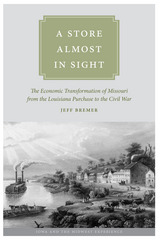 A Store Almost in Sight: The Economic Transformation of Missouri from the Lousiana Purchase to the Civil War
Jeff Bremer
University of Iowa Press, 2014 A Store Almost in Sight tells the story of commercial development in central Missouri from the early days of American settlement following the Louisiana Purchase to the Civil War. Focusing on those counties near or on the Missouri River, historian Jeff Bremer confirms that the history of the frontier is also the history of the spread of capitalist values. The letters, journals, diaries, and travel accounts of Missouri settlers and visitors reveal how small decisions made by Missouri’s rural white settlers—ranging from how much of a certain crop to plant to how many eggs to take to the local store—contributed to the establishment of a market economy in the state.
Most Missourians welcomed the opportunity to take part in commercial markets. Farmwomen sold eggs or butter to peddlers and in nearby towns, while men took surplus corn or pork to stores for credit. Immigrants searched for the most fertile land closest to waterways, to ensure they would have large harvests and an easy way to ship them to market. Families floated farm goods downriver until steamboats transformed rural life by drastically reducing the cost of transportation and boosting farm production and consumption. Traders also trekked west across the plains to trade at the inland entrepôt of Santa Fe. The waves of migrants headed for Oregon and California in the 1840s and 1850s further encouraged commercial development. However, most white settlers lacked the necessary financial means to be capitalists in a technical sense, seeking instead a “competency,” or comfortable independence.
This fresh reinterpretation of the American frontier will interest anyone who wants to understand the economic and social significance of westward migration in U.S. history. It gives the reader a gritty, grassroots sense of how ordinary people made their livings and built communities in the lands newly opened to American settlement.
Stored Tissue Samples: Public Policy Implications
Robert F. Weir
University of Iowa Press, 1998 Countless tissue samples are collected each day from patients in doctors' offices, clinics, and hospitals. Thousands of other samples are provided every day for biomedical research. In addition, numerous men and women in prison and in the military provide samples for purposes they hope will never be realized: conviction for crimes or identification of their bodies at death. In each case the blood, cheek cells, sperm and ova, or other type of tissue collected may be banked in biomedical labs for multiple purposes. The essays in this timely, thought-provoking book investigate the ethical, legal, and policy implications of these practices.
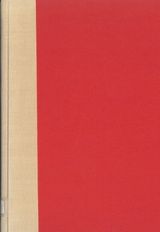 Storefront Revolution: Food Co-ops and the Counterculture
Cox, Craig
Rutgers University Press, 1994 In the 1960s, the cooperative networks of food stores, restaurants, bakeries, bookstores, and housing alternatives were part counterculture, part social experiment, part economic utopia, and part revolutionary political statement. The co-ops gave activists a place where they could both express themselves and accomplish at least some small-scale changes. By the mid-1970s, dozens of food co-ops and other consumer- and work-owned enterprises were operating throughout the Twin Cities, and an alternative economic network - with a People's Warehouse at its hub - was beginning to transform the economic landscape of the metropolitan Minneapolis-St. Paul area.
However, these co-op activists could not always agree among themselves on their goals. Craig Cox, a journalist who was active in the co-op movement, here provides the first book to look at food co-ops during the 1960s and 1970s. He presents a dramatic story of hope and conflict within the Minneapolis network, one of the largest co-op structures in the country. His "view from the front" of the "Co-op War" that ensued between those who wanted personal liberation through the movement and those who wanted a working-class revolution challenges us to re-thing possiblities for social and political change. Cox provides not a cynical portrait of sixties idealism, but a moving insight into an era when anything seemed possible.
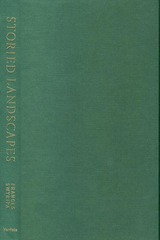 Storied Landscapes: Ethno-Religious Identity and the Canadian Prairies
Frances Swyripa
University of Manitoba Press, 2010 Storied Landscapes is a beautifully written, sweeping examination of the evolving identity of major ethno-religious immigrant groups in the Canadian West. Viewed through the lens of attachment to the soil and specific place, and through the eyes of both the immigrant generation and its descendants, the book compares the settlement experiences of Ukrainians, Mennonites, Icelanders, Doukhobors, Germans, Poles, Romanians, Jews, Finns, Swedes, Norwegians, and Danes. It reveals how each group’s sense of identity was shaped by a complex interplay of physical and emotional ties to land and place, and how that sense of belonging influenced, and was influenced by, relationships not only within the prairies and the Canadian nation state but also with the homeland and its extended diaspora. Through a close study of myths, symbols, commemorative traditions, and landmarks, Storied Landscapes boldly asserts the inseparability of ethnicity and religion both to defining the prairie region and to understanding the Canadian nation-building project.
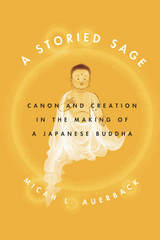 A Storied Sage: Canon and Creation in the Making of a Japanese Buddha
Micah L. Auerback
University of Chicago Press, 2016 Since its arrival in Japan in the sixth century, Buddhism has played a central role in Japanese culture. But the historical figure of the Buddha, the prince of ancient Indian descent who abandoned his wealth and power to become an awakened being, has repeatedly disappeared and reappeared, emerging each time in a different form and to different ends. A Storied Sage traces this transformation of concepts of the Buddha, from Japan’s ancient period in the eighth century to the end of the Meiji period in the early twentieth century.
Micah L. Auerback follows the changing fortune of the Buddha through the novel uses for the Buddha’s story in high and low culture alike, often outside of the confines of the Buddhist establishment. Auerback argues for the Buddha’s continuing relevance during Japan’s early modern period and links the later Buddhist tradition in Japan to its roots on the Asian continent. Additionally, he examines the afterlife of the Buddha in hagiographic literature, demonstrating that the late Japanese Buddha, far from fading into a ghost of his former self, instead underwent an important reincarnation. Challenging many established assumptions about Buddhism and its evolution in Japan, A Storied Sage is a vital contribution to the larger discussion of religion and secularization in modernity.
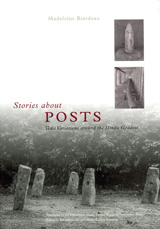 Stories about Posts: Vedic Variations around the Hindu Goddess
Madeleine Biardeau
University of Chicago Press, 2004 Stories about Posts is the magnum opus of Madeleine Biardeau, one of the most influential Indologists of the twentieth century. Nearly twenty years in the making, it connects her varied studies on the Sanskrit epics, the Hindu Goddess, Vedic sacrifice, rural India, and the interpretation of Hinduism.
After exploring several ethnographic facts that have escaped the notice of previous observers, Biardeau presents a variety of hunches, hypotheses, and insights building up to the provocative thesis of Stories about Posts: that the variations found in the contemporary cult of the Goddess—in both her royal and rural village aspects—reveal untraced regional histories of the Vedic sacrificial post, the yupa. Biardeau's work opens up new ways of thinking about Vedic sacrificial themes and elements as they recur in post-Vedic texts and iconographies. It also connects wayside stones in Maharashtra named after the buffalo to stones, posts, and people named after a so-called Buffalo King in Maharashtra, Andhra Pradesh, Karnataka, and Tamilnadu.
A work of magnificent scholarship and fieldwork, Stories about Posts, in ways no previous work has attempted, much less accomplished, unravels much of the mystery surrounding contemporary Hindu ritual by connecting it to the ancient Sanskrit epics. As such, it will fascinate students of Indology, religious studies, and anthropology for years to come.
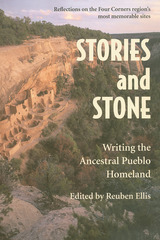 Stories and Stone: Writing the Ancestral Pueblo Homeland
Reuben Ellis
University of Arizona Press, 1997 Chaco Canyon, Canyon de Chelly, Mesa Verde, Hovenweep . . . For many, such historic places evoke images of stone ruins, cliff dwellings, pot shards, and petroglyphs. For others, they recall ancestry. Remnants of the American Southwest's ancestral Puebloan peoples (sometimes known as Anasazi) have mystified and tantalized explorers, settlers, archaeologists, artists, and other visitors for centuries. And for a select group of writers, these ancient inhabitants have been a profound source of inspiration.
Collected here are more than fifty selections from a striking body of literature about the prehistoric Southwest: essays, stories, travelers' reports, and poems spanning more than four centuries of visitation. They include timeless writings such as John Wesley Powell's The Exploration of the Colorado River and Its Tributaries and Frank Hamilton Cushing's "Life at Zuni," plus contemporary classics ranging from Colin Fletcher's The Man Who Walked Through Time to Wallace Stegner's Beyond the Hundredth Meridian to Edward Abbey's "The Great American Desert." Reuben Ellis's introduction brings contemporary insight and continuity to the collection, and a section on "reading in place" invites readers to experience these great works amidst the landscapes that inspired them. For anyone who loves to roam ancient lands steeped in mystery, Stories and Stone is an incomparable companion that will enhance their enjoyment.
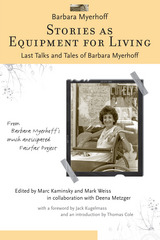 Stories as Equipment for Living: Last Talks and Tales of Barbara Myerhoff
Barbara Myerhoff
University of Michigan Press, 2007 Barbara Myerhoff's groundbreaking work in reflexivity and narrative ethnography broke with tradition by focusing not on the raw ethnographic data, but on her interaction with those she studied. Myerhoff's unfinished projects, including her final talks on storytelling, ritual, and the "culture of aging and Yiddishkeit," offer a magisterial summary of her life's work. "The beauty of Stories as Equipment for Living is the quality of being a compilation of rescued fragments, bits and pieces of a great master's writing and thinking that were coming towards synthesis but had never reached a finished form prior to her death. This collection is an examination of the place of narrative in human life, the synthetic nature of culture and the constant search for visibility particularly by those relegated for one reason or another to the margins. A thought-provoking book worthy of extended reflection."
---Jack Kugelmass, Professor of Anthropology and Director of Jewish Studies, University of Florida "Stories as Equipment for Living achieves a nice balance between preserving Myerhoff's work in its original form and reconstructed contexts, but presenting it in a manner relevant to readers a generation after her death. The book documents Myerhoff's growing involvement with Jewish culture, the actual process of anthropological work through field notes, and the picture of how she always was bouncing the fine details of this combined professional and personal venture off the 'big questions' of anthropology in its broadest sense."
---Harvey E. Goldberg, Professor of Sociology and Anthropology, Hebrew University, Israel "These essays capture the rhythm of Barbara Myerhoff's words and her vivid and distinctive train of thought, bringing the reader into the classroom of one of anthropology's finest lecturers. As an anthropologist with a poet's gift for language, she utilizes the tools of ethnography and extraordinary powers of observation---a remarkable 'ethnographic eye'---to explore the outward expressions and inner lives of the Fairfax neighborhood of L.A. These stories are not only glorious introductions to the study of culture, but provide in their revelations a reason for studying it. They are required reading for anyone passionate to know what an anthropologist can teach us about communities and ultimately about ourselves."
---Steve Zeitlin, Director, City Lore: The New York Center for Urban Folk Culture "Master of the third voice, the voice of collaboration, Myerhoff is at once a consummate listener and inspired storyteller. This book offers a rare and luminous opening into the working process and wisdom of one of the great anthropologists of the twentieth century."
---Barbara Kirshenblatt-Gimblett, Professor of Performance Studies at New York University and coauthor of They Called Me Mayer July: Painted Memories of a Jewish Childhood in Poland Before the Holocaust "Myerhoff and her collaborators have given her 'Hasidim,' her disciples old and new, a final and precious gift."
---Jonathan Boyarin, The Robert M. Beren Distinguished Professor of Modern Jewish Studies at the University of Kansas and author of Thinking in Jewish Barbara Myerhoff was a renowned anthropologist who did pioneering work in gerontology, Jewish studies, folklore, and narrative anthropology. She is best known for her ethnography of and personal involvement with a community of elderly immigrant Jews in California. Her writings and lectures have had an enormous impact on all of these areas of study, and her books are widely celebrated, especially Number Our Days, whose companion documentary film won an Academy Award. Marc Kaminsky is a psychotherapist, a poet, a writer, and the former codirector of the Institute on Humanities, Arts and Aging of the Brookdale Center on Aging. Mark Weiss is a writer, an editor, a translator, and a poet; his books include the widely praised Across the Line/Al Otro Lado. Deena Metzger is a novelist, a poet, and the founding codirector (with Marc Kaminsky) of the Myerhoff Center. Thomas R. Cole is the Beth and Toby Grossman Professor and Director of the McGovern Center for Health, Humanities, and the Human Spirit at the University of Texas Health Science Center in Houston, and a Professor of Humanities in the Department of Religious Studies at Rice University; his expertise lies in the history of aging and humanistic gerontology.
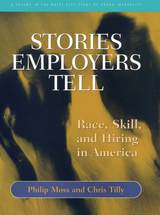 Stories Employers Tell: Race, Skill, and Hiring in America
Philip Moss
Russell Sage Foundation, 2001 Is the United States justified in seeing itself as a meritocracy, where stark inequalities in pay and employment reflect differences in skills, education,and effort? Or does racial discrimination still permeate the labor market, resulting in the systematic under hiring and underpaying of racial minorities, regardless of merit? Throughout the 1980s and early 1990s African Americans have lost ground to whites in the labor market, but this widening racial inequality is most often attributed to economic restructuring, not the racial attitudes of employers. It is argued that the educational gap between blacks and whites, though narrowing, carries greater penalties now that we are living in an era of global trade and technological change that favors highly educated workers and displaces the low-skilled. Stories Employers Tell demonstrates that this conventional wisdom is incomplete. Racial discrimination is still a fundamental part of the explanation of labor market disadvantage. Drawing upon a wide-ranging survey of employers in Atlanta, Boston, Detroit, and Los Angeles, Moss and Tilly investigate the types of jobs employers offer, the skills required, and the recruitment, screening and hiring procedures used to fill them. The authors then follow up in greater depth on selected employers to explore the attitudes, motivations, and rationale underlying their hiring decisions, as well as decisions about where to locate a business. Moss and Tilly show how an employer's perception of the merit or suitability of a candidate is often colored by racial stereotypes and culture-bound expectations. The rising demand for soft skills, such as communication skills and people skills, opens the door to discrimination that is rarely overt, or even conscious, but is nonetheless damaging to the prospects of minority candidates and particularly difficult to police. Some employers expressed a concern to race-match employees with the customers they are likely to be dealing with. As more jobs require direct interaction with the public, race has become increasingly important in determining labor market fortunes. Frequently, employers also take into account the racial make-up of neighborhoods when deciding where to locate their businesses. Ultimately, it is the hiring decisions of employers that determine whether today's labor market reflects merit or prejudice. This book, the result of years of careful research, offers us a rare opportunity to view the issue of discrimination through the employers' eyes. A Volume in the Multi-City Study of Urban Inequality
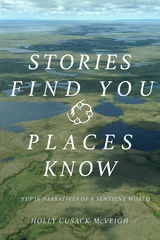 Stories Find You, Places Know: Yup'ik Narratives of a Sentient World
Holly Cusack-McVeigh
University of Utah Press, 2017 Grounded in existing understandings of Yup’ik cosmology and worldview, this work is the first to look at how a Yup’ik community uses stories of place in social life. On the Bering coast of southwest Alaska, Cusack-McVeigh accompanied storytellers during their daily activities. Hearing many narratives repeatedly over a span of years, she came to understand how stories reflected interactions of people and places.
For the Yup’ik people, places are also social actors that react to human actions and emotions. Stories tell how people learn about each other through encounters on the land, and thereby places also learn about people. Places comment on human behavior through the land's responses to specific actions. Stories variously reveal ideas about human associations and relationships between humans and nonhuman beings. Pointing to a systematic correlation between places and narrative elements that has not been previously explored, this volume makes a unique contribution to the literature on place.
Winner of the Brian McConnell Book Award from the International Society for Contemporary Legend Research.
Stories for a Lost Child
Carter Meland
Michigan State University Press, 2017 The summer before going into high school, Fiona receives a mysterious box in the mail, one that she hopes will answer her questions about her Anishinaabe Indian heritage. It contains stories written by the grandfather she never knew, an Anishinaabe man her mother refuses to talk about. As she reads his stories about blackbirds and bigfoot, as well as tales about Indians in space and homeless Native men camping by the river in Minneapolis, Fiona finds other questions arising—questions about her grandfather and the experiences that shaped his stories, questions about her mother’s silence regarding the grandfather she never knew. Fiona’s desire to know more and her mother’s reluctance to share stir up bitter feelings of anger and disappointment that slowly transform as she reads the stories into a warmer understanding of the difficulties of family, love, and the weight of the past.
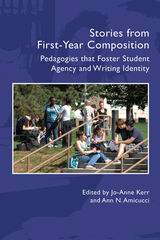 Stories from First-Year Composition: FYC Pedagogies that Foster Student Writing Identity and Agency
Jo-Anne Kerr
University Press of Colorado, 2020 The central value of first-year composition is often questioned, typically accompanied by characterizations of FYC as a “service” course. This collection counters those perceptions, sharing with readers a new FYC story, one that demonstrates a new “service” that the course provides to first-year students, a service that accommodates the realities of writing—that it is never just writing and that the writing process entails much more than plugging in the “right” words (that mean the same to everyone) in predetermined forms. The collection offers insights into effective FYC pedagogies and opportunities for readers to consider and think about their own teaching and their identities as FYC instructors. It offers prompts for reflection, suggestions for further reading, and multimedia components that can deepen and enrich our understandings of teaching FYC and instill a sense of agency for teaching FYC effectively and advocating for its value and relevance.
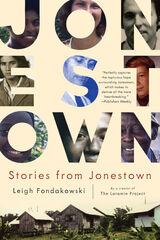 Stories from Jonestown
Leigh Fondakowski
University of Minnesota Press, 2010 The saga of Jonestown didn’t end on the day in November 1978 when more than nine hundred Americans died in a mass murder-suicide in the Guyanese jungle. While only a handful of people present at the agricultural project survived that day in Jonestown, more than eighty members of Peoples Temple, led by Jim Jones, were elsewhere in Guyana on that day, and thousands more members of the movement still lived in California. Emmy-nominated writer Leigh Fondakowski, who is best known for her work on the play and HBO film The Laramie Project, spent three years traveling the United States to interview these survivors, many of whom have never talked publicly about the tragedy. Using more than two hundred hours of interview material, Fondakowski creates intimate portraits of these survivors as they tell their unforgettable stories. Collectively this is a record of ordinary people, stigmatized as cultists, who after the Jonestown massacre were left to deal with their grief, reassemble their lives, and try to make sense of how a movement born in a gospel of racial and social justice could have gone so horrifically wrong—taking with it the lives of their sons and daughters, husbands and wives, fathers and mothers, and brothers and sisters. As these survivors look back, we learn what led them to join the Peoples Temple movement, what life in the church was like, and how the trauma of Jonestown’s end still affects their lives decades later. What emerges are portrayals both haunting and hopeful—of unimaginable sadness, guilt, and shame but also resilience and redemption. Weaving her own artistic journey of discovery throughout the book in a compelling historical context, Fondakowski delivers, with both empathy and clarity, one of the most gripping, moving, and humanizing accounts of Jonestown ever written.
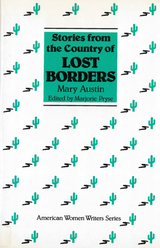 Stories from the Country of Lost Borders by Mary Austin
Pryse, Marjorie
Rutgers University Press, 1987 Mary Austin's The Land of Little Rain (1903) and Lost Borders (1909), both set in the California desert, make intimate connections between animals, people, and the land they inhabit. For Austin, the two indispensable conditions of her fiction were that the region must enter the story "as another character, as the instigator of plot," and that the story must reflect "the essential qualities of the land."
In The Land of Little Rain, Austin's attention to natural detail allows her to write prose that is geologically, biologically, and botanically accurate at the same time that it offers metaphorical insight into human emotional and spiritual experience. In Lost Borders, Austin focuses on both white and Indian women's experiences in the desert, looks for the sources of their deprivation, and finds them in the ways life betrays them, usually in the guise of men. She offers several portraits of strong women characters but ultimately identifies herself with the desert, which she personifies as a woman.
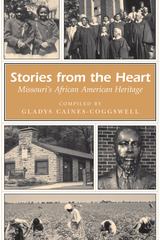 Stories from the Heart: Missouri's African American Heritage
Compiled by Gladys Caines-Coggswell
University of Missouri Press, 2009 Winner, Distinguished Literary Achievement Award, Governor's Humanities Award in Exemplary Community Achievement given by the Missouri Humanities Council, 2010
All along the river, from the front porches of Hannibal to the neighborhoods of St. Louis to the cotton fields of the Bootheel and west to Kansas City, stories are being told.
This collection of family stories and traditional tales brings to print down-home stories about all walks of African American life. Passed down from grandparents and great-grandparents, they have been lovingly gathered by Gladys Caines Coggswell as she visited Missouri communities and participated in storytelling events over the last two decades. These stories bring to life characters with uncommon courage, strength, will, and wit as they offer insight into African American experiences throughout the state’s history.
Often profound, always entertaining, some of these stories hark back to times barely remembered. Many tell of ordinary folks who achieved victories in the face of overwhelming odds. They range from recollections of KKK activities—recalling a Klan leader who owned property on which a black family lived as “the man who was always so nice to us”—to remembered differences between country and city schools and black schoolchildren introduced to Dick and Jane and Little Black Sambo. Stories from the Bootheel shed light on family life, sharecropping, and the mechanization of cotton culture, which in one instance led to a massive migration of rats as the first mechanical cotton pickers came in.
As memorable as the stories are the people who tell them, such as the author’s own “Uncle Pete” reporting on a duck epidemic or Evelyn Pulliam of Kennett telling of her resourceful neighbors in North Lilburn. Loretta Washington remembers sitting on her little wooden stool beside her great-grandmother’s rocking chair on the front porch in Wardell, mesmerized by stories—and the time when rocking chair and little wooden stool were moved inside and the stories stopped. Marlene Rhodes writes of her mother’s hero, Odie, St. Louis “Entrepreneur and English gentleman.”
Whether sharing previously unknown stories from St. Louis or betraying the secret of “Why Dogs Chase Cats,” this book is a rich repository of African American life. And if some of these tales seem unusual, the people remembering them will be the first to tell you: that’s the way it was. Coggswell preserves them for posterity and along with them an important slice of Missouri history.
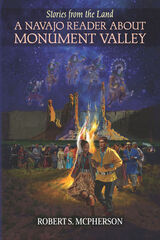 Stories from the Land: A Navajo Reader about Monument Valley
Robert S. McPherson
University Press of Colorado, 2022 Stories from the Land: A Navajo Reader about Monument Valley provides a traditional Navajo view of this iconic landscape and its people. Couched in the oral tradition of the elders, the reader is invited to view their history and culture through the eyes of those born at the turn of the twentieth century before massive inroads from the dominant culture began to erode the old ways. Each chapter follows a chronological sequence beginning with the creation of the world (specifically Monument Valley), teachings about the Anasazi, then later the Long Walk Period and incarceration at Fort Sumner. Subsequent chapters discuss traditional life and values, trading posts and their ties to the community, the devastation of livestock reduction, the film industry during the John Wayne/John Ford years, Anglo induced cultural change, uranium mining, and reaction to the current explosion of tourism. All of this as seen through the eyes of the Navajo people of Monument Valley and filtered through their unique cultural perspective. For the reader interested in authentic Navajo teachings, these people’s ties to the land, and a very different view of the world and how it functions, Stories from the Land offers fascinating insight that is fast disappearing from our world.
Stories from the Round Barn
Jacqueline Dougan Jackson
Northwestern University Press, 2000 Using stories, anecdotes, history, and even veterinary science, Jacqueline Dougan Jackson recreates life on the Dougan Guernsey Farm Dairy, founded in 1911 by W.J. Dougan near Beloit, Wisconsin. A fascinating mix of biography, oral history, and creative nonfiction, STORIES FROM THE ROUND BARN is a moving tribute to the legacy of generations past. 53 photos and line drawings .
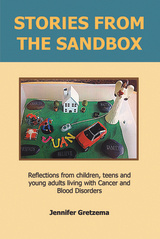 Stories from the Sandbox: Reflections from children, teens and young adults living with Cancer and Blood Disorders
Jennifer Gretzema
Michigan Publishing, 2015 The images and stories in this book were created by patients and families living with Cancer and Blood Disorders. Their expressions, created in the sand and conveyed through the written word, provide insight into what it is like to live with health challenges. Sand tray therapy is a recognized therapeutic modality used with children and adults, providing a sacred space to process experiences using symbols instead of language. Sometimes meaning is further revealed through talking about a sand tray. Other times, it can remain a private expression that holds significance only to its creator. It is a helpful way for youth to process their past and present medical experience, help them set goals, and to teach others about their needs. Sand tray is a window into the thoughts, feelings, and coping styles of youth struggling with illness and hospitalization. Importantly, as youth with chronic medical illnesses often experience pain and discomfort as part of their treatment, the ability to have positive tactile experiences can be a very healing process. This collection of photos and personal stories, facilitated by the Child and Family Life Department, C.S. Mott Children’s Hospital at the University of Michigan, was compiled so that other patients, their families, and their friends can share the authors’ journeys as we all continue to battle these difficult diseases.
Stories from the Wreckage: A Great Lakes Maritime History Inspired by Shipwrecks
John Odin Jensen
Wisconsin Historical Society Press, 2019 Every shipwreck has a story that extends far beyond its tragic end. The dramatic tales of disaster, heroism, and folly become even more compelling when viewed as junction points in history—connecting to stories about the frontier, the environment, immigration, politics, technology, and industry. In Stories from the Wreckage, John Odin Jensen examines a selection of Great Lakes shipwrecks of the wooden age for a deeper dive into this transformative chapter of maritime history. He mines the archeological evidence and historic record to show how their tragic ends fit in with the larger narrative of Midwestern history. Featuring the underwater photography of maritime archeologist Tamara Thomsen, this vibrant volume is a must-have for shipping enthusiasts as well as anyone interested in the power of water to shape history.
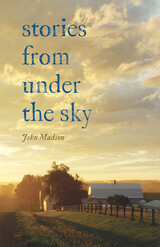 Stories From Under The Sky
John Madson
University of Iowa Press, 2006 In Stories from under the Sky, John Madson salutes the outdoor life. These thirty-six essays display his healthy respect for the forces of nature, without diminishing his wry awareness of the foibles of beast, bird, fish, and human. In sections on mammals, the river, and birds, Madson acquaints readers with some real characters—not all of them four-footed! Some are old favorites: the raccoon, the otter, the fawn, and the badger. Others are less familiar—the demonic shrew, the indomitable dogfish, and the exotic blue heron. Even the “unloved” come in for their share of attention: toads, waterbugs, wasps, and turkey buzzards. Madson has a yarn to spin about each one. Where else would you find an essay on “Snake Liars”? Whatever the topic, Madson’s love of nature shines through, be it coon hunting or an explanation of the incredible bird machine. His obvious affection is tempered with the recognition that not everything “natural” is a pretty sight. All of which leaves readers with a better understanding of life under the sky.
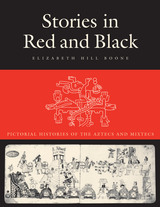 Stories in Red and Black: Pictorial Histories of the Aztecs and Mixtecs
By Elizabeth Hill Boone
University of Texas Press, 2000 Winner, Arvey Award, Association for Latin American Art, 2001
Honorable Mention, Honorable Mention, George Wittenborn Memorial Book Award, Art Libraries Society of North America, 2001 The Aztecs and Mixtecs of ancient Mexico recorded their histories pictorially in images painted on hide, paper, and cloth. The tradition of painting history continued even after the Spanish Conquest, as the Spaniards accepted the pictorial histories as valid records of the past. Five Pre-Columbian and some 150 early colonial painted histories survive today. This copiously illustrated book offers the first comprehensive analysis of the Mexican painted history as an intellectual, documentary, and pictorial genre. Elizabeth Hill Boone explores how the Mexican historians conceptualized and painted their past and introduces the major pictorial records: the Aztec annals and cartographic histories and the Mixtec screenfolds and lienzos. Boone focuses her analysis on the kinds of stories told in the histories and on how the manuscripts work pictorially to encode, organize, and preserve these narratives. This twofold investigation broadens our understanding of how preconquest Mexicans used pictographic history for political and social ends. It also demonstrates how graphic writing systems created a broadly understood visual "language" that communicated effectively across ethnic and linguistic boundaries.
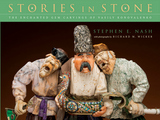 Stories in Stone: The Enchanted Gem Carvings of Vasily Konovalenko
Stephen E. Nash
University Press of Colorado, 2016 Vasily Konovalenko’s unique, dynamic, and theatrical sculptures stand alone in the gem-carving world—bawdy but not salacious, political but not diplomatic, boisterous and exuberant yet occasionally sensitive. Stories in Stone offers the first comprehensive treatment of the life of this little-known Russian artist and the remarkable history of his wonderful sculptures.
Part art catalogue and part life history, Stories in Stone tells the tale of Konovalenko’s impressive works, explaining their conception, creation, and symbolism. Each handcrafted figure depicts a scene from life in the Soviet Union—a bowman hunting snow geese, a woman reposing in a hot spring surrounded by ice, peasants spinning wool, a pair of gulag prisoners sawing lumber—painstakingly rendered in precious stones and metals. The materials used to make the figurines are worth millions of dollars, but as cultural artifacts, the sculptures are priceless. Author Stephen Nash draws upon oral history and archival research to detail the life of their creator, revealing a rags-to-riches and life-imitates-art narrative full of Cold War intrigue, Communist persecution, and capitalist exploitation.
Augmented by Richard M. Wicker’s exquisite and revelatory photographs of sixty-five Konovalenko sculptures from museums, state agencies, and private collections around the world, Stories in Stone is a visually stunning glimpse into a unique corner of Russian art and cultural history, the craft and science of gem carving, and the life of a Russian artist and immigrant who loved people everywhere.
Co-published with the Denver Museum of Nature & Science, home to the most significant collection of Russian gem-carving sculptures by Vasily Konovalenko in the world.
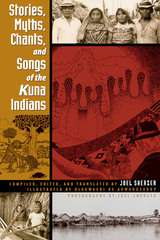 Stories, Myths, Chants, and Songs of the Kuna Indians
Compiled, edited, and translated by Joel Sherzer
University of Texas Press, 2004 The Kuna Indians of Panama, probably best known for molas, their colorful appliqué blouses, also have a rich literary tradition of oral stories and performances. One of the largest indigenous groups in the South American tropics, the majority of them (about 70,000) reside in Kuna Yala, a string of island and mainland villages stretching along the Caribbean coast. It is here that Joel Sherzer lived among them, photographing and recording their verbal performances, which he feels are representative of the beauty, complexity, and diversity of the oral literary traditions of the indigenous peoples of Latin America. This book is organized into three types of texts: humorous and moralistic stories; myths and magical chants; and women's songs. While quite different from one another, they share features characteristic of Kuna literature as a whole, including appreciation of their environment and a remarkable knowledge of their plants and animals; a belief in spirits as an important component of their world in curing, magic, and aesthetics; and, especially, great humor and a sense of play. Vividly illustrated by a Kuna artist and accompanied by photographs that lend a sense of being present at the performances, the texts provide readers with a unique aesthetic perspective on this rich culture while preserving an endangered and valuable indigenous oral tradition.
Stories No One Hopes Are about Them
A. J. Bermudez
University of Iowa Press, 2022 2023 Lammy Award for Bisexual Fiction, shortlist
At once playfully dark and slyly hopeful, Stories No One Hopes Are about Them explores convergences of power, privilege, and place. Characters who are ni de aquí, ni de allá—neither from here nor there—straddle competing worlds, disrupt paradigms, and transition from objects of other people’s stories to active subjects and protagonists of their own. Narratives of humanity and environment entwine with nuanced themes of colonization, queerness, and evolution at the forefront. Big things happen in this collection. But it’s also a collection of small intimacies: misremembered names, chipped teeth, and private rituals; unexpected alliances and barely touched knees beneath uniform skirts; minutiae of the natural world; incidents that quietly, achingly, and delightfully transgress the familiar.
Stories of a Forest Ranger: Tales of Life in the U.S. Forest Service
Pete Griffin
Parkhurst Brothers, Inc., 2020 Stories about the life of a Forest Ranger, the habitat and animals he has worked to protect, together with no small number of self-effacing humorous anecdotes. This book of stories draws on the author's thirty years in the US Forest service, including encounters with bears, elk, moose, and that strangest of animals, humans. Laced with happy humor, the stories inform and educate while they entertain. Adventures have come along with the work and Griffin is a natural storyteller.
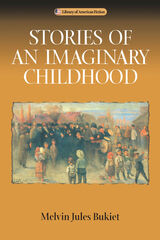 Stories Of An Imaginary Childhood
Melvin Jules Bukiet
University of Wisconsin Press, 2002 In Stories of an Imaginary Childhood Melvin Jules Bukiet inscribes the world that might have been his own if not for the catastrophe that destroyed most of Jewish life in eastern Europe during the 1940s. Set before the Holocaust in the tiny Polish shtetl of Proszowice, each interconnected story follows the young protagonist through the pleasures and humiliations of childhood and the rites of manhood, as he fights against historical, social, and psychological forces that threaten to pull him down.
"Bukiet proves that he is an expert at the [short story] form. His stories lift and soar, encompassing a world of truth in just a few pages. His characters have flesh and life. . . . Bukiet’s topics are varied and universal: first love, growing up, trying to get along with people who are different. Each of these is approached with great humor and a deep respect for life experience."—Daniel Neman, Richmond News Leader
"Jewish-American fiction of a new order, one able to bring the best that has been thought and said about voice and literary texture to the service of a world with richer meaning and a deeper resonance."—Sanford Pinsker, Midstream
"Bukiet is enchanting, original, and thoroughly irresistible in any disguise. Stories of an Imaginary Childhood is an extraordinary achievement, an immensely enjoyable collection of truly remarkable tales."—Susan Miron, Miami Herald
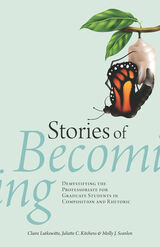 Stories of Becoming: Demystifying the Professoriate for Graduate Students in Composition and Rhetoric
Claire Lutkewitte
Utah State University Press, 2021 Based on findings from a multiyear, nationwide study of new faculty in the field of rhetoric and composition, Stories of Becoming provides graduate students—and those who train them—with specific strategies for preparing for a career in the professoriate. Through the use of stories, the authors invite readers to experience their collaborative research processes for conducting a nationwide survey, qualitative interviews, and textual analysis of professional documents.
Using data from the study, the authors offer six specific strategies—including how to manage time, how to create a work/life balance, and how to collaborate with others—that readers can use to prepare for the composition and rhetoric job market and to begin their careers as full-time faculty members. Readers will learn about the possible responsibilities they may take on as new faculty, particularly those that go beyond teaching, research, service, and administration to include navigating the politics of higher education and negotiating professional identity construction. And they will also engage in activities and answer questions designed to deepen their understanding of the field and help them identify their own values and desired career trajectory.
Stories of Becoming demystifies the professoriate, compares what current new faculty have to say of their job expectations with the realities that students might face when on the job, and brings to light the invisible, behind-the-scenes work done by new faculty. It will be invaluable to graduate students, those who teach graduate students, new faculty, and hiring administrators in composition and rhetoric.
 Stories of Beginning Teachers: First Year Challenges and Beyond
Alysia Roehrig
University of Notre Dame Press, 2002 Stories of Beginning Teachers offers insight into the challenges and triumphs of beginning teachers, presenting both research findings and case studies on the challenges faced by new teachers. More than twenty categories and five hundred specific examples of potential problems and issues are cited in Part I of this book. Armed with such useful information about the most frequent, serious, and persistent challenges, Roehrig, Pressley, and Talotta assert, a young educator will be better prepared to teach and more likely to succeed.
Part II contains stories of the teaching experience of participants in the University of Notre Dame's Alliance for Catholic Education. Included are nine vivid stories of the struggles and successes of new teachers reflecting on their first year, as well as sixteen shorter summaries of the daily lives of beginning teachers. Reading this book, a novice teacher will better understand student motivation, student learning, human development, classroom organization, classroom management, assessment techniques, and the administration of schools.
ALYSIA D. ROEHRIG is a doctoral student in the Department of Psychology at the University of Notre Dame.
MICHAEL PRESSLEY is professor of teacher education and professor of counseling, educational psychology, and special education at Michigan State University.
DENISE A. TALOTTA teaches at the Marist Brothers International School in Kobe, Japan.
----------
"Stories of Beginning Teachers should become a prerequisite reading for all college students considering the teaching profession. Beginning and experienced teachers, alike, will be inspired to reinvent themselves and create effective solutions to the more than 500 professional concerns that Roehrig, Pressley and Talotta so concisely and effectively present. No prior work has identified the challenges facing the teaching profession as vividly as this book. Each chapter goes beyond merely tugging at our heart strings to convincingly demonstrating the numerous solution-processes that have been used by first and second year teachers to address complex professional isues. The comprehensive presentation of kindergarten through high school issues will make this book valuable to a wide audience and variety of college courses. I can't thank Roehrig, Pressley, and Talotta enough for providing research that moves beyond cliches to concrete illustrations of how to make all teachers' dreams come true. Forwarned is forarmed, and Stories of Beginning Teachers can enable all teachers to develop the abilities to provide maximum learning opportunities for all students under their care." --Cathy Collins Block, Texas Christian University
"This timely book is a survival kit for beginning teachers. It serves as an excellent contribution to the field of higher education. Stories of Beginning Teachers addresses the complex issues facing educators and schools of education in a distinctive manner. It is an excellent text for training preservice teachers to become reflective practioners." --Lynn Romeo, Monmouth University
"The findings in this book are timely and important. The authors make good use of both primary and secondary sources, and the stories written by the beginning teachers are very appealing." --Ann Loranger, University of New Hampshire
"Teaching Service and Alternative Teacher Education is highly significant to scholars and students in related disciplines. It reports on a program that is likely to be used as a model for similar programs for years to come. This volume will be an important resource for anyone who is interested in alternative teacher education. Readers cannot fail to be impressed by the ACE program--and they will learn a lot about the design and development of quality alternative teacher education." --Joanna Williams, Teachers College, Columbia University
"ACE is an innovative program and has a worthy story to tell. Teaching Service and Alternative Teacher Education makes a solid contribution to the fields of Catholic education and teacher education reform. It will be significant for educators interested in innovative approaches to the design of teacher preparation experiences." --Jennifer Whitcomb, University of Denver
"... an informed and informative survey and description of the unique and manifold challenges new classroom teachers face ... Stories of Beginning Teachers is especially commended reading for anyone contemplating embarking on a teaching career." --Library Bookwatch
"[A]n extremely detailed list of the problems new teachers are likely to face, drawn from case studies of first- and second-year teachers. ...[T]he case studies included in the second part of the book will support new teachers by assuring them that they are not alone, that others have faced the same challenges in the past, and that they will pass on their experience to others in the future." --Journal of Adolescent & Adult Literacy
"Stories of Beginning Teachers: First-Year Challenges and Beyond should be required reading for all student teaching candidates, as well as suggested reading for new teachers. Roehrig, Pressley, and Talotta have provided the reader with a text that has been too long in coming. It is a powerful and compelling account of the challenges faced by new teachers and veteran teachers and provides a view of the world that is larger than ourselves. ...[I}t makes a major contribution to the literature on classroom management and to the stories that teachers tell." --Teachers College Record
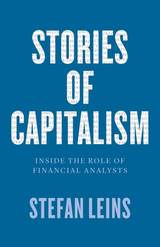 Stories of Capitalism: Inside the Role of Financial Analysts
Stefan Leins
University of Chicago Press, 2018 The financial crisis and the recession that followed caught many people off guard, including experts in the financial sector whose jobs involve predicting market fluctuations. Financial analysis offices in most international banks are supposed to forecast the rise or fall of stock prices, the success or failure of investment products, and even the growth or decline of entire national economies. And yet their predictions are heavily disputed. How do they make their forecasts—and do those forecasts have any actual value?
Building on recent developments in the social studies of finance, Stories of Capitalism provides the first ethnography of financial analysis. Drawing on two years of fieldwork in a Swiss bank, Stefan Leins argues that financial analysts construct stories of possible economic futures, presenting them as coherent and grounded in expert research and analysis. In so doing, they establish a role for themselves—not necessarily by laying bare empirically verifiable trends but rather by presenting the market as something that makes sense and is worth investing in. Stories of Capitalism is a nuanced look at how banks continue to boost investment—even in unstable markets—and a rare insider’s look into the often opaque financial practices that shape the global economy.
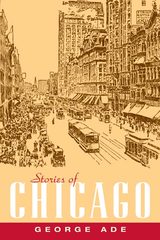 Stories of Chicago
George Ade
University of Illinois Press, 1941 The stories of George Ade are energetic, detailed, and affectionate slices of the social life of Chicago in the Gay Nineties. Originally appearing in the Chicago Record between 1893 and 1900, they range from candid character sketches and snapshots of everyday street scenes to fiction and fantasies drawing on the endless stream of inspiration the bustling city provided.
Ade was hailed by such contemporaries as Mark Twain, H. L. Mencken, and William Dean Howells, and the stories contained in this volume showcase the full spectrum of his skills: his keen eye for the absurd and sublime moments of daily urban life, his ear for the vernacular, his shrewd understanding of the Midwestern character, and above all his firm belief that all of human life was worthy literary subject matter.
This volume includes many lively and evocative drawings by John T. McCutcheon, Ade's college classmate and friend who came to be known as "the Dean of American Cartoonists." Also included is an introduction by Franklin J. Meine, incorporating interviews with Ade and letters from John McCutcheon, Mark Twain, and Ade's managing editor, Charles H. Dennis.
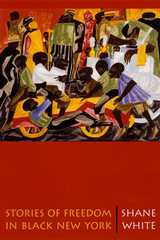 Stories of Freedom in Black New York
Shane White
Harvard University Press, 2002 Stories of Freedom in Black New York recreates the experience of black New Yorkers as they moved from slavery to freedom. In the early decades of the nineteenth century, New York City's black community strove to realize what freedom meant, to find a new sense of itself, and, in the process, created a vibrant urban culture. Through exhaustive research, Shane White imaginatively recovers the raucous world of the street, the elegance of the city's African American balls, and the grubbiness of the Police Office. It allows us to observe the style of black men and women, to watch their public behavior, and to hear the cries of black hawkers, the strident music of black parades, and the sly stories of black conmen.
Taking center stage in this story is the African Company, a black theater troupe that exemplified the new spirit of experimentation that accompanied slavery's demise. For a few short years in the 1820s, a group of black New Yorkers, many of them ex-slaves, challenged pervasive prejudice and performed plays, including Shakespearean productions, before mixed race audiences. Their audacity provoked feelings of excitement and hope among blacks, but often of disgust by many whites for whom the theater's existence epitomized the horrors of emancipation.
Stories of Freedom in Black New York brilliantly intertwines black theater and urban life into a powerful interpretation of what the end of slavery meant for blacks, whites, and New York City itself. White's story of the emergence of free black culture offers a unique understanding of emancipation's impact on everyday life, and on the many forms freedom can take.
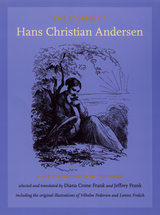 The Stories of Hans Christian Andersen: A New Translation from the Danish
Hans Christian Andersen
Duke University Press, 2005 On the bicentennial of Hans Christian Andersen’s birth, this collection takes Andersen out of the nursery and places him squarely in the literary pantheon. While Andersen’s tales continue to seize the imagination with their singular blend of simplicity, eccentricity, and charm, English-language readers have until now had to content themselves with inaccurate retellings and inadequate translations. Diana Crone Frank, a Danish novelist and linguist, and Jeffrey Frank, a novelist and editor at the New Yorker, offer a much-needed modern translation. In this collection are twenty-two tales that best represent Andersen’s literary legacy, including such classics as “The Little Mermaid,” “The Ugly Duckling,” “Thumbelisa,” and “The Emperor’s New Clothes,” as well as largely unfamiliar stories like “By the Outermost Sea.” Illuminating notes clarify references in the tales. And in an introductory essay, the Franks explore the writer and his times, placing the enigmatic and often bizarre figure of Andersen among his literary contemporaries, such as Charles Dickens and Søren Kierkegaard, with whom he crossed paths; and they bring to life Andersen’s fascinating relationship with the United States. Illustrated with the delicate and beautiful drawings that accompanied the original Danish publication, The Stories of Hans Christian Andersen will delight readers of all ages.
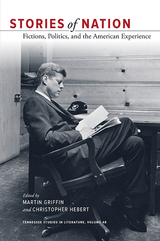 Stories of Nation: Fictions, Politics, and the American Experience
Christopher Hebert
University of Tennessee Press, 2017 Throughout American history there has been an oddly close relationship between the seductive appeals of narrative fiction and those of political rhetoric and advocacy. The aim of Stories of Nation: Fictions, Politics, and the American Experience is to explore what political narratives and the cultural poetics behind them reveal about the way our personal and intimate lives are deeply connected with the public arena and the political process.
The first section of the book, “The Politics of Fictions,” contains essays focused on works of fiction consciously dramatizing the political realm. The second group of contributions, “The Fictions of Politics,” explores structures and motifs from the narrative arts in discourses of American political life, and the interactions of public institutions and policy with forms of fictional representation, from novels to popular music and TV drama.
The essays presented here broaden the conversation in American literary studies about what constitutes “the political” in literature and culture by reintroducing the dimension of institutional or representative politics. Likewise, Stories of Nation aims to repair the lines of communication between the idea that all fiction is political, and the view that political speech is a subgenre of literature all the more in need of examination in a highly polarized society.
The range of perspectives in Stories of Nation will engage students of literature, popular culture, and politics alike.
MARTIN GRIFFIN is an associate professor in the Department of English at the University of Tennessee. He is the author of Ashes of the Mind: War and Memory in Northern Literature, 1865–1900 (2009) and co-author, with Constance DeVereaux, of Narrative, Identity, and the Map of Cultural Policy: Once Upon a Time in a Globalized World (2013).
CHRISTOPHER HEBERT is an assistant professor in the Department of English at the University of Tennessee and is former senior acquisitions editor at the University of Michigan Press. He is the author of the novels Angels of Detroit (2016) and The Boiling Season (2012).
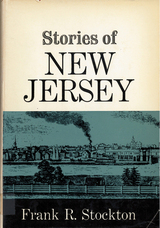 Stories of New Jersey
Stockton, Frank
Rutgers University Press, 1961 Frank R. Stockton's stories recreate the events and moods of New Jersey from the days of the Lenni-Lenape Indians and the Dutch colonists to the expolits of New Jerseyans in the Mexican War. Here are the colorful historical and legendary figures of New Jersey's past: colonials who fought, traded with, and were captured by Indians; the perpetrators of New Jersey's own Tea Party; revolutionary heroes and heroines; frontiersmen, early inventors, schoolmasters, doctors, and privateersmen. Some of their stories have been told many times, but rarely as well. These tales are reproduced exactly as they first appeared in 1896, in a book which remained in print until 1945 and which has remained so popular over the years that it has in itself become a part of New Jersey's history. The book's turn-of-the-century flavor is enhanced by many illustrations, including drawings by twenty-one artists that provide realistic detail in the style of a bygone era.
 Stories of Open: Opening Peer Review through Narrative Inquiry
Emily Ford
Association of College & Research Libraries, 2021 Peer review processes in scholarly publishing are often hidden behind layers of opacity, leaving authors—and even reviewers—with many questions about the process. Open peer review is one way to improve the practice. It can shorten the time between manuscript submission and publication, hold reviewers accountable for their work, make more apparent the hidden labor of reviewing and editing, allow for collaborative discourse between authors and reviewers, and more. Even with these benefits, open peer review is not widely accepted or understood. Few academic librarians have experienced it, and each implementation can be different; anything open is highly nuanced and contextual. Ultimately, when we discuss “open,” we must discuss the stories around it. What is the aim? What are the pitfalls? What are the gains? And are we trying to simply replicate a broken system instead of reinventing it? Stories of Open: Opening Peer Review through Narrative Inquiry examines the methods and processes of peer review, as well as the stories of those who have been through it. Eleven chapters are divided into three parts: • Part 1: Orientation. This section offers a conceptual frame for the book, providing details about narrative inquiry as a methodology and the author’s worldview and research approach. • Part 2: The Stories (The Story Middle). What is the standard experience of peer review in our field? This section shares stories told from a variety of viewpoints and roles—author, editor, and referee—and explores how these roles interact, the tension between them, and the duality and sometimes multiplicity of roles experienced by any one individual. • Part 3: Coda. These four chapters tie the stories to the idea of open and look in detail at the research method, as well as imagine how we might move forward—reflecting on our past stories to create future ones. When we open ourselves to others’ experiences, we reflect on our own. Stories of Open offers questions for reflection at the end of many chapters in order to assist in the continued exploration of your own experiences with peer review, and encourages the use of these reflections in creating new and improved peer review methods. This book is also available as an open access edition at https://bit.ly/ACRLStoriesofOpen
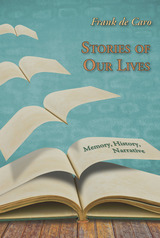 Stories of Our Lives: Memory, History, Narrative
Frank de Caro
Utah State University Press, 2013 In Stories of Our Lives Frank de Caro demonstrates the value of personal narratives in enlightening our lives and our world. We all live with legends, family sagas, and anecdotes that shape our selves and give meaning to our recollections. Featuring an array of colorful stories from de Caro’s personal life and years of field research as a folklorist, the book is part memoir and part exploration of how the stories we tell, listen to, and learn play an integral role in shaping our sense of self. De Caro’s narrative includes stories within the story: among them a near-mythic capture of his golden-haired grandmother by Plains Indians, a quintessential Italian rags-to-riches grandfather, and his own experiences growing up in culturally rich 1950s New York City, living in India amid the fading glories of a former princely state, conducting field research on Day of the Dead altars in Mexico, and coming home to a battered New Orleans after Hurricane Katrina. Stories of Our Lives shows that our lives are interesting, and that the stories we tell—however particular to our own circumstances or trivial they may seem to others—reveal something about ourselves, our societies, our cultures, and our larger human existence.
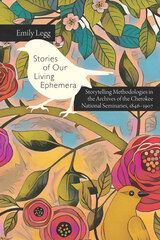 Stories of Our Living Ephemera: Storytelling Methodologies in the Archives of the Cherokee National Seminaries, 1846-1907
Emily Legg
Utah State University Press, 2023 Stories of Our Living Ephemera recovers the history of the Cherokee National Seminaries from scattered archives and colonized research practices by critically weaving together pedagogy and archival artifacts with Cherokee traditional stories and Indigenous worldviews. This unique text adds these voices to writing studies history and presents these stories as models of active rhetorical practices of assimilation resistance in colonized spaces.
Emily Legg turns to the Cherokee medicine wheel and cardinal directions as a Cherokee rhetorical discipline of knowledge making in the archives, an embodied and material practice that steers knowledge through the four cardinal directions around all relations. Going beyond historiography, Legg delineates educational practices that are intertwined with multiple strands of traditional Cherokee stories that privilege Indigenous and matriarchal theoretical lenses. Stories of Our Living Ephemera synthesizes the connections between contemporary and nineteenth-century academic experiences to articulate the ways that colonial institutions and research can be Indigenized by centering Native American sovereignty.
By undoing the erasure of Cherokee literacy and educational practices, Stories of Our Living Ephemera celebrates the importance of storytelling, especially for those who are learning about Indigenous histories and rhetorics. This book is of cultural importance and value to academics interested in composition and pedagogy, the Cherokee Nation, and a general audience seeking to learn about Indigenous rhetorical devices and Cherokee history.
 Stories Of Raymond Carver: A Critical Study
Kirk Nesset
Ohio University Press, 1994 Raymond Carver, known in some circles as the “godfather of minimalism,” has been credited by many as the rejuvenator of the once-dying American short story. (See the link on this page to a 2008 Kenyon Review story that discusses the recent controversy over the editing of Carver’s stories.) Drawing on representative tales from each of Carver’s major volumes of fiction, Nesset’s critical exploration leads us deep into the heart of Carver country, an eerie post-industrial world of low-rent survivors. In the earliest fiction, the politics of sex are tied to politics of fortune and chance; marriage as an institution is capricious and unsettling. In later stories, the gesture of telling stories provides an escape for certain of these characters, metaphorically and otherwise; and in Carver’s last stories, subtle strategies of language offer a similar, if more tentative release. From beginning to end, Carver’s distinctive, highly imitative style is intrinsic to his subject and is crucial in presenting what Carver called the “dark side of Reagan’s America.”
In this comprehensive study of Carver, Nesset discusses the relationship of minimalism and postmodern trends and the rise of new realism. By locating Carver in the gallery of American letters, Nesset shows him to be at once more simple and more complex than we might have believed, skillfully laying the groundwork for Carver studies to come.
Stories of Survival: Arkansas Farmers during the Great Depression
William Downs Jr.
University of Arkansas Press, 2015 Through dozens of in-depth interviews representing all sections of the state, farm families recall their best times, their worst times, and day-to-day experiences such as chores, washing, bathing, clothes making, medical care, home remedies, spiritual life, courtship and marriage, and school experiences. Their stories reveal how ordinary men and women, frequently living in abject poverty, endured cataclysmic natural disasters and economic collapse with extraordinary courage, faith, resourcefulness, and a good sense of humor.
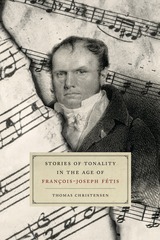 Stories of Tonality in the Age of François-Joseph Fétis
Thomas Christensen
University of Chicago Press, 2019 Stories of Tonality in the Age of François-Joseph Fétis explores the concept of musical tonality through the writings of the Belgian musicologist François-Joseph Fétis (1784–1867), who was singularly responsible for theorizing and popularizing the term in the nineteenth century. Thomas Christensen weaves a rich story in which tonality emerges as a theoretical construct born of anxiety and alterity for Europeans during this time as they learned more about “other” musics and alternative tonal systems. Tonality became a central vortex in which French musicians thought—and argued—about a variety of musical repertoires, be they contemporary European musics of the stage, concert hall, or church, folk songs from the provinces, microtonal scale systems of Arabic and Indian music, or the medieval and Renaissance music whose notational traces were just beginning to be deciphered by scholars. Fétis’s influential writings offer insight into how tonality ingrained itself within nineteenth-century music discourse, and why it has continued to resonate with uncanny prescience throughout the musical upheavals of the twentieth and twenty-first centuries.
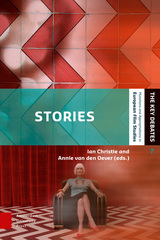 Stories: Screen Narrative in the Digital Era
Edited by Ian Christie and Annie van der Oever
Amsterdam University Press, 2018 Stories are perceived as central to modern life. Not only in narrative entertainment media, such as television, cinema, theater, but also in social media. Telling/having "a story" is widely deemed essential, in business as well as in social life. Does this mark an intensification of what has always been part of human cultures; or has the realm of "story" expanded to dominate twenty-first century discourse? Addressing stories is an obvious priority for the Key Debates series, and Volume 7, edited by Ian Christie and Annie van den Oever, identifies new phenomena in this field — complex narration, puzzle films, transmedia storytelling — as well as new approaches to understanding these, within narratology and bio-cultural studies. Chapters on such extended television series as Twin Peaks, Game of Thrones and Dickensian explore distinctively new forms of screen storytelling in the digital age. With contributions by Vincent Amiel, Jan Baetens, Dominique Chateau, Ian Christie, John Ellis, Miklós Kiss, Eric de Kuyper, Sandra Laugier, Luke McKernan, José Moure, Roger Odin, Annie van den Oever, Melanie Schiller, Steven Willemsen, Robert Ziegler.
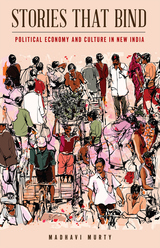 Stories That Bind: Political Economy and Culture in New India
Madhavi Murty
Rutgers University Press, 2022 Stories that Bind: Political Economy and Culture in New India examines the assertion of authoritarian nationalism and neoliberalism; both backed by the authority of the state and argues that contemporary India should be understood as the intersection of the two. More importantly, the book reveals, through its focus on India and its complex media landscape that this intersection has a narrative form, which author, Madhavi Murty labels spectacular realism. The book shows that the intersection of neoliberalism with authoritarian nationalism is strengthened by the circulation of stories about “emergence,” “renewal,” “development,” and “mobility” of the nation and its people. It studies stories told through film, journalism, and popular non-fiction along with the stories narrated by political and corporate leaders to argue that Hindu nationalism and neoliberalism are conjoined in popular culture and that consent for this political economic project is crucially won in the domain of popular culture.
Moving between mediascapes to create an archive of popular culture, Murty advances our understanding of political economy through material that is often seen as inconsequential, namely the popular cultural story. These stories stoke our desires (e.g. for wealth), scaffold our instincts (e.g. for a strong leadership) and shape our values.
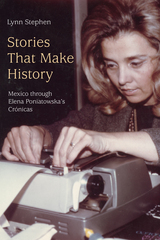 Stories That Make History: Mexico through Elena Poniatowska’s Crónicas
Lynn Stephen
Duke University Press, 2021 From covering the massacre of students at Tlatelolco in 1968 and the 1985 earthquake to the Zapatista rebellion in 1994 and the disappearance of forty-three students in 2014, Elena Poniatowska has been one of the most important chroniclers of Mexican social, cultural, and political life. In Stories That Make History, Lynn Stephen examines Poniatowska's writing, activism, and political participation, using them as a lens through which to understand critical moments in contemporary Mexican history. In her crónicas—narrative journalism written in a literary style featuring firsthand testimonies—Poniatowska told the stories of Mexico's most marginalized people. Throughout, Stephen shows how Poniatowska helped shape Mexican politics and forge a multigenerational political community committed to social justice. In so doing, she presents a biographical and intellectual history of one of Mexico's most cherished writers and a unique history of modern Mexico.
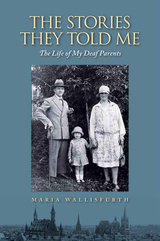 The Stories They Told Me: The Life of My Deaf Parents
Maria Wallisfurth
Gallaudet University Press, 2017 In this heartfelt memoir, Maria Wallisfurth recounts the lives of her deaf parents in Germany from the turn of the twentieth century through World War II. Her mother, Maria Giefer, was born in 1897 and her father, Wilhelm Sistermann, was born in 1896. The author captures the seasonal rhythms and family life of her mother’s youth in rural Germany, a time filled as much with hardship as it is with love. When she is old enough, she moves to the nearby city of Aachen to attend a school for deaf children, where she learns to lipread and speak. After her schooling is complete, she returns home to work on the family farm and experiences the privations and fear that accompany World War I. She later goes back to Aachen, where she joins a deaf club and falls in love with Wilhelm, a painter and photographer who was raised in the city. Amidst high unemployment, food shortages, and rapid inflation, the two are married in 1925 and two years later the author is born. Under the Nazi regime, Maria and Wilhelm are ordered to undergo forced sterilization. Although their deafness is not hereditary and they submit applications of protest, they are compelled to comply with the law.
Despite their dissimilar backgrounds and the political circumstances that roiled their lives, the author’s parents showed great love for each other and their only daughter. The Stories They Told Me is a richly detailed document of time and place and a rare account of deaf lives during this era.
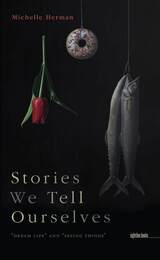 Stories We Tell Ourselves: "Dream Life" and "Seeing Things"
Michelle Herman
University of Iowa Press, 2013 The two thought-provoking, extended essays that make up Stories We Tell Ourselves draw from the author’s richly diverse experiences and history, taking the reader on a deeply pleasurable walk to several unexpectedly profound destinations. A steady accumulation of fascinating science, psychoanalytic theory, and cultural history—ranging as far and wide as neuro-ophthalmology, ancient dream interpretation, and the essential differences between Jung and Freud—is smoothly intermixed with vivid anecdotes, entertaining digressions, and a disarming willingness to risk everything in the course of a revealing personal narrative.
“Dream Life” plumbs the depth of dreams—conceptually, biologically, and as the nursery of our most meaningful metaphors—as it considers dreams and dreaming every whichway: from the haruspicy of the Roman Empire to contemporary sleep and dream science, from the way birds dream to the way babies do, from our longing to tell them to the reasons we wish other people wouldn’t.
“Seeing Things” recounts a journey of mother and daughter—a Holmes-and-Watson pair intrepidly working their way through the mysteries of a disorder known as Alice in Wonderland Syndrome—even as it restlessly detours into the world beyond the looking glass of the unconscious itself. In essays that constantly offer layers of surprises and ever-deeper insights, the author turns a powerful lens on the relationships that make up a family, on expertise and unsatisfying diagnoses, on science and art and the pleasures of contemplation and inquiry—and on our fears, regrets, hopes, and (of course) dreams.
 The Stories Whiteness Tells Itself: Racial Myths and Our American Narratives
David Mura
University of Minnesota Press, 2022 Uncovering the pernicious narratives white people create to justify white supremacy and sustain racist oppression
The police murders of two Black men, Philando Castile and George Floyd, frame this searing exploration of the historical and fictional narratives that white America tells itself to justify and maintain white supremacy. From the country’s founding through the summer of Black Lives Matter in 2020, David Mura unmasks how white stories about race attempt to erase the brutality of the past and underpin systemic racism in the present. Intertwining history, literature, ethics, and the deeply personal, Mura looks back to foundational narratives of white supremacy (Jefferson’s defense of slavery, Lincoln’s frequently minimized racism, and the establishment of Jim Crow) to show how white identity is based on shared belief in the pernicious myths, false histories, and racially segregated fictions that allow whites to deny their culpability in past atrocities and current inequities. White supremacy always insists white knowledge is superior to Black knowledge, Mura argues, and this belief dismisses the truths embodied in Black narratives. Mura turns to literature, comparing the white savior portrayal of the film Amistad to the novelization of its script by the Black novelist Alexs Pate, which focuses on its African protagonists; depictions of slavery in Faulkner and Morrison; and race’s absence in the fiction of Jonathan Franzen and its inescapable presence in works by ZZ Packer, tracing the construction of Whiteness to willfully distorted portraits of race in America. In James Baldwin’s essays, Mura finds a response to this racial distortion and a way for Blacks and other BIPOC people to heal from the wounds of racism. Taking readers beyond apology, contrition, or sadness, Mura attends to the persistent trauma racism has exacted and lays bare how deeply we need to change our racial narratives—what white people must do—to dissolve the myth of Whiteness and fully acknowledge the stories and experiences of Black Americans.
The Storm & Other Poems
Eugenio Montale
Oberlin College Press, 1978 Winner of the PEN Translation Prize, these translations by noted American poet Charles Wright bring one of the major collections of poetry in this century to English-speaking authors. Nobel laureate Eugenio Montale considered La Bufera e Altro (The Storm and Other Poems) his best book.
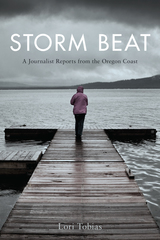 Storm Beat: A Journalist Reports from the Oregon Coast
Lori Tobias
Oregon State University Press, 2020 Journalist Lori Tobias arrived on the Oregon Coast in 2000. After freelancing from Newport for several years, she signed on to the Oregonian as a stringer covering the coast from Florence to Astoria; later she would be hired as a staff writer responsible for the entirety of Oregon’s coast—one person for more than three hundred miles. This meant long hours, being called out for storms in the middle of the night (and in dangerous conditions), driving hundreds of miles in a day if stories called for it.
The Oregon Coast is a rugged, beautiful region. Separated from the state’s population centers by the Coast Range, it is a land of small towns reliant primarily on fishing and tourism, known for its dramatic landscapes and dramatic storms. Many of the stories Tobias covered were tragedies: car crashes, falls, drownings, capsizings. And those are just the accidents; Tobias covered plenty of violent crimes as well. But her stories also include more lighthearted moments, including her own experiences learning to live on and cover the coast. Tobias’s story is as much her own as it is the coast’s; she takes the reader through familiar beats of life (regular trips back east as her parents age), the decline of journalism in the twenty-first century, and the unexpected (and not entirely glamorous) experiences of a working reporter—such as a bout of vertigo after rappelling from a helicopter onto a ship. Ultimately, Tobias tells a compelling story of a region that many visit but few truly know.
 Storm from Paradise: The Politics of Jewish Memory
Jonathan Boyarin
University of Minnesota Press, 1992 Storm from Paradise was first published in 1992. Minnesota Archive Editions uses digital technology to make long-unavailable books once again accessible, and are published unaltered from the original University of Minnesota Press editions. "Usefully complicating common sense understandings of history, catastrophe, loss, otherness, and possibility through reflections on contemporary Jewishness, Boyarin draws on Benjamins's famous image of the Angel of History blown into the future by a "storm from paradise" to constantly interrogate and recuperate the past, "without pretending for long that we can recoup its plentitude". The book's seven thoughtful essays are at times deliberately intangible but always worth reading. An important book for the rethinking of the relevance of Jewishness to anthropology and cultural studies." –Religious Studies Review "An essay in the richest sense of that term, inspired by and modeled on Walter Benjamin's essays. Based on varied, diverse, and abundantly cross-disciplinary readings, it moves and builds, questions and interrogates, and ultimately convinces us that the Jewish experience with being the 'other' and, conversely and recently, with 'othering' is indeed relevant to theorists of contemporary culture." –Marianne Hirsch Jonathan Boyarin is the author of Palestine and Jewish History, and co-editor, with Daniel Boyarin, of Jews and Other Differences and Powers of Diaspora.
 A Storm of Songs: India and the Idea of the Bhakti Movement
John Stratton Hawley
Harvard University Press, 2015 India celebrates itself as a nation of unity in diversity, but where does that sense of unity come from? One important source is a widely-accepted narrative called the “bhakti movement.” Bhakti is the religion of the heart, of song, of common participation, of inner peace, of anguished protest. The idea known as the bhakti movement asserts that between 600 and 1600 CE, poet-saints sang bhakti from India’s southernmost tip to its northern Himalayan heights, laying the religious bedrock upon which the modern state of India would be built.
Challenging this canonical narrative, John Stratton Hawley clarifies the historical and political contingencies that gave birth to the concept of the bhakti movement. Starting with the Mughals and their Kachvaha allies, North Indian groups looked to the Hindu South as a resource that would give religious and linguistic depth to their own collective history. Only in the early twentieth century did the idea of a bhakti “movement” crystallize—in the intellectual circle surrounding Rabindranath Tagore in Bengal. Interactions between Hindus and Muslims, between the sexes, between proud regional cultures, and between upper castes and Dalits are crucially embedded in the narrative, making it a powerful political resource.
A Storm of Songs ponders the destiny of the idea of the bhakti movement in a globalizing India. If bhakti is the beating heart of India, this is the story of how it was implanted there—and whether it can survive.
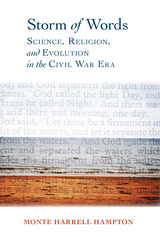 Storm of Words: Science, Religion, and Evolution in the Civil War Era
Monte Harrell Hampton
University of Alabama Press, 2014 A study of the ways that southern Presbyterians in the wake of the Civil War contended with a host of cultural and theological questions
Southern Presbyterian theologians enjoyed a prominent position in antebellum southern culture. Respected for both their erudition and elite constituency, these theologians identified the southern society as representing a divine, Biblically ordained order. Beginning in the 1840s, however, this facile identification became more difficult to maintain, colliding first with antislavery polemics, then with Confederate defeat and reconstruction, and later with women’s rights, philosophical empiricism, literary criticisms of the Bible, and that most salient symbol of modernity, natural science.
As Monte Harrell Hampton shows in Storm of Words, modern science seemed most explicitly to express the rationalistic spirit of the age and threaten the Protestant conviction that science was the faithful “handmaid” of theology. Southern Presbyterians disposed of some of these threats with ease. Contemporary geology, however, posed thornier problems. Ambivalence over how to respond to geology led to the establishment in 1859 of the Perkins Professorship of Natural Science in Connexion with Revealed Religion at the seminary in Columbia, South Carolina. Installing scientist-theologian James Woodrow in this position, southern Presbyterians expected him to defend their positions.
Within twenty-five years, however, their anointed expert held that evolution did not contradict scripture. Indeed, he declared that it was in fact God’s method of creating. The resulting debate was the first extended evolution controversy in American history. It drove a wedge between those tolerant of new exegetical and scientific developments and the majority who opposed such openness. Hampton argues that Woodrow believed he was shoring up the alliance between science and scripture—that a circumscribed form of evolution did no violence to scriptural infallibility. The traditionalists’ view, however, remained interwoven with their identity as defenders of the Lost Cause and guardians of southern culture.
The ensuing debate triggered Woodrow’s dismissal. It also capped a modernity crisis experienced by an influential group of southern intellectuals who were grappling with the nature of knowledge, both scientific and religious, and its relationship to culture—a culture attempting to define itself in the shadow of the Civil War and Reconstruction.
 Storm over the Multinationals: The Real Issues
Raymond Vernon
Harvard University Press, 1977 Multinational enterprises—what they are and the challenge they pose to national objectives—have never been so clearly delineated. Raymond Vernon cuts through polemic and propaganda to place in perspective the spread of large companies from their home bases to foreign countries. He draws upon the variety of recent studies and his own vast scholarly endeavors and firsthand experience to answer such questions as: Are multinational enterprises and nation-states incompatible in goals and outlook? Should their economic (and political) behavior differ in underdeveloped countries as compared to modernized states?
After reviewing the growing interrelationships of the world's economies, Vernon takes a close-up look at multinationals, commenting on their size, business activity, and patterns of management and control. He identifies the real problems these large enterprises generate, sorting them out from the ills that are associated with industrialization in general. He traces these problems in the developing world and in industrialized countries. In the process, he explores the ramifications of the multinational double identity—each enterprise must comport itself as a national of the country that sanctioned its creation, while at the same time it must respond to the link that ties it to units of the same company in other countries.
Finally, Vernon reviews proposals that have been made to alter the relationship between the enterprises and their host countries, and he suggests scenarios for the future. The issues run deep and the threat of conflict grows, he asserts, and if policymakers hope to deal constructively with problems associated with multinational enterprises, they will have to recognize some of the basic difficulties that have so far blocked progress. His book, by setting forth the issues clearly and without special pleading, makes significant progress in pointing the way to solutions.
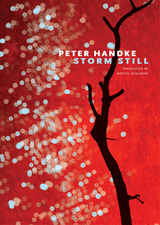 Storm Still
Peter Handke
Seagull Books, 2018 Peter Handke, a giant of Austrian literature, has produced decades of fiction, poetry, and drama informed by some of the most tumultuous events in modern history. But even as these events shaped his work, the presence of his mother—a woman whose life spanned the Weimar Republic, both world wars, and the postwar consumer economy—loomed even larger.
In Storm Still, Handke’s most recent work, he returns to the land of his birth, the Austrian province of Carinthia. There on the Jaunfeld, the plain at the center of Austria’s Slovenian settlement, the dead and the living of a family meet and talk. Composed as a series of monologues, Storm Still chronicles both the battle of the Slovene minority against Nazism and their love of the land. Presenting a panorama that extends back to the author’s bitter roots in the region, Storm Still blends penetrating prose and poetic drama to explore Handke’s personal history, taking up themes from his earlier books and revisiting some of their characters. In this book, the times of conflict and peace, war and prewar, and even the seasons themselves shift and overlap. And the fate of an orchard comes to stand for the fate of a people.
Storm Swimmer
Ernest Hilbert
University of North Texas Press, 2023
Storm Warnings: Science Fiction Confronts the Future
George E Slusser
Southern Illinois University Press, 1987
These 17 original essays, written for the sixth Eaton Conference on Fantasy and Science Fiction, explore the uses, origins, and forms of future fiction. The contributors are George E. Slusser, Paul Alkon, Marie-Hélène Huet, Howard V. Hendrix, Bradford Lyau, Gregory Benford, José Manuel Mota, Frederik Pohl, George Hay, Colin Greenland, John Huntington, Elizabeth Maslen, W. M. S. and Claire Russell, T. A. Shippey, Kenneth V. Bailey, Gary Kern, and Frank McConnell.
The essays address the question “Do we call up images of future societies in order to prepare for them, or to forestall their ever coming into existence?”
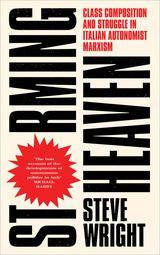 Storming Heaven: Class Composition and Struggle in Italian Autonomist Marxism
Steve Wright
Pluto Press, 2017 The only comprehensive survey of Italian autonomist theory, Storming Heaven explores its origins in the anti-Stalinist left of the 1950s and traces it through its glory days twenty years later. Emphasizing the dynamic nature of class composition and struggle as the distinguishing feature of autonomist thought, Steve Wright documents how class politics developed alongside emerging social movements. A critical and historical exploration of autonomist Marxism in postwar Italy, Storming Heaven moves beyond traditional analytical frameworks and instead assesses the strengths and limitations of the theory and how it foreshadowed many of contemporary European social struggles, such as the refusal of work, self-organization, openness to non-militarized political violence, mass illegality, and the extension of revolutionary agency. This updated edition also offers a substantial new afterword looking at the recent debates around operaismo and autonomia in Italy.
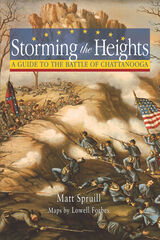 Storming the Heights: A Guide to the Battle of Chattanooga
Matt Spruill
University of Tennessee Press, 2003
“An outstanding guide…meets the needs of the serious students as well as the casual visitor.”
--Edwin Bearss, former chief historian of the National Park Service
In this guide, Matt Spruill recounts the story of the November 1863 battle of Chattanooga using official reports and observations by commanding officers in their own words. The book is organized in the format still used by the military on staff rides, allowing the reader to understand how the battle was fought and why leaders made the decisions they did.
Unlike other books on the battle of Chattanooga, this work guides the reader through the battlefield, allowing both visitor and armchair traveler to see the battle through the eyes of its participants. Numerous tour “stops” take the reader through the battles for Chattanooga: Wauhatchie, Lookout mountain, Orchard Knob, Missionary Ridge, and Ringgold Gap. With easy-to-follow instructions, extensive tactical maps, eyewitness accounts, and editorial analyses, the reader is transported to the center of the action. Storming the heights offers new insights and covers key ground rarely seen by visitors to Chattanooga.
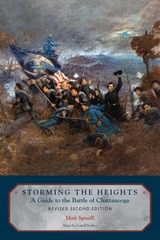 Storming the Heights: A Guide to the Battle of Chattanooga
Matt Spruill
University of Tennessee Press, 2003 Following the defeat of Maj. Gen. William S. Rosecrans’s Army of the Cumberland at the Battle of Chickamauga, Gen. Braxton Bragg and the Army of Tennessee followed the retreating Federal army to Chattanooga and partially surrounded Rosecrans and his men by occupying Lookout Mountain, Chattanooga Valley, and Missionary Ridge. The Battle of Chattanooga would prove the final defeat of the Confederacy in East Tennessee and open the door to Sherman’s Atlanta Campaign.
In this newly revised second edition of his classic guidebook, Matt Spruill revisits his standard-setting tours of the Chattanooga National Military Park, providing updates and new directions after twenty years of park improvements. He recounts the story of the November 1863 battle of Chattanooga using official reports and observations by commanding officers in their own words. The book is organized in a format still used by the military on staff rides, allowing the reader to understand how the battle was fought and why leaders made the decisions they did.
Unlike other books on the battle of Chattanooga, this work guides the reader through the battlefield, allowing both visitor and armchair traveler alike to see the battle through the eyes of its participants. Numerous tour “stops” take the reader through the battles for Chattanooga, Wauhatchie, Lookout Mountain, Orchard Knob, Missionary Ridge, and Ringgold Gap. With easy-to-follow instructions, extensive and updated tactical maps, eyewitness accounts, and editorial analyses, the reader is transported to the center of the action. With this second edition, Storming the Heights will continue to be the go-to guide for Civil War enthusiasts interested in touring this sacred ground.
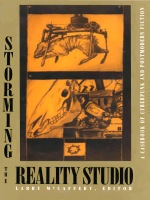 Storming the Reality Studio: A Casebook of Cyberpunk & Postmodern Science Fiction
Larry McCaffery, ed.
Duke University Press, 1992 The term “cyberpunk” entered the literary landscape in 1984 to describe William Gibson’s pathbreaking novel Neuromancer. Cyberpunks are now among the shock troops of postmodernism, Larry McCaffery argues in Storming the Reality Studio, marshalling the resources of a fragmentary culture to create a startling new form. Artificial intelligence, genetic engineering, multinational machinations, frenetic bursts of prose, collisions of style, celebrations of texture: although emerging largely from science fiction, these features of cyberpunk writing are, as this volume makes clear, integrally related to the aims and innovations of the literary avant-garde. By bringing together original fiction by well-known contemporary writers (William Burroughs, Thomas Pynchon, Don DeLillo, Kathy Acker, J. G. Ballard, Samuel R. Delany), critical commentary by some of the major theorists of postmodern art and culture (Jacques Derrida, Fredric Jameson, Timothy Leary, Jean-François Lyotard), and work by major practitioners of cyberpunk (William Gibson, Rudy Rucker, John Shirley, Pat Cadigan, Bruce Sterling), Storming the Reality Studio reveals a fascinating ongoing dialog in contemporary culture. What emerges most strikingly from the colloquy is a shared preoccupation with the force of technology in shaping modern life. It is precisely this concern, according to McCaffery, that has put science fiction, typically the province of technological art, at the forefront of creative explorations of our unique age.
A rich opporunity for reading across genres, this anthology offers a new perspective on the evolution of postmodern culture and ultimately shows how deeply technological developments have influenced our vision and our art. Selected Fiction contributors: Kathy Acker, J. G. Ballard, William S. Burroughs, Pat Cadigan, Samuel R. Delany, Don DeLillo, William Gibson, Harold Jaffe, Richard Kadrey, Marc Laidlaw, Mark Leyner, Joseph McElroy, Misha, Ted Mooney, Thomas Pynchon, Rudy Rucker, Lucius Shepard, Lewis Shiner, John Shirley, Bruce Sterling, William Vollman Selected Non-Fiction contributors: Jean Baudrillard, Jacques Derrida, Joan Gordon, Veronica Hollinger, Fredric Jameson, Arthur Kroker and David Cook, Timothy Leary, Jean-François Lyotard, Larry McCaffery, Brian McHale, Dave Porush, Bruce Sterling, Darko Suvin, Takayuki Tatsumi
The Storms of Denali
Nicholas O'Connell
University of Alaska Press, 2012 Reaching 20,320 feet into and above the clouds, the peak of Denali is the highest and coldest summit in North America. In this novel of adventure, adversity, and ambition by renowned mountaineer and writer Nicholas O’Connell, four men set out to conquer it. Among the sharply drawn team members is narrator John Walker, a family man trying to choose between domestic stability and mountaineering’s uncertain glory. In the course of their ascent the group battles avalanches, fierce winds, and mind-numbing cold before their bond begins to splinter, leading inexorably to tragedy. Throughout the book, the author’s first-hand experience lends vivid reality to the formidable challenges of the mountain and to the bonds formed and broken in the pursuit of its summit. Beyond the physical tolls, O’Connell presents in stark relief the internal debate about the price of success—all the more urgent at the earth’s extremes.
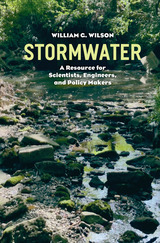 Stormwater: A Resource for Scientists, Engineers, and Policy Makers
William G. Wilson
University of Chicago Press, 2016 As cities grow and climates change, precipitation increases, and with every great storm—from record-breaking Boston blizzards to floods in Houston—come buckets of stormwater and a deluge of problems. In Stormwater, William G. Wilson brings us the first expansive guide to stormwater science and management in urban environments, where rising runoff threatens both human and environmental health.
As Wilson shows, rivers of runoff flowing from manmade surfaces—such as roads, sidewalks, and industrial sites—carry a glut of sediments and pollutants. Unlike soil, pavement does not filter or biodegrade these contaminants. Oil, pesticides, road salts, metals, automobile chemicals, and bacteria all pour into stormwater systems. Often this runoff discharges directly into waterways, uncontrolled and untreated, damaging valuable ecosystems. Detailing the harm that can be caused by this urban runoff, Wilson also outlines methods of control, from restored watersheds to green roofs and rain gardens, and, in so doing, gives hope in the face of an omnipresent threat. Illustrated throughout, Stormwater will be an essential resource for urban planners and scientists, policy makers, citizen activists, and environmental educators in the stormy decades to come.
Stormy Isles: An Azorean Tale
Vitorino Nemésio, Edited and translated by Francisco Cota Fagundes
Tagus Press, 2019 Stormy Isles, originally published in Portuguese in 1944 and set in the Azores between 1917 and 1919, focuses on the vivacious and sharp Margarida, who, at twenty years of age, is a model of feminist aspirations and the paragon of her generation. A member of the elite, she foregoes some of the entitlements of her class and struggles with the morals of the bourgeois society in which her life unfolds. Narrated in realist and poetic language as a series of interconnected tales within a larger story, this completely revised translation of Stormy Isles provides a rich, vivid portrait of the Azores in the early twentieth century.
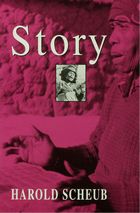 Story
Harold Scheub
University of Wisconsin Press, 1998 What is the essence of story? How does the storyteller convey meaning? Leading scholar Harold Scheub tackles these questions and more, demonstrating that the power of story lies in emotion.
While others have focused on the importance of structure in the art of story, Scheub emphasizes emotion. He shows how an expert storyteller uses structural elements—image, rhythm, and narrative—to shape a story's fundamental emotional content. The storyteller uses traditional images, repetition, and linear narrative to move the audience past the story’s surface of morals and ideas, and make connections to their past, present, and future. To guide the audience on this emotional journey is the storyteller’s art.
The traditional stories from South African, Xhosa, and San cultures included in the book lend persuasive support to Scheub’s. These stories speak for themselves, demonstrating that a skilled performer can stir emotions despite the obstacles of space, time, and culture.
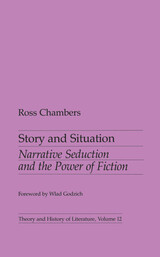 Story and Situation: Narrative Seduction and the Power of Fiction
Ross Chambers
University of Minnesota Press, 1984 Ross Chambers shifs the emphasis to precisely the play of authority and mastery by focusing on the narrative situation or the “point” of telling a story in given context. He studies the relation between teller and listener in a set of French, English, and American short stories from the nineteenth and early twentieth centuries and detects in that relationship the key to the power of fiction. In each of these stories, the author identifies the narrative situation by recourse to the metaphor of seduction, a phenomenon Chambers finds characteristic of literary production in the modern period. “Story and Situation is a powerful work of criticism, the best work in short narrative I know, and will redirect critics’ attention to a form which has always engaged readers but has recently been neglected by literary theorists. . . . It is clear, assured, and intelligently paced.”-Jonathan Culler, Cornell University
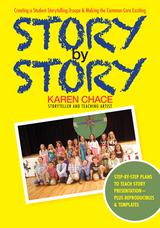 Story By Story: Creating a School Storytelling Troupe & Making the Common Core Exciting
Karen Chace
Parkhurst Brothers, Inc., 2014
Karen Chace’s book, Story by Story, Building a Storytelling Troupe is a must have for anyone even slightly interested in starting a storytelling group with students. I know I am guilty of sometimes skipping over sections, but every word that Karen writes is important and useful distilled (and therefore potent) information. Ms. Chace not only tells you what to do to run a successful troupe, but also WHY you need to do it. This is, to me, very important. Sometimes one is tempted to skip things, but this book explains how important the steps are. Everything from how many hours Karen thought it would take, to ACTUAL hours, where the funding comes from, how and why to lay foundations and expectations (including ‘no teasing policies’ and group dynamics), right the way through presentation skills to advertising the event and getting bums on seats (emphasis important)!
Over the years Karen has and continues to come up with new and inventive ways of teaching the skills of storytelling, and a great many of these exercises and activities are included in the book. When it comes to research and materials as well as technique, Karen adds new meaning to "thorough". There are links to websites for stories, for grants, for microphone techniques, and how storytelling connects to the school curriculum and more. And if you prefer to read books, there is an extensive bibliography, too.
Basically, I believe if you want to succeed in building a storytelling troupe or group, all you need is Karen Chace’s book, Story by Story, Building a Storytelling Troupe and to do everything Karen suggests. I am sure it would be very hard to fail if you follow her words of wisdom between the covers of her goldmine of a book.
Simon Brooks, storyteller, and educator
Story Hour
Sara Henderson Hay
University of Arkansas Press, 1998 In Story Hour, Hay takes many well-known—"Jack and the Beanstalk," "Beauty and the Beast," "Little Red Riding Hood"—and turns them on end. Whether quickening our memory to the darkness only hinted at before or highlighting the great joke we never caught, her poems always invite us back into what Miller Williams calls "these old houses we thought we know so well."
The Story I Tell Myself: A Venture in Existentialist Autobiography
Hazel E. Barnes
University of Chicago Press, 1997 Best known as the writer who introduced French existentialism to English-speaking readers through her translation of Sartre's Being and Nothingness, Hazel E. Barnes has written an autobiography that is both the success story of a professional woman as well as a profoundly moving reflection on growing older. Transcending the personal details of her life, Barnes' memoir stands as an important contribution to the intellectual history of our century.
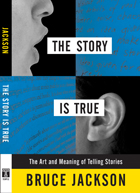 The Story Is True: The Art and Meaning of Telling Stories
Bruce Jackson
Temple University Press, 2008
Making and experiencing stories, remembering and retelling them is something we all do. We tell stories over meals, at the water cooler, and to both friends and strangers. But how do stories work? What is it about telling and listening to stories that unites us? And, more importantly, how do we change them-and how do they change us?
In The Story Is True, author, filmmaker, and photographer Bruce Jackson explores the ways we use the stories that become a central part of our public and private lives. He examines, as no one before has, how stories narrate and bring meaning to our lives, by describing and explaining how stories are made and used. The perspectives shared in this engaging book come from the tellers, writers, filmmakers, listeners, and watchers who create and consume stories.
Jackson writes about his family and friends, acquaintances and experiences, focusing on more than a dozen personal stories. From oral histories, such as conversations the author had with poet Steven Spender, to public stories, such as what happened when Bob Dylan "went electric" at the 1965 Newport Folk Festival. Jackson also investigates how "words can kill" showing how diction can be an administrator of death, as in Nazi extermination camps. And finally, he considers the way lies come to resemble truth, showing how the stories we tell, whether true or not, resemble truth to the teller.
Ultimately, The Story Is True is about the place of stories-fiction or real-and the impact they have on the lives of each one of us.
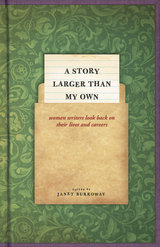 A Story Larger than My Own: Women Writers Look Back on Their Lives and Careers
Edited by Janet Burroway
University of Chicago Press, 2014 In 1955, Maxine Kumin submitted a poem to the Saturday Evening Post. “Lines on a Half-Painted House” made it into the magazine—but not before Kumin was asked to produce, via her husband’s employer, verification that the poem was her original work.
Kumin, who went on to win the Pulitzer Prize for poetry, was part of a groundbreaking generation of women writers who came of age during the midcentury feminist movement. By challenging the status quo and ultimately finding success for themselves, they paved the way for future generations of writers. In A Story Larger than My Own, Janet Burroway brings together Kumin, Julia Alvarez, Jane Smiley, Erica Jong, and fifteen other accomplished women of this generation to reflect on their writing lives.
The essays and poems featured in this collection illustrate that even writers who achieve critical and commercial success experience a familiar pattern of highs and lows over the course of their careers. Along with success comes the pressure to sustain it, as well as a constant search for subject matter, all too frequent crises of confidence, the challenges of a changing publishing scene, and the difficulty of combining writing with the ordinary stuff of life—family, marriage, jobs. The contributors, all now over the age of sixty, also confront the effects of aging, with its paradoxical duality of new limitations and newfound freedom.
Taken together, these stories offer advice from experience to writers at all stages of their careers and serve as a collective memoir of a truly remarkable generation of women.
The Story of 0: Prostitutes and Other Good-for-Nothings in the Renaissance
Michele Sharon Jaffe
Harvard University Press, 1999 This work unfolds the idea of “nothing” out of a Titian painting of Danaë and the shower of gold. Michele Jaffe’s philological and pictorial argument links, across several languages, such seemingly disparate concepts as money, coins, mothers (through the mint’s matrix), subjects, courtiers, prostitutes (through etymologies that join minting, standing-under, standing-for), ciphers, codes, and the codex form.
This ambitious book is a cultural history of the “cipher” zero as code and as nothing, as the absence of value and the place-holder constructing value. It traces the wide-ranging implications of “nothing”—not only in mathematics but also in literature. Along the way, it makes important points about the orthography and editing of early modern texts, and about the material affinities of these texts with painting and minting.
The Story of a Bad Boy
Thomas Bailey Aldrich
University Press of New England, 1996 In 1869 Thomas Bailey Aldrich introduced to American literature the original “bad boy”--that all-American boy who plays harmless pranks, devises exciting adventures, has an occasional bout of love-sickness, is bored on Sundays, and is well-liked by almost everyone. Later followed by Mark Twain’s The Adventures of Tom Sawyer and The Adventures of Huckleberry Finn, The Story of a Bad Boy--once called the first truly American novel--is Aldrich’s partially autobiographical tale of growing up in America. Set in Rivermouth (based on Aldrich’s childhood home in Portsmouth, New Hampshire), it follows the exploits of young Tom Bailey through snowball wars, schoolyard fights, Fourth of July parades, adventures at sea, and childhood sweathearts. Now printed in more than fifty editions and read and beloved by Americans for over a century, Aldrich’s classic is ready to be rediscovered by a new generation of readers.
Story Of A Clam: Visionary Fiction
Sir John Templeton
Templeton Press, 2001 Story of a Clam is a special, magical tale of an egotistical clam who thinks he and his community are the center of the universe. It offers us the artistry of the written word, creating an adventure in evolving consciousness. In an exciting series of events, the clam becomes aware that "there is more to life than you presently know and experience."
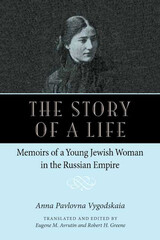 The Story of a Life: Memoirs of a Young Jewish Woman in the Russian Empire
Anna Pavolovna Vygodskaia
Northern Illinois University Press, 2012
Anna Pavlovna Vygodskaia’s autobiography, originally published in 1938, is a rare and fascinating historical account of Jewish childhood and young adult life in Tsarist Russia. At a time when the vast majority of Jews resided in small market towns in the Pale of Settlement, Vygodskaia liberated herself from that world and embraced the day-to-day rhythms, educational activities, and new intellectual opportunities in the imperial capital of St. Petersburg. Her story offers a unique glimpse of Jewish daily life that is rarely documented in public sources—of neighborly interactions, children’s games and household rituals, love affairs and emotional outbursts, clothing customs, and leisure time.
Most first-person narratives of this kind reconstruct an isolated and self-contained Jewish world, but The Story of a Life uniquely describes the unprecedented social opportunities, as well as the many political and personal challenges, that young Jewish women and men experienced in the Russia of the 1870s and 1880s. In addition to their artful translation, Eugene M. Avrutin and Robert H. Greene thoroughly explicate this historical context in their introduction.
 Story of a Secret State: My Report to the World
Jan Karski. Foreword by Madeleine Albright
Georgetown University Press, 2013 Jan Karski’s Story of a Secret State stands as one of the most poignant and inspiring memoirs of World War II and the Holocaust. With elements of a spy thriller, documenting his experiences in the Polish Underground, and as one of the first accounts of the systematic slaughter of the Jews by the German Nazis, this volume is a remarkable testimony of one man’s courage and a nation’s struggle for resistance against overwhelming oppression. Karski was a brilliant young diplomat when war broke out in 1939 with Hitler’s invasion of Poland. Taken prisoner by the Soviet Red Army, which had simultaneously invaded from the East, Karski narrowly escaped the subsequent Katyn Forest Massacre. He became a member of the Polish Underground, the most significant resistance movement in occupied Europe, acting as a liaison and courier between the Underground and the Polish government-in-exile. He was twice smuggled into the Warsaw Ghetto, and entered the Nazi’s Izbica transit camp disguised as a guard, witnessing first-hand the horrors of the Holocaust. Karski’s courage and testimony, conveyed in a breathtaking manner in Story of a Secret State, offer the narrative of one of the world’s greatest eyewitnesses and an inspiration for all of humanity, emboldening each of us to rise to the challenge of standing up against evil and for human rights. This definitive edition—which includes a foreword by Madeleine Albright, a biographical essay by Yale historian Timothy Snyder, an afterword by Zbigniew Brzezinski, previously unpublished photos, notes, further reading, and a glossary—is an apt legacy for this hero of conscience during the most fraught and fragile moment in modern history.
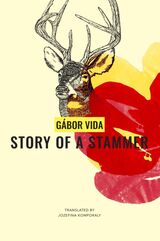 Story of a Stammer
Gábor Vida
Seagull Books, 2022 A novel of growing up a Hungarian in Romania under Communism.
In the novel Story of a Stammer, Gábor Vida asks a fundamental question: Where does stammering come from? In the process of answering this question, he discovers that an entire historical period and an entire world have been stammering, too. Through Vida’s eyes, we see that stammering comprises all the lies accumulated over time and over generations because nobody had ever articulated what they felt or thought, nor done what they really wanted. Nobody, Vida shows, had ever told the truth.
Describing life in the 1970s and ’80s under Romanian Communist dictator Nicolae Ceauçescu’s authoritarian regime, Vida writes with disarming honesty, breaking taboos and chronicling the ways in which tyranny and exploitation seep into family relationships. The novel charts the first two decades of a young Hungarian man’s life in Romania, telling a story of coming to terms with a stammer, loneliness, and an unstimulating environment where religion, alcoholism, and suicide are the most common escape strategies. A Bildungsroman, a novel about Transylvania, a chronicle of minority life, a sociological analysis of cultural identity, and ultimately a deeply personal account of a historical era, Story of a Stammer is a major contribution to contemporary Hungarian literature—an unfailingly serious yet humorously delightful witness to a turbulent period in recent history.
The Story of Act 31: How Native History Came to Wisconsin Classrooms
J P Leary
Wisconsin Historical Society Press, 2018 From forward-thinking resolution to violent controversy and beyond.
Since its passage in 1989, a state law known as Act 31 requires that all students in Wisconsin learn about the history, culture, and tribal sovereignty of Wisconsin’s federally recognized tribes.
The Story of Act 31 tells the story of the law’s inception—tracing its origins to a court decision in 1983 that affirmed American Indian hunting and fishing treaty rights in Wisconsin, and to the violent public outcry that followed the court’s decision. Author J P Leary paints a picture of controversy stemming from past policy decisions that denied generations of Wisconsin students the opportunity to learn about tribal history.
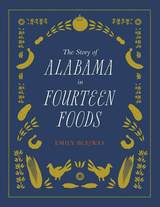 The Story of Alabama in Fourteen Foods
Emily Blejwas
University of Alabama Press, 2019 Alabama’s history and culture revealed through fourteen iconic foods, dishes, and beverages
The Story of Alabama in Fourteen Foods explores well-known Alabama food traditions to reveal salient histories of the state in a new way. In this book that is part history, part travelogue, and part cookbook, Emily Blejwas pays homage to fourteen emblematic foods, dishes, and beverages, one per chapter, as a lens for exploring the diverse cultures and traditions of the state.
Throughout Alabama’s history, food traditions have been fundamental to its customs, cultures, regions, social and political movements, and events. Each featured food is deeply rooted in Alabama identity and has a story with both local and national resonance. Blejwas focuses on lesser-known food stories from around the state, illuminating the lives of a diverse populace: Poarch Creeks, Creoles of color, wild turkey hunters, civil rights activists, Alabama club women, frontier squatters, Mardi Gras revelers, sharecroppers, and Vietnamese American shrimpers, among others. A number of Alabama figures noted for their special contributions to the state’s foodways, such as George Washington Carver and Georgia Gilmore, are profiled as well. Alabama’s rich food history also unfolds through accounts of community events and a food-based economy. Highlights include Sumter County barbecue clubs, Mobile’s banana docks, Appalachian Decoration Days, cane syrup making, peanut boils, and eggnog parties.
Drawing on historical research and interviews with home cooks, chefs, and community members cooking at local gatherings and for holidays, Blejwas details the myths, legends, and truths underlying Alabama’s beloved foodways. With nearly fifty color illustrations and fifteen recipes, The Story of Alabama in Fourteen Foods will allow all Alabamians to more fully understand their shared cultural heritage.
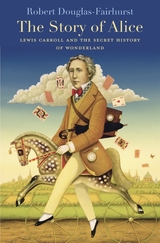 The Story of Alice: Lewis Carroll and the Secret History of Wonderland
Robert Douglas-Fairhurst
Harvard University Press, 2015 Following his acclaimed life of Dickens, Robert Douglas-Fairhurst illuminates the tangled history of two lives and two books. Drawing on numerous unpublished sources, he examines in detail the peculiar friendship between the Oxford mathematician Charles Dodgson (Lewis Carroll) and Alice Liddell, the child for whom he invented the Alice stories, and analyzes how this relationship stirred Carroll’s imagination and influenced the creation of Wonderland. It also explains why Alice in Wonderland (1865) and its sequel, Through the Looking-Glass (1871), took on an unstoppable cultural momentum in the Victorian era and why, a century and a half later, they continue to enthrall and delight readers of all ages.
The Story of Alice reveals Carroll as both an innovator and a stodgy traditionalist, entrenched in habits and routines. He had a keen double interest in keeping things moving and keeping them just as they are. (In Looking-Glass Land, Alice must run faster and faster just to stay in one place.) Tracing the development of the Alice books from their inception in 1862 to Liddell’s death in 1934, Douglas-Fairhurst also provides a keyhole through which to observe a larger, shifting cultural landscape: the birth of photography, changing definitions of childhood, murky questions about sex and sexuality, and the relationship between Carroll’s books and other works of Victorian literature.
In the stormy transition from the Victorian to the modern era, Douglas-Fairhurst shows, Wonderland became a sheltered world apart, where the line between the actual and the possible was continually blurred.
 The Story of All Things: Writing the Self in English Renaissance Narrative Poetry
Marshall Grossman
Duke University Press, 1998 In The Story of All Things Marshall Grossman analyzes the influence of major cultural developments, as well as significant events in the lives of Renaissance poets, to show how specific narratives characterize distinctive conceptions of the self in relation to historical action. To explore these conceptions of the self, Grossman focuses on the narrative poetry in the English Renaissance of the sixteenth and seventeenth centuries.
Relating subjectivity to the nature of language, Grossman uses the theories of Lacan to analyze the concept of the self as it encounters a transforming environment. He shows how ideological tensions arose from the reorganization and "modernization" of social life in revolutionary England and how the major poets of the time represented the division of the self in writings that are suspended between lyric and narrative genres. Beginning with the portrayals of the self inherited from Augustine, Dante, and Petrarch, he describes the influence of historic developments such as innovations in agricultural technology, civil war and regicide, and the emergence of republican state institutions on the changing representation of characters in the works of Spenser, Donne, Marvell, and Milton. Furthering this psychoanalytic critique of literary history, Grossman probes the linguistic effects of social and personal factors such as Augustine’s strained relationship with his mother and the marital disharmony of Milton and Mary Powell. With its focus on these and other "literary historical events," The Story of All Things not only proposes a new structural theory of narrative but constitutes a significant challenge to New Historicist conceptions of the self.
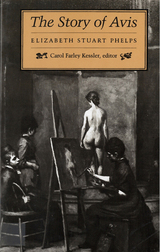 The Story of Avis
Kessler, Carol Farley
Rutgers University Press, 1985 Avis is a nineteenth-century painter who strives to keep herself free of marriage and entanglements. As a child, Avis decides that given a woman's options of marriage or being a "lady," "I think I'd rather keep dogs." She is caught all the same, by a "modern man" and through her life, Elizabeth Stuart Phelps describes the struggle of a woman to be wife, mother, and artist. Although Avis declares and her fiance agrees that she must not "resign my profession as an artist," the reality greets her with their first house: "It was not quite clear where the studio was to be, unless in the attic." But the house is near the college, where her husband teaches, and that "in the view of the New England winters, and the delicate health of the young professor, was decisive." She returns from an hour in her studio to clogged drains and unexpected company, descending "from the sphinx to the drainpipe in one fell swoop." Truly, she does hate housekeeping, and while she loves her baby, "sometimes, sitting burdened with the child upon her arms, she looked out and off upon the summer sky with a strangling desolation like that of a forgotten diver, who sees the clouds flit, from the bottom of the sea." And so it goes. How modern is the "modern man" and how much do women's roles ever change? This book, written more than one hundred years ago, will still seem very real to many women today. -- From 500 Great Books by Women; review by Erica Bauermeister
The Story of Babar
Jean de Brunhoff was a French artist and illustrator who wrote seven books in the Babar the Elephant series. His work had a major influence on the development of the picture book.
Bodleian Library Publishing, 2016
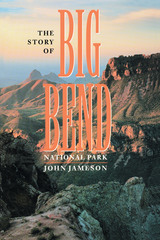 The Story of Big Bend National Park
By John Jameson
University of Texas Press, 1996 A breathtaking country of rugged mountain peaks, uninhabited desert, and spectacular river canyons, Big Bend is one of the United States' most remote national parks and among Texas' most popular tourist attractions. Located in the great bend of the Rio Grande that separates Texas and Mexico, the park comprises some 800,000 acres, an area larger than the state of Rhode Island, and draws over 300,000 visitors each year. The Story of Big Bend National Park offers a comprehensive, highly readable history of the park from before its founding in 1944 up to the present. John Jameson opens with a fascinating look at the mighty efforts involved in persuading Washington officials and local landowners that such a park was needed. He details how money was raised and land acquired, as well as how the park was publicized and developed for visitors. Moving into the present, he discusses such issues as natural resource management, predator protection in the park, and challenges to land, water, and air. Along the way, he paints colorful portraits of many individuals, from area residents to park rangers to Lady Bird Johnson, whose 1966 float trip down the Rio Grande brought the park to national attention. This history will be required reading for all visitors and prospective visitors to Big Bend National Park. For everyone concerned about our national parks, it makes a persuasive case for continued funding and wise stewardship of the parks as they face the twin pressures of skyrocketing attendance and declining budgets.
 The Story of Bioethics: From Seminal Works to Contemporary Explorations
Jennifer K. Walter, MD and Eran P. Klein, MD, Editors
Georgetown University Press, 2003 This literally "refreshing" collection is based on the notion that the future of bioethics is inseparable from its past. Seminal works provide a unique and relatively unexplored vehicle for investigating not only where bioethics began, but where it may be going as well. In this volume, a number of the pioneers in bioethics—Tom Beauchamp, Lisa Sowle Cahill, James Childress, Charles E. Curran, Patricia King, H. Tristram Engelhardt, William F. May, Edmund D. Pellegrino, Warren Reich, Robert Veatch and LeRoy Walters—reflect on their early work and how they fit into the past and future of bioethics. Coming from many disciplines, generations, and perspectives, these trailblazing authors provide a broad overview of the history and current state of the field. Invaluable to anyone with a serious interest in the development and future of bioethics, at a time when new paths into medical questions are made almost daily, The Story of Bioethics is a Baedeker beyond compare.
 The Story of Blindness
Gabriel Farrell
Harvard University Press Gabriel Farrell tells the story of blindness historically and from a social point of view. He describes the achievements of sightless persons, and he emphasizes the responsibility of society toward the blind. Blindness may befall anyone, through accident at any age or through the normal degeneration of sight in old age. Farrell stresses the economic provision that must be made for the blind and he tells how the blind have been helped to overcome their deficiencies in various ways.
The author offers a comprehensive record of the work for the blind, including the deaf-blind, through the centuries, and in many countries. He approaches his subject both analytically and historically. Many interesting points are raised for their connection with the subject—such as the fact that the typewriter was invented as the result of searching for a writing machine for the blind. Of course the full story of braille is covered, as are many other educational matters that have been prepared and developed for use by the blind.
The Story of Coal and Iron in Alabama
Ethel Armes
University of Alabama Press, 2011 “The principal authority for the general treatment of the history of coal, and of iron and steel, in
Alabama is the work of Miss Ethel Armes. The Story of Coal and Iron in Alabama is a comprehensive
and scholarly work portraying in attractive style the growth of the mineral industries in its
relation to the development of the state and of the South, in preparation of which the author spent
more than five years.”
—Thomas McAdory Owen, History of Alabama and Dictionary of Alabama Biography
A Story of Conquest and Adventure: The Large Faramarzname
Translated and with an Introduction by Marjolijn van Zutphen
Leiden University Press, 2017 A Story of Conquest and Adventure: The Large Farāmarznāme presents a poem from the Persian epic cycle dated to the late eleventh century in an English prose translation for the first time. The story tells how Farāmarz, a son of the famous Shāhnāme hero Rostam, conquers several provinces of India, before setting off on an extensive voyage over sea and land, leading his troops through a number of hazardous situations in various fictional countries. Finding love and battling men, demons, and various ferocious animals, the epic hero comes to life in this riveting translation.
The Story of Fay House
Christina Hopkinson Baker
Harvard University Press Old New England is between the covers of this book; for Christina Hopkinson Baker has here conjured up a complete panorama of the interests and occupations of those who lived during 133 years in Fay House, the centre of Radcliffe College, and upon the land for 295 years. Her story compasses the widest extremes: from the time when Guy Bambrige, the original owner, as he sat in his little wooden house heard with horror the “terrible roarings” of “either Devils or Lyons” in the forest just outside the town palisade, down to the days when the stately brick mansion, designed by Bulfinch, was the home of famous scholars and celebrated ladies. It is a book to delight everyone interested in our forefathers’ days and ways; and it will, of course, have a special appeal for residents of Cambridge and Boston and for all graduates of Radcliffe.
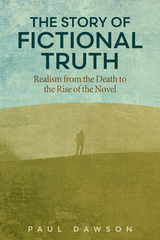 The Story of Fictional Truth: Realism from the Death to the Rise of the Novel
Paul Dawson
Ohio State University Press, 2023 In The Story of Fictional Truth, Paul Dawson looks anew at the historical relationship between the genre of the novel and the concept of fictionality, arguing that existing scholarship on the emergence of realist fiction has been shaped by the trope of the death of the novel. The unexplored logic of this premise is that the novel was born anticipating its own demise, with both its requiem and its reflexive origins legible in the ontological challenge of postmodern metafiction. To test this logic, Dawson traces shifting assumptions about what constitutes the illusion of fictional truth from early novels such as The History of Miss Betsy Thoughtless (1751) to contemporary autofiction such as Megan Boyle’s Liveblog (2018). In doing so, he contests and revises long-held views about the origins and functions of key formal features of the realist novel by investigating when and how they came to be seen as signposts of fictionality. Through this history, The Story of Fictional Truth opens up new ways to understand the novel’s afterlife in a post-truth digital age characterized by a collapse of referentiality.
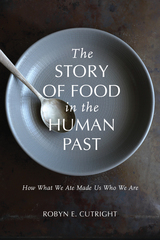 The Story of Food in the Human Past: How What We Ate Made Us Who We Are
Robyn E. Cutright
University of Alabama Press, 2021 Explore how food shaped humanity in this compelling archaeological journey.
The Story of Food in the Human Past: How What We Ate Made Us Who We Are uses case studies from recent archaeological research to tell the story of food in human prehistory. Beginning with the earliest members of our genus, Robyn E. Cutright investigates the role of food in shaping who we are as humans during the emergence of modern Homo sapiens and through major transitions in human prehistory such as the development of agriculture and the emergence of complex societies.
This fascinating study begins with a discussion of how food shaped humans in evolutionary terms by examining what makes human eating unique, the use of fire to cook, and the origins of cuisine as culture and adaptation through the example of Neandertals. The second part of the book describes how cuisine was reshaped when humans domesticated plants and animals and examines how food expressed ancient social structures and identities such as gender, class, and ethnicity. Cutright shows how food took on special meaning in feasts and religious rituals and also pays attention to the daily preparation and consumption of food as central to human society.
Cutright synthesizes recent paleoanthropological and archaeological research on ancient diet and cuisine and complements her research on daily diet, culinary practice, and special-purpose mortuary and celebratory meals in the Andes with comparative case studies from around the world to offer readers a holistic view of what humans ate in the past and what that reveals about who we are.
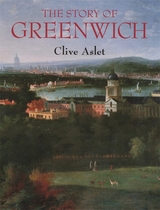 The Story of Greenwich
Clive Aslet
Harvard University Press, 1999 To open this book is to enter a world of living history, of pomp and pageantry, royal fiats and popular revolutions, naval exploits and mercantile triumphs, and soaring scientific achievements. This is the world of Greenwich, England, home of a now mysterious temple in the days of the ancient Romans and of the Millennium Dome in our own, biding its time on the Thames and, flush with the line of longitude zero, keeping the time of the world. Clive Aslet conducts us through the streets and byways of this storied city, showing us scenes from its prodigious history at every turn. His richly illustrated book is a journey through time as it has been lived, and marked, in this city like no other in the world.
Here Sir Walter Raleigh laid down his cloak for Elizabeth I. Here Elizabeth signed the death warrant for Mary, Queen of Scots. A place of royal haunts and regal courting, Greenwich was also the site of Wat Tyler's revolt in the fourteenth century. Home to the navy that supported the world's greatest maritime empire, the city saw the funeral of England's most celebrated naval hero, Admiral Horatio Nelson. Aslet revisits these events, immersing us in courtly drama and popular ferment, cosmopolitan grandeur and bustling commerce. He shows us the remarkable buildings that hold so much of Greenwich's history, from the palaces embellished by Henry VIII to the structures designed by England's renowned architects--from Christopher Wren and Inigo Jones--to the observatories that house the massive telescopes and nautical clocks that have put Greenwich at the forefront of scientific invention and discovery.
Whether recalling the literary marks that writers such as Marlowe and Dickens have left on the city, or tracking London's first railway into Greenwich, or recounting the tales of navigators and statesmen, monarchs and common and uncommon folk, this book tells the story of Greenwich for all time.
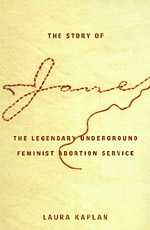 The Story of Jane: The Legendary Underground Feminist Abortion Service
Laura Kaplan
University of Chicago Press, 1997 "In the four years before the Supreme Court's 1973 Roe vs. Wade decision, most women determined to get abortions had to subject themselves to the power of illegal, unregulated abortionists...But a Chicago woman who happened to stumble across a secret organization code-named 'Jane' had an alternative. Laura Kaplan, who joined Jane in 1971, has pieced together the histories of the anonymous (here identified only by pseudonyms), average-sounding women who transformed themselves into outlaws."—Cleveland Plain Dealer
"The Story of Jane is a piece of women's history in step with feminist theory demanding that women tell their own stories. It serves to remind people of an important and often overlooked moment in the women's rights movement."—Seattle Weekly
"Laura Kaplan's The Story of Jane is the first book to chronicle this controversial sliver of history, and it is a fascinating, if partisan, close-up of the group."—Newsday
"[Kaplan] draws on her personal recollections and interviews with Jane members and clients and the doctors who performed the abortions to provide a well-written, detailed history of this radical group."—Publisher's Weekly
"Weaving together the voices and memories of her former co-workers, Kaplan recounts how the group initially focused on counseling women and helping them find reliable, reasonably priced doctors....Kaplan's account of this remarkable story recaptures the political idealism of the early '70s...23 years after Roe vs. Wade, the issues and memories raised by the books are close and all too relevant."—K Kaufmann, San Francisco Chronicle
"Laura Kaplan's The Story of Jane is the first book to chronicle this controversial sliver of history, and it is a fascinating, if partisan, close-up of the group....The Story of Jane succeeds on the steam of Kaplan's gripping subject and her moving belief in the power of small-scale change."—Cynthia Leive, New York Newsday
"During the four years before the Supreme Court's Roe v. Wade decision legalized abortion in 1973, the 100 members of Jane helped some 11,000 women end their pregnancies....There is more in this remarkable book that will further raise eyebrows....Kaplan's engrossing tales of the quiet courage of the women who risked their reputations and freedom to help others may remind many readers of other kinds of outlaws who have resisted tyranny throughout history."—Chicago Sun-Times
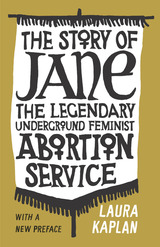 The Story of Jane: The Legendary Underground Feminist Abortion Service
Laura Kaplan
University of Chicago Press, 1997 "In the four years before the Supreme Court's 1973 Roe vs. Wade decision, most women determined to get abortions had to subject themselves to the power of illegal, unregulated abortionists...But a Chicago woman who happened to stumble across a secret organization code-named 'Jane' had an alternative. Laura Kaplan, who joined Jane in 1971, has pieced together the histories of the anonymous (here identified only by pseudonyms), average-sounding women who transformed themselves into outlaws."—Cleveland Plain Dealer
"The Story of Jane is a piece of women's history in step with feminist theory demanding that women tell their own stories. It serves to remind people of an important and often overlooked moment in the women's rights movement."—Seattle Weekly
"Laura Kaplan's The Story of Jane is the first book to chronicle this controversial sliver of history, and it is a fascinating, if partisan, close-up of the group."—Newsday
"[Kaplan] draws on her personal recollections and interviews with Jane members and clients and the doctors who performed the abortions to provide a well-written, detailed history of this radical group."—Publisher's Weekly
"Weaving together the voices and memories of her former co-workers, Kaplan recounts how the group initially focused on counseling women and helping them find reliable, reasonably priced doctors....Kaplan's account of this remarkable story recaptures the political idealism of the early '70s...23 years after Roe vs. Wade, the issues and memories raised by the books are close and all too relevant."—K Kaufmann, San Francisco Chronicle
"Laura Kaplan's The Story of Jane is the first book to chronicle this controversial sliver of history, and it is a fascinating, if partisan, close-up of the group....The Story of Jane succeeds on the steam of Kaplan's gripping subject and her moving belief in the power of small-scale change."—Cynthia Leive, New York Newsday
"During the four years before the Supreme Court's Roe v. Wade decision legalized abortion in 1973, the 100 members of Jane helped some 11,000 women end their pregnancies....There is more in this remarkable book that will further raise eyebrows....Kaplan's engrossing tales of the quiet courage of the women who risked their reputations and freedom to help others may remind many readers of other kinds of outlaws who have resisted tyranny throughout history."—Chicago Sun-Times
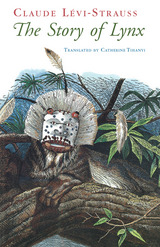 The Story of Lynx
Claude Lévi-Strauss
University of Chicago Press, 1995 "In olden days, in a village peopled by animal creatures, lived Wild Cat (another name for Lynx). He was old and mangy, and he was constantly scratching himself with his cane. From time to time, a young girl who lived in the same cabin would grab the cane, also to scratch herself. In vain Wild Cat kept trying to talk her out of it. One day the young lady found herself pregnant; she gave birth to a boy. Coyote, another inhabitant of the village, became indignant. He talked all of the population into going to live elsewhere and abandoning the old Wild Cat, his wife, and their child to their fate . . . "
So begins the Nez Percé myth that lies at the heart of The Story of Lynx, Claude Lévi-Strauss's most accessible examination of the rich mythology of American Indians. In this wide-ranging work, the master of structural anthropology considers the many variations in a story that occurs in both North and South America, but especially among the Salish-speaking peoples of the Northwest Coast. He also shows how centuries of contact with Europeans have altered the tales.
Lévi-Strauss focuses on the opposition between Wild Cat and Coyote to explore the meaning and uses of gemellarity, or twinness, in Native American culture. The concept of dual organization that these tales exemplify is one of non-equivalence: everything has an opposite or other, with which it coexists in unstable tension. In contrast, Lévi-Strauss argues, European notions of twinness—as in the myth of Castor and Pollux—stress the essential sameness of the twins. This fundamental cultural difference lay behind the fatal clash of European and Native American peoples.
The Story of Lynx addresses and clarifies all the major issues that have occupied Lévi-Strauss for decades, and is the only one of his books in which he explicitly connects history and structuralism. The result is a work that will appeal to those interested in American Indian mythology.
 The Story of Manu
Allasani Peddana
Harvard University Press, 2015 The literary jewel of Telegu civilization, translated for the first time into any language.
Manucaritramu, or The Story of Manu, by the early sixteenth-century poet Allasani Peddana, is the definitive literary monument of Telugu civilization and a powerful embodiment of the imperial culture of Vijayanagara, the last of the great premodern south Indian states. It is the story of Svarochisha Manu, who ruled over the previous cosmic age and who serves here as prototype for the first human being. Peddana explores the dramatic displacements, imaginative projections, and intricate workings of desire necessary for Manu’s birth and formation. The Story of Manu is also a book about kingship and its exigencies at the time of Krishnadevaraya, the most powerful of the Vijayanagara rulers, who was a close friend and patron of the poet.
The Story of Manu, presented in the Telugu script alongside the first translation into any language, is a true masterpiece of early modern south Indian literature.
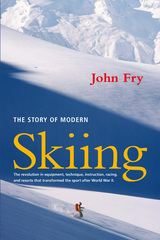 The Story of Modern Skiing
John Fry
University Press of New England, 2010 This is the definitive history of the sport that has exhilarated and infatuated about 30 million Americans and Canadians over the course of the last fifty years. Consummate insider John Fry chronicles the rise of a ski culture and every aspect of the sport’s development, including the emergence of the mega-resort and advances in equipment, technique, instruction, and competition. The Story of Modern Skiing is laced with revelations from the author’s personal relationships with skiing greats such as triple Olympic gold medalists Toni Sailer and Jean-Claude Killy, double gold medalist and environmental champion Andrea Mead Lawrence, first women’s World Cup winner Nancy Greene, World Alpine champion Billy Kidd, Sarajevo gold and silver medalists Phil and Steve Mahre, and industry pioneers such as Vail founder Pete Seibert, metal ski designer Howard Head, and plastic boot inventor Bob Lange. Fry writes authoritatively of alpine skiing in North America and Europe, of Nordic skiing, and of newer variations in the sport: freestyle skiing, snowboarding, and extreme skiing. He looks closely at skiing’s relationship to the environment, its portrayal in the media, and its response to social and economic change. Maps locating major resorts, records of ski champions, and a timeline, bibliography, glossary, and index of names and places make this the definitive work on modern skiing. Skiers of all ages and abilities will revel in this lively tale of their sport’s heritage.
The Story of My Boyhood and Youth
John Muir
University of Wisconsin Press, 1965 Muir recounts in vivid detail the three worlds of his early life: his first eleven years in Scotland; the years 1849–1860 in the central Wisconsin wilderness; and two-and-a-half most inventive years at the University of Wisconsin during that institution’s infancy.
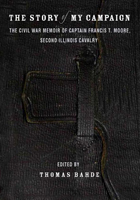 The Story of My Campaign: The Civil War Memoir of Captain Francis T. Moore, Second Illinois Calvary
Thomas Bahde
Northern Illinois University Press, 2011
In 1861, Francis Moore appeared to be a perfectly ordinary, twenty-three year old man: a carriage
maker in the bustling Mississippi River town of Quincy, Illinois. And there he might well have lived out his life in unadventurous comfort. But then the Civil War burst out, and Moore, along with most of his friends, like young men North and South, rushed to enlist in the army. His cavalry regiment soon set off for what proved to be four years of warfare, plunging him into harrowing experiences of battle that would have been unimaginable back in his small hometown and that uprooted him, body and soul, for the remainder of his life.
Enter The Story of My Campaign, the remarkable Civil War memoir of Captain Francis T. Moore, which historian Thomas Bahde here offers in an original edition to contemporary readers for the first time. Moore began the war as a private in Company L of the Second Illinois Volunteer Cavalry, and was soon promoted to lieutenant and then captain of his company. He spent most of the war fighting guerillas in Missouri, Kentucky, Tennessee, Mississippi, and Louisiana. He fought at the battle of Belmont, Kentucky, in 1861 and raided Mississippi with General Benjamin Grierson in 1864. He also battled Confederate leaders, such as Nathan Bedford Forrest and Leonidas Polk. His unflinching chronicle of small-scale and irregular warfare, combined with his intimate account of military life, make his memoir as absorbing as it is historically valuable.
Moore was also an unusually articulate young man with strong opinions about the war, the preservation of the Union, the institution of slavery, African Americans, the people of the South, and the Confederacy: his wartime observations and his postwar reflections on these themes provide not only a captivating narrative, they also provide readers with an opportunity to examine how the conflict endured in the memory of its veterans and the nation they served.
The enormous social upheaval and staggering loss of human life during the Civil War cannot be overstated: the estimated 2 percent of Americans— or 620,000 people
—who died in the conflict would be the equivalent of 6,000,000 people today. The Story of My Campaign offers an indelible account of this conflagration from the perspective of one of its survivors. It is evidence of a hard war fought—and the long hard life that followed.
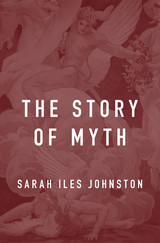 The Story of Myth
Sarah Iles Johnston
Harvard University Press, 2018 Greek myths have long been admired as beautiful, thrilling stories but dismissed as serious objects of belief. For centuries scholars have held that Greek epics, tragedies, and the other compelling works handed down to us obscure the “real” myths that supposedly inspired them. Instead of joining in this pursuit of hidden meanings, Sarah Iles Johnston argues that the very nature of myths as stories—as gripping tales starring vivid characters—enabled them to do their most important work: to create and sustain belief in the gods and heroes who formed the basis of Greek religion.
By drawing on work in narratology, sociology, and folklore studies, and by comparing Greek myths not only to the myths of other cultures but also to fairy tales, ghost stories, fantasy works, modern novels, and television series, The Story of Myth reveals the subtle yet powerful ways in which these ancient Greek tales forged enduring bonds between their characters and their audiences, created coherent story-worlds, and made it possible to believe in extraordinary gods. Johnston captures what makes Greek myths distinctively Greek, but simultaneously brings these myths into a broader conversation about how the stories told by all cultures affect our shared view of the cosmos and the creatures who inhabit it.
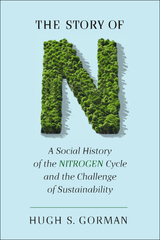 The Story of N: A Social History of the Nitrogen Cycle and the Challenge of Sustainability
Gorman, Hugh S.
Rutgers University Press, 2013 In The Story of N, Hugh S. Gorman analyzes the notion of sustainability from a fresh perspective—the integration of human activities with the biogeochemical cycling of nitrogen—and provides a supportive alternative to studying sustainability through the lens of climate change and the cycling of carbon. It is the first book to examine the social processes by which industrial societies learned to bypass a fundamental ecological limit and, later, began addressing the resulting concerns by establishing limits of their own The book is organized into three parts. Part I, “The Knowledge of Nature,” explores the emergence of the nitrogen cycle before humans arrived on the scene and the changes that occurred as stationary agricultural societies took root. Part II, “Learning to Bypass an Ecological Limit,” examines the role of science and market capitalism in accelerating the pace of innovation, eventually allowing humans to bypass the activity of nitrogen-fixing bacteria. Part III, “Learning to Establish Human-Defined Limits,” covers the twentieth-century response to the nitrogen-related concerns that emerged as more nitrogenous compounds flowed into the environment. A concluding chapter, “The Challenge of Sustainability,” places the entire story in the context of constructing an ecological economy in which innovations that contribute to sustainable practices are rewarded.
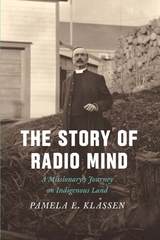 The Story of Radio Mind: A Missionary's Journey on Indigenous Land
Pamela E. Klassen
University of Chicago Press, 2018 At the dawn of the radio age in the 1920s, a settler-mystic living on northwest coast of British Columbia invented radio mind: Frederick Du Vernet—Anglican archbishop and self-declared scientist—announced a psychic channel by which minds could telepathically communicate across distance. Retelling Du Vernet’s imaginative experiment, Pamela Klassen shows us how agents of colonialism built metaphysical traditions on land they claimed to have conquered.
Following Du Vernet’s journey westward from Toronto to Ojibwe territory and across the young nation of Canada, Pamela Klassen examines how contests over the mediation of stories—via photography, maps, printing presses, and radio—lucidly reveal the spiritual work of colonial settlement. A city builder who bargained away Indigenous land to make way for the railroad, Du Vernet knew that he lived on the territory of Ts’msyen, Nisga’a, and Haida nations who had never ceded their land to the onrush of Canadian settlers. He condemned the devastating effects on Indigenous families of the residential schools run by his church while still serving that church. Testifying to the power of radio mind with evidence from the apostle Paul and the philosopher Henri Bergson, Du Vernet found a way to explain the world that he, his church and his country made.
Expanding approaches to religion and media studies to ask how sovereignty is made through stories, Klassen shows how the spiritual invention of colonial nations takes place at the same time that Indigenous peoples—including Indigenous Christians—resist colonial dispossession through stories and spirits of their own.
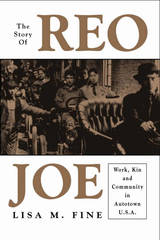 Story Of Reo Joe: Work, Kin, And Community
Lisa M. Fine
Temple University Press, 2004 The Reo Motor Car Company operated in Lansing, Michigan, for seventy years, and encouraged its thousands of workers to think of themselves as part of a factory family. Reo workers, most typically white, rural, native-born Protestant men, were dubbed Reo Joes. These ordinary fellows had ordinary aspirations: job security, decent working conditions, and sufficient pay to support a family. They treasured leisure time for family activities (many sponsored by the company), hunting, and their fraternal organizations. Even after joining a union, Reo Joes remained loyal to the company and proud of the community built around it. Lisa M. Fine tells the Reo story from the workers' perspective on the vast social, economic, and political changes that took place in the first three quarters of the twentieth century. Lisa Fine explores their understanding of the city where they lived, the industry that employed them, and the ideas about work, manhood, race, and family that shaped their identities. The Story of Reo Joe is, then, a book about historical memory; it challenges us to reconsider what we think we know about corporate welfare, unionization, de-industrialization, and working-class leisure.
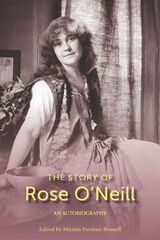 The Story of Rose O'Neill: An Autobiography
Edited by Miriam Forman-Brunell
University of Missouri Press, 2022 To most of us, Rose O'Neill is best known as the creator of the Kewpie doll, perhaps the most widely known character in American culture until Mickey Mouse. Prior to O'Neill's success as a doll designer, however, she already had earned a reputation as one of the best-known female commercial illustrators. Her numerous illustrations appeared in America's leading periodicals, including Life, Harper's Bazaar, and Cosmopolitan. While highly successful in the commercial world, Rose O'Neill was also known among intellectuals and artists for her contributions to the fine arts and humanities. In the early 1920s, her more serious works of art were exhibited in galleries in Paris and New York City. In addition, she published a book of poetry and four novels. Yet, who was Rose Cecil O'Neill? Over the course of the twentieth century, Rose O'Neill has captured the attention of journalists, collectors, fans, and scholars who have disagreed over whether she was a sentimentalist or a cultural critic. Although biographers of Rose O'Neill have drawn heavily on portions of her previously unpublished autobiography, O'Neill's own voice--richly revealed in her well-written manuscript--has remained largely unheard until now. In these memoirs, O'Neill reveals herself as a woman who preferred art, activism, and adventure to motherhood and marriage. Featuring photographs from the O'Neill family collection, The Story of Rose O'Neill fully reveals the ways in which she pushed at the boundaries of her generation's definitions of gender in an effort to create new liberating forms.
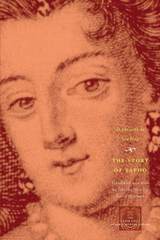 The Story of Sapho
Madeleine de Scudery
University of Chicago Press, 2003 Ridiculed for her Saturday salon, her long romance novels, and her protofeminist ideas, Madeleine de Scudéry (1607-1701) has not been treated kindly by the literary establishment. Yet her multivolume novels were popular bestsellers in her time, translated almost immediately into English, German, Italian, Spanish, and even Arabic.
The Story of Sapho makes available for the first time in modern English a self-contained section from Scudéry's novel Artamène ou le Grand Cyrus, best known today as the favored reading material of the would-be salonnières that Molière satirized in Les précieuses ridicules. The Story tells of Sapho, a woman writer modeled on the Greek Sappho, who deems marriage slavery. Interspersed in the love story of Sapho and Phaon are a series of conversations like those that took place in Scudéry's own salon in which Sapho and her circle discuss the nature of love, the education of women, writing, and right conduct. This edition also includes a translation of an oration, or harangue, of Scudéry's in which Sapho extols the talents and abilities of women in order to persuade them to write.
 A Story of South Africa: J. M. Coetzee’s Fiction in Context
Susan Gallagher
Harvard University Press, 1991 With the publication of Age of Iron--winner of Britain's richest fiction prize, the Sunday Express Book of the Year for 1990--J. M. Coetzee is now recognized as one of the foremost writers of our day. In this timely study of Coetzee's fiction, Susan Gallagher places his work in the context of South African history and politics. Her close historical readings of Coetzee's six major novels explore how he lays bare the "dense complicity between thought and language" in South Africa.
Following a penetrating description of the unique difficulties facing writers under apartheid, Gallagher recounts how history, language, and authority have been used to marginalize the majority of South Africa's people. Her story reaches from the beginnings of Afrikaner nationalism to the recent past: the Sharpeville massacre, the jailing of Nelson Mandela, and the Soweto uprising.
As a result of his rejection of liberal and socialist realism, Coetzee has been branded an escapist, but Gallagher ably defends him from this charge. Her cogent, convincingly argued examination of his novels demonstrates that Coetzee's fictional response is "apocalyptic in the most profound Biblical sense, obscurely pointing toward ineffable realities transcending discursive definition." Viewing Coetzee's fiction in this context, Gallagher describes a new kind of novel "that arises out of history, but also rivals history." This analysis reveals Coetzee's novels to be profound responses to their time and place as well as richly rewarding investigations of the storyteller's art.
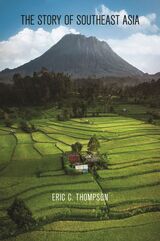 The Story of Southeast Asia
Edited by Eric Thompson
National University of Singapore Press, 2024 A complete narrative history of Southeast Asia.
The oldest figurative cave paintings in the world are found on the island of Sulawesi in Indonesia. Hand stencils and animals painted some 45,000 years ago attest to a long history of human creativity. The Story of Southeast Asia tells how the peoples of the region have crafted their diverse societies and cultures over thousands of years. Southeast Asia has been a remarkable crossroads of global connections for millennia. Whereas other regions have been defined by centralizing forces, Southeast Asia’s story is one of complex networks of trade, ideas, and social relationships. Southeast Asians have created, localized, and remade their own cultural values by drawing on influences from around the world.
Marshalling the latest literature from anthropology, archaeology, history, and other disciplines, Eric C. Thompson highlights broad themes that cut across history: including the making—and evasion—of states, adoption of diverse religious practices, tolerance and flexibility regarding gender, processes of forging modern identities, struggles over sovereignty, and the making of modern nations in a postcolonial world. This readable, single-volume history reckons with the narrative pull of familiar colonial and national perspectives but maintains a regional and deep-historical focus. It will be a stimulating read for scholars as well as students and newcomers to Southeast Asian history.
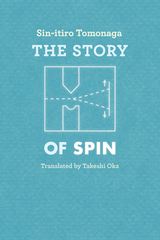 The Story of Spin
Sin-itiro Tomonaga
University of Chicago Press, 1998 All atomic particles have a particular "spin," analogous to the earth's rotation on its axis. The quantum mechanical reality underlying spin is complex and still poorly understood. Sin-itiro Tomonaga's The Story of Spin remains the most complete and accessible treatment of spin, and is now available in English translation. Tomonaga tells the tale of the pioneers of physics and their difficult journey toward an understanding of the nature of spin and its relationship to statistics. His clear unfolding of the tale of spin is invaluable to students of physics, chemistry, and astronomy, and his description of the historical development of spin will interest historians and philosophers of science.
"This piece of the history of physics will provide excellent and exciting reading. . . . It also provides the personal touch of an expert in the field that is so often lacking in the physics literature. I recommend it very highly."—Fritz Rohrlich, Physics Today
Sin-itiro Tomonaga was awarded the Nobel Prize for Physics in 1965.
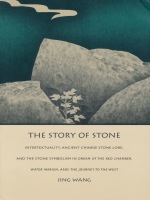 The Story of Stone: Intertextuality, Ancient Chinese Stone Lore, and the Stone Symbolism in Dream of the Red Chamber, Water Margin, and The Journey to the West
Jing Wang
Duke University Press, 1992 In this pathbreaking study of three of the most familiar texts in the Chinese tradition—all concerning stones endowed with magical properties—Jing Wang develops a monumental reconstruction of ancient Chinese stone lore. Wang’s thorough and systematic comparison of these classic works illuminates the various tellings of the stone story and provides new insight into major topics in traditional Chinese literature.
Bringing together Chinese myth, religion, folklore, art, and literature, this book is the first in any language to amass the sources of stone myth and stone lore in Chinese culture. Uniting classical Chinese studies with contemporary Western theoretical concerns, Wang examines these stone narratives by analyzing intertextuality within Chinese traditions. She offers revelatory interpretations to long-standing critical issues, such as the paradoxical character of the monkey in The Journey to the West, the circularity of narrative logic in The Dream of the Red Chamber, and the structural necessity of the stone tablet in Water Margin.
By both challenging and incorporating traditional sinological scholarship, Wang’s The Story of Stone reveals the ideological ramifications of these three literary works on Chinese cultural history and makes the past relevant to contemporary intellectual discourse. Specialists in Chinese literature and culture, comparative literature, literary theory, and religious studies will find much of interest in this outstanding work, which is sure to become a standard reference on the subject.
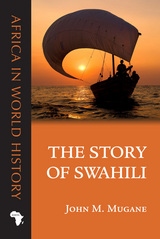 The Story of Swahili
John M. Mugane
Ohio University Press, 2015 Swahili was once an obscure dialect of an East African Bantu language. Today more than one hundred million people use it: Swahili is to eastern and central Africa what English is to the world. From its embrace in the 1960s by the black freedom movement in the United States to its adoption in 2004 as the African Union’s official language, Swahili has become a truly international language. How this came about and why, of all African languages, it happened only to Swahili is the story that John M. Mugane sets out to explore. The remarkable adaptability of Swahili has allowed Africans and others to tailor the language to their needs, extending its influence far beyond its place of origin. Its symbolic as well as its practical power has evolved from its status as a language of contact among diverse cultures, even as it embodies the history of communities in eastern and central Africa and throughout the Indian Ocean world. The Story of Swahili calls for a reevaluation of the widespread assumption that cultural superiority, military conquest, and economic dominance determine a language’s prosperity. This sweeping history gives a vibrant, living language its due, highlighting its nimbleness from its beginnings to its place today in the fast-changing world of global communication.
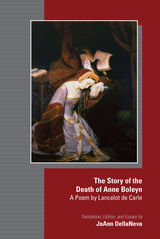 The Story of the Death of Anne Boleyn: A Poem by Lancelot de Carle
Edited, Translated, and with Essays by JoAnn DellaNeva
Arizona Center for Medieval and Renaissance Studies, 2021 The Story of the Death of Anne Boleyn is a critical edition and translation of a long narrative poem written by the secretary to the French ambassador in London within two weeks of Anne Boleyn’s execution. It was intended as a diplomatic dispatch, relating the astonishing news of the queen’s demise (along with that of five alleged lovers). Uniquely among diplomatic correspondence, this dispatch was written in verse form. It thus straddles the domains of literature and history, of chronicle and fiction. The base text for this edition is a previously unstudied manuscript housed at the British Library. Variants are given from all other known manuscripts found in Europe, including several key verses that were previously unpublished and that shed new light on the interpretation of the poem. The book features a sense-for-sense translation into modern English in free verse form, along with extensive explanatory notes. It also provides a study focusing on the historical background to the poem, an essay on the poet and the reception of his work, and a literary analysis of the poem.
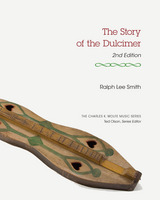 The Story of the Dulcimer
Ralph Lee Smith
University of Tennessee Press, 2016 "This is a fascinating, well-researched text that scholars, musicians, collectors, and luthiers will treasure as a gem of information.”
—Scott Suter, author of Shenandoah Valley Folklife
Perhaps no instrument better represents the music of Appalachia than the fretted dulcimer. The instrument was no longer confined to back porches and local music halls when Jean Ritchie so melodically thrust herself and her dulcimer into the national limelight during the folk revival of the 1950s. But where did the dulcimer, known to exist in no other folk culture in the world, come from?
In The Story of the Dulcimer, Ralph Lee Smith traces the dulcimer’s beginnings back to European immigration to America in the eighteenth and early nineteenth centuries. As German immigrants settled in Pennsylvania and Appalachia, they brought with them scheitholts, a type of northern European fretted zither. As German immigrants intermingled with English and Scotch-Irish immigrants, the scheitholt, which was customarily played to a slower tempo in German cultural music, began to be musically integrated into the faster tempos of English and Scotch-Irish ballads and folk songs. As Appalachia absorbed an increasing flow of English and Scotch-Irish immigrants and the musical traditions they brought with them, the scheitholt steadily evolved into an instrument that reflected this folk music amalgamation, and the modern dulcimer was born.
In this second edition, Smith brings the dulcimer’s history into the twenty-first century with a new preface and updates to the original edition. Copiously illustrated with images of both antique scheitholts and contemporary dulcimers, The Story of the Dulcimer is a testament to the enduring musical heritage of Appalachia and solves one of the region’s musical mysteries.
RALPH LEE SMITH is a musician specializing in traditional Appalachian music and, along with the late Jean Ritchie, is widely regarded as the leading authority on the music and history of the dulcimer. He is the author of seven collections of folk songs relating to the dulcimer. He recently published a memoir/songbook, Greenwich Village: The Happy Folk Singing Days, 1950s–1960s, which recounts his time in New York City during the folk revival.
The Story of the Savannah: An Episode in Maritime Labor–Management Relations
David Kuechle
Harvard University Press, 1971 From her conception in 1956, the N.S. Savannah—the world’s first and only nuclear-powered merchant ship—was ill-starred. The Savannah was meant to revitalize the American Merchant Marine. She never fulfilled that hope. Before her first sea trial, the Savannah was embroiled in problems which reflected the complex nature of the entire maritime industry. In this detailed and controversial history, David Kuechle proposes some answers to the age-old maritime labor relations problem, assessing the implications of the Savannah story, not only for the maritime industry but for other industries concerned with technological change.
The Story of the Sacred Harp, 1844-1944
George Pullen Jackson
Vanderbilt University Press, 1944 The Sacred Harp is the most famous of the shape-note hymnals, a collection of over five hundred four-part a cappella hymns dating back over a hundred and fifty years. Shape-note singing itself is seeing a resurgence in popularity with sings being organized all over the country. And yet, George Pullen Jackson's groundbreaking history of the first hundred years of the hymnal has been out of print and hard to come by for decades. But now, The Story of the Sacred Harp, 1844-1944 is back in print and available for music lovers, historians, and librarians alike.
The Story of Tonle
Mario Rigoni Stern
Northwestern University Press, 1998 Tönle Bintarn's story takes place in the Veneto region, which once bordered the Austro-Hungarian Empire and where smuggling provided a means of subsistence to the peasants. Having run afoul of revenue agents, Tönle must seek refuge beyond the frontier in Central Europe, where year after year he survives by doing odd jobs and working as an itinerant print peddler, a horse trainer, and a gardener. When he is pardoned he returns home for good to find his children are grown and nothing remains for him but to tend his sheep, while around him Europe spins toward the catastrophe of the Great War--the conflict that will destroy Veneto's unique way of life.
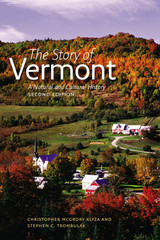 The Story of Vermont: A Natural and Cultural History, Second Edition
Christopher McGrory Klyza and Stephen C. Trombulak
University Press of New England, 2015 In this second edition of their classic text, Klyza and Trombulak use the lens of interconnectedness to examine the geological, ecological, and cultural forces that came together to produce contemporary Vermont. They assess the changing landscape and its inhabitants from its pre-human evolution up to the present, with special focus on forests, open terrestrial habitats, and the aquatic environment. This edition features a new chapter covering from 1995 to 2013 and a thoroughly revised chapter on the futures of Vermont, which include discussions of Tropical Storm Irene, climate change, eco-regional planning, and the resurgence of interest in local food and energy production. Integrating key themes of ecological change into a historical narrative, this book imparts specific information about Vermont, speculates on its future, and fosters an appreciation of the complex synergy of forces that shaped this region. This volume will interest scholars, students, and Vermonters intrigued by the state’s long-term natural and human history.
The Story of Wamba: Julian of Toledo's Historia Wambae regis
Julian of Toledo
Catholic University of America Press, 2005 The Story of Wamba offers the first complete English translation of Julian's work. The text is fully annotated and preceded by a thorough introduction to its historical and literary backgrounds.
The Story of What Is Broken Is Whole: An Aurora Levins Morales Reader
Aurora Levins Morales
Duke University Press, 2024 The Story of What Is Broken Is Whole collects for the first time fifty years of writing by Puerto Rican Jewish feminist and radical thinker Aurora Levins Morales. Combining well-known excerpts from her books with out-of-print and harder to find ephemeral works and unpublished pieces, this collection weaves together stories of bodies, ecologies, Indigeneity, illness, travel, sexuality, and more. As Levins Morales reflects on her use of storytelling as a tool for change, she gathers the threads of lives and places sacrificed to greed and extraction while centering care for our individual bodyminds and those of our kin, communities, and movements. This comprehensive and essential collection provides an unprecedented window into the breadth and depth of the work of one of the most significant thinkers of our time.
Story of Willow Run
Marion F. Wilson
University of Michigan Press, 1956 The Story of Willow Run is a success story—the life history of a small community, the "Bomber City" that had sprung up in World War II. It tells what a group of returning veterans and their families did to make into a progressive, thriving settlement.Who are the people of Willow Run? What were their needs, their problems? How did they accept and meet the challenge of making a home town for themselves? Marion F. Wilson tells their story—a tribute to American pioneering courage. Today, Willow Run Village is growing into a permanent community, proud of its schools, its churches, playgrounds, shops, and homes—and, above all, its community spirit.
The Story of Your Obstinate Survival
Daniel Khalastchi
University of Wisconsin Press, 2024 Daniel Khalastchi boldly strides across a landscape of smoldering fires, unmarked boxes, and pictures of senators in airplane bathrooms. Exhilarating and innovative, The Story of Your Obstinate Survival collapses genre and upends narrative convention with dazzling wordplay and thrilling imagery. Inhabiting a world trapped somewhere between dreams and reality, these poems fuse the political and personal, public and private, pleasing and piquant, to examine both calamities and the dogged persistence required to endure. On display throughout is Khalastchi’s exceptional capacity for detail and specificity, filling up this world to the point of breaking but never beyond, insisting on survival despite it all.
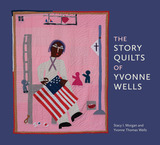 The Story Quilts of Yvonne Wells
Stacy I. Morgan
University of Alabama Press, 2024 The introduction and definitive guide to the work of celebrated folk artist Yvonne Wells, whose vibrant, innovative story quilts address an array of historic, cultural, and religious themes The Story Quilts of Yvonne Wells is an introduction and definitive guide to the self-taught quilter whose expansive body of work serves as testament to the sweeping tides of American life and Wells’s significance as a major figure within the folk art and art world writ large. Beginning when she was nearly 40 years old and without formal training, Wells created her first quilt for practical use but was soon hand stitching appliqué figures into bold, original designs that unleashed her voice as a storyteller. Incorporating a wide variety of symbolic materials and unconventional objects—“anything I can stick a needle in”—Wells’s vivid story quilts reveal a fearless and encyclopedic vision ranging from the intimately autobiographical to iconic scenes from African American history, the Bible, Southern culture, and contemporary headlines. The result of years of close collaboration between Stacy I. Morgan and Wells herself, The Story Quilts of Yvonne Wells is richly illustrated with more than 100 quilts accompanied by narratives about each, told in the artist's own words, and interspersed with in-depth essays documenting Wells’s unique artistic practice and creative journey during her five-decade art career.
|
|
